WWII

THE GREATEST GENERATION THE THUNDERING HERD JANUARY 2, 1945
THE UNKNOWN HEROES OF THE 49TH ARMORED INFANTRY BATTALION

The blessings of fate allowed me to write the book that my grandfather himself wanted to do. Through the publication of his story, I have been introduced to others who want to tell their family member’s story. This is the story of the unknown heroes of the 49th Armored Infantry Battalion and the 8th Armored Division of World War II. This book is dedicated to Richard Deverter and in memory of the soldiers of the “Thundering Herd” 8th Armored Division. May their memory live on forever in our hearts, in our minds, and in our history. They were the Greatest Generation and will never be replaced.
 - Daniel Ramey
- Daniel Ramey
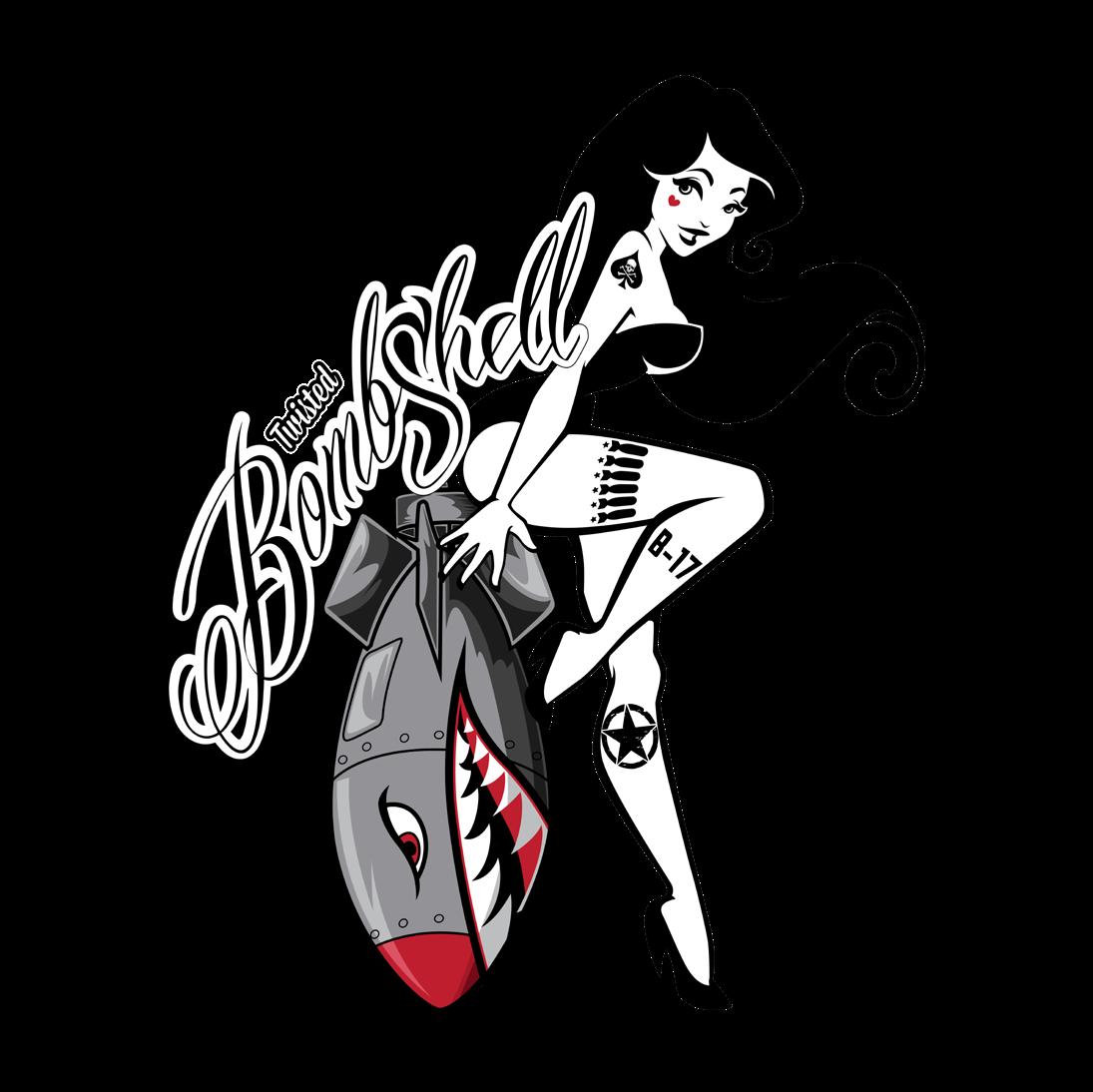

TWISTED
BOMBSHELL
TABLE OF CONTENTS
PREFACE CHAPTER 1
The Uniform
CHAPTER 2
The Beginning
CHAPTER 3
Normandy
CHAPTER 4
The Half-Track
CHAPTER 5
The Front Line
CHAPTER 6
Liberation of Buchenwald
PHOTO GALLERY
49th Armored Infantry Battalion

EPILOGUE
TWISTED BOMBSHELL

TWISTED BOMBSHELL
THIS IS THE STORY OF AN UNKNOWN HERO. THIS IS THE STORY OF RICHARD DEVERTER WHO WAS JUST ONE OF THOUSANDS OF BRAVE MEN JUST LIKE HIM.
PREFACE
My grandfather was the greatest man I have ever known. He was also the greatest loss I have ever had to endure. He passed away from leukemia when I was eleven and the hole in my heart has never healed. Even now, thirty one years later, I cherish every single memory I have of him. His name was Paul Joseph Guiton.

When I was young, my grandfather would always have me sit with him and watch black and white World War II documentaries. He would always emphasize to me how important they were and the history involved. As I got older, he would tell me bits and pieces why he made me sit and watch those

documentaries, but he never dove into the details. He would mention once in a while that he was in the Army and he drove truck. He told me that he was in Europe during the war and that was about the extent of it. I would see some items from his military locker from time to time like his uniform and some old black and white photos while in Europe.
It wasn’t until I started to research his true history in the military that it all started to make sense and come to light. As a matter of fact, the more I dug into his history, the more I found. The more I found, the more I was amazed by the details. It was like following a rabbit down the rabbit hole. The deeper I went, the more his story took twists and turns. The more it twisted and turned, the more I got lost in
© 2023 TWISTED BOMBSHELL
one of the biggest and best history lessons of my life.
You see in the end, I found out that my grandfather was a bonafide war hero. In every sense of the word, he was a man that did more in his lifetime than most of us could do in multiple lifetimes. I was able to publish the book that he always wanted to do but never found the time. I was able to share his story and the story of those who fought alongside him.
As more people have read my grandfather’s story, they have come forward with their own desire to know what their loved ones did during the war and to honor their memory. They have shared with me similar fond memories of growing up with their fathers and grandfathers and the brave women who loved them and supported them, not really knowing

the extent of what they did during World War II. Little did they know, they were also unknown heroes. In honoring their memories and their heroic deeds, it has now become my mission to research, explore, and share what I have found and collected.

This is the story of another unknown hero. This is the story of Richard Deverter, who served in the “Thundering Herd” 8th Armored Division of World War II. He was a soldier in the 49th Armored Infantry Battalion during the European Campaign.


THE UNIFORM


© 2023 TWISTED BOMBSHELL CHAPTER 1
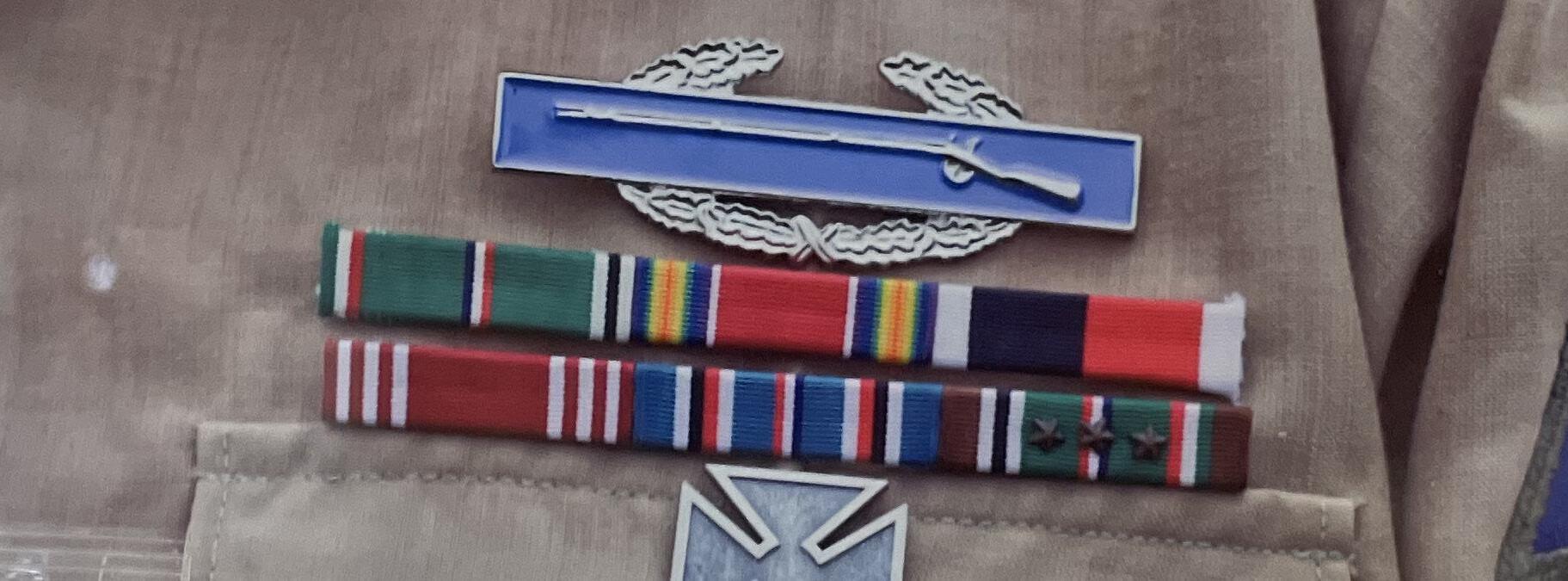

© 2023 TWISTED BOMBSHELL
THE UNIFORM

THE RESEARCH BEHIND EACH PATCH AND PIECE OF AN INDIVIDUAL’S UNIFORM IS LITERALLY THE START OF A NEW HISTORY LESSON FOR ME...
After months of research and publishing a book on my grandfather’s military history during World War II, I have been flooded with requests by others wanting to learn about the history of their own loved ones. I decided why not do some more investigative work and help them to find out about their personal heroes. After all, to me it is one ongoing history lesson and it would be an honor to pay homage to these brave individuals.
Rob Villeaume, a good friend of mine, was one of the first to contact me after learning of my grandfather’s book. He told me that he met this amazing man named Richard Deverter and was learning about his military history in World War II. Rob gathered some random information trying to figure out the basics of Richard’s military service and wanted me to help him honor this man. Visiting weekly, Rob built a rather special and trusting relationship with Richard and his wife Marie, who have been married now for 74 years. I had Rob send me pictures of everything he could find that Richard had in storage and of the items he proudly displayed in his living room. Rob sent me some pictures of Richard’s military uniform and photos of Richard’s dis-
play case full of patches, medals, and dog tags. Richard even had a scrap book that was created by and for members of his particular unit, the 49th Armored Infantry Battalion (AIB), Company B. With the pictures provided, I was
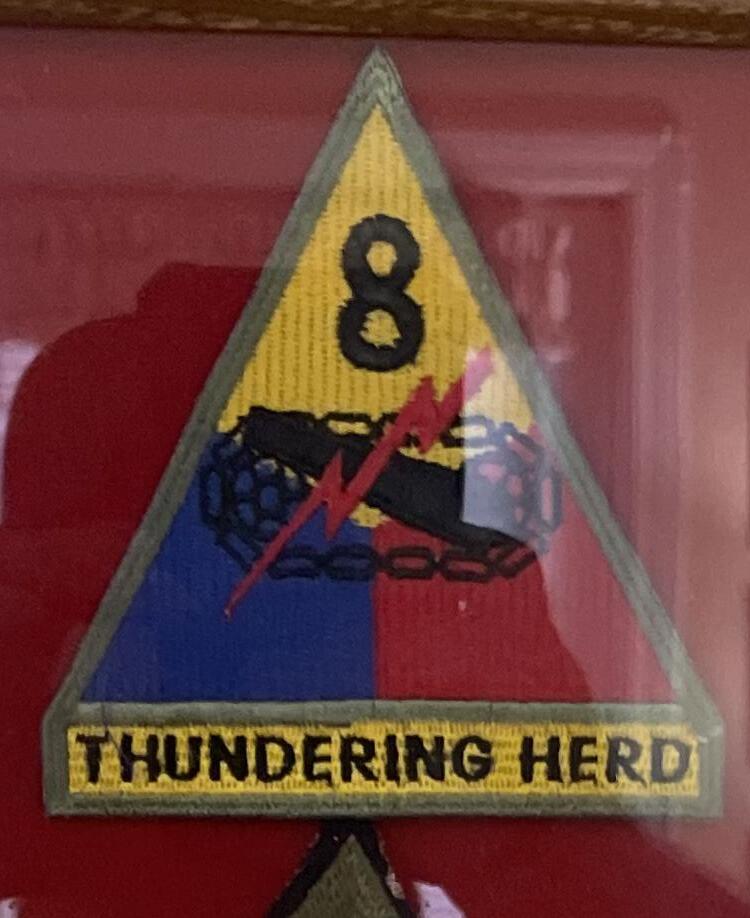
CHAPTER 1
his uniform and the corresponding medals in his display case, it looks like Richard earned the EuropeanAfrican-Middle Eastern Campaign Medal (it had a ribbon with three stars above it) indicating that he served in three campaigns, the American Campaign Medal, 50th Anniversary Victory in Europe Medal, the Army Good Conduct Medal, the Army of Occupation Medal given to those who had performed occupation service in either Germany, Italy, Austria, Japan or Korea, and a rainbow looking ribbon known as the World War II Victory Medal for obvious reasons.
able to start to research the history behind each patch, each ribbon, and each piece of regalia. Thanks to the scrap book, I was able to get a lot of information regarding events, locations, and personal experiences which will make this tribute to Richard Deverter and the 49th Armored Infantry Battalion more unique.
The research behind each patch and piece of an individual’s uniform is literally the start of a new history lesson for me and for anyone undertaking such a challenge. Within only an hour, I was already getting this feeling that once I start, there was no turning back. I was getting just as excited to learn about Richard’s history as I did when I was researching my grandfather’s. Looking at Richard’s uniform, I immediately noticed the European Campaign ribbons.
If you didn’t know, each ribbon on a uniform has a corresponding medal that goes with it and usually these medals are not worn on the uniform itself. Richard has his ribbons and medals on display in his living room and it was easy to identify which one was which. With regard to the various colorful ribbons on
In Richard’s display case was also two gold bars, which are usually attached to the uniform on the bottom left sleeve. They represent two six-month tours overseas. It looks like Richard spent at least a year in the European Campaign.
In the display case was also a pin of a golden eagle with a circle around it. My research shows that this pin is known as the “Ruptured Duck” and was only issued to those who were honorably discharged. Meaning Richard completed his time in the military and fulfilled his obligations with honor.
The most obvious item Richard had on his uniform and in his display case was the 8th Armored Division’s notorious “Thundering Herd” patch. To give you a quick history lesson about the “Thundering Herd” and to tie together the uniform and medals, Richard as noted earlier was part of the 49th Armored Infantry Battalion.
The 49th Armored Infantry Battalion was a part of the 8th Armored Division and landed in France in January 1945. They advanced rapidly to the Alsace region. From here, the “Iron Snake,” or “Thundering Herd,” division
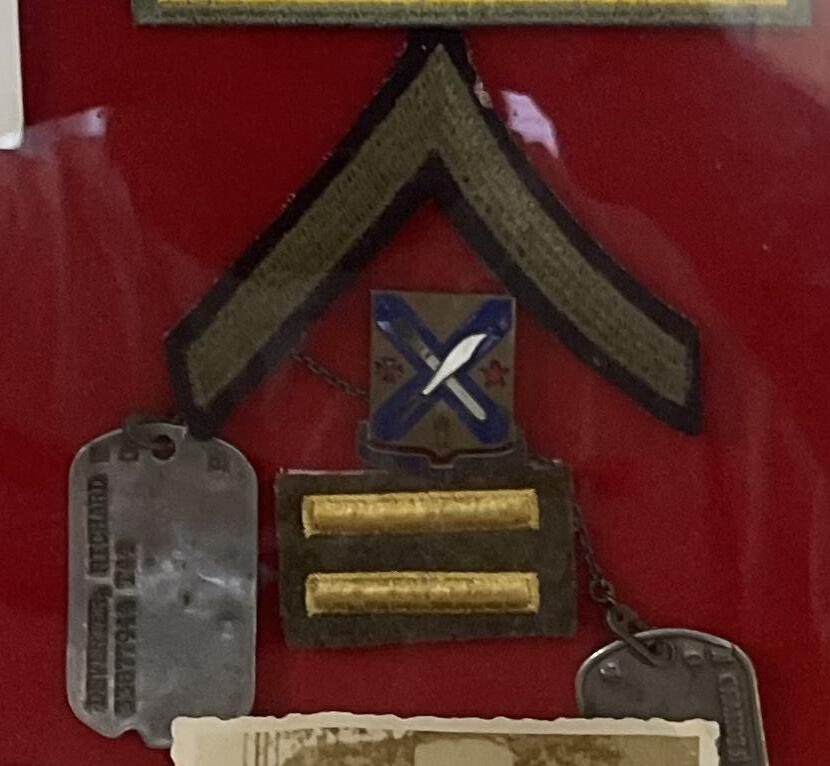
© 2023 TWISTED BOMBSHELL
THE UNIFORM CHAPTER
1

was deployed to the Netherlands in late February. In late March, they crossed the Rhine River and moved into the industrial Ruhr region, where it took part in heavy fighting. By war’s end, the 49th Armored Infantry Battalion had advanced to the Harz Mountains. As it moved into central Germany, they were involved in heavy combat and ultimately liberated Halberstadt-Zwieberge, a subcamp of the Buchenwald concentration camp, between April 12 and 17, 1945. More than 5,000 inmates were incarcerated in these subcamps, where they were forced to hollow out massive tunnels and build underground factories.
The 8th Armored Division and the 49th Armored Infantry Battalion were recognized as a liberating unit by the US Army’s Center of Military History and the United States Holocaust Memorial Museum in 1995. Individual awards for soldiers included 3 Legion of Merit Awards, 149 Silver Stars, 560 Bronze Stars, and 27 Air Medals. Richard Deverter was assigned to an Armored Infantry Battalion consisting of armored Half-tracks, which we will review in a later chapter in detail, and aided in the resupply of the entire 49th Armored Infantry Battalion. His three campaigns consisted of the Ardennes Campaign, Rhineland Campaign, and the Central Europe Campaign. The 8th Armored Division and the 49th Armored Infantry Battalion was activated on April 1, 1942, arrived on Continent January 6, 1945 D+213 (213 days after the D-Day invasion), spent 63 days in com-

bat, and took 35,494 Prisoners of War. They traveled and were stationed in England, France, Netherlands, and Germany. The following is a list of their command posts:
Tidworth, England
Bacqueville, Pont-a-Mousson, France
Heerlen, Simpelveld, Echt, Netherlands
Huckelhoven, Klinkham, Hinsbeck, Germany
Grefrath, Bruckenhausen, Friedrichsfeld, Germany
Kirchellen, Zweickel, Selm, Delbruck, Germany
Monninghausen, Erwitte, Soest, Werl, Germany
Wolfenbuttel, Halberstadt, Germany
Osterode, Gottingen, Germany


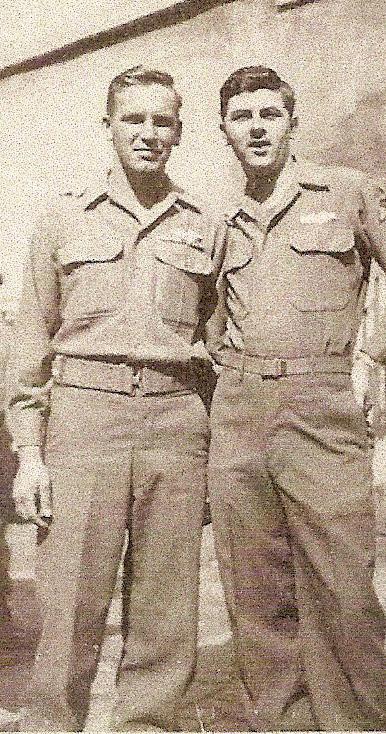
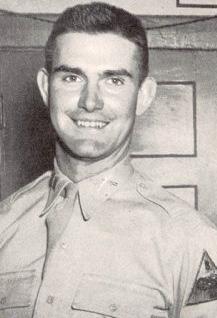


© 2023 TWISTED BOMBSHELL
THE UNIFORM


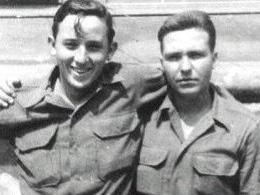


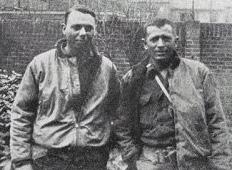
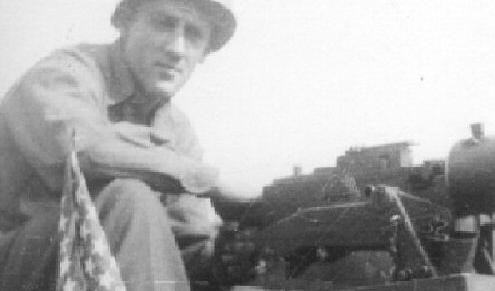

CHAPTER 1

© 2023 TWISTED BOMBSHELL
THE UNIFORM
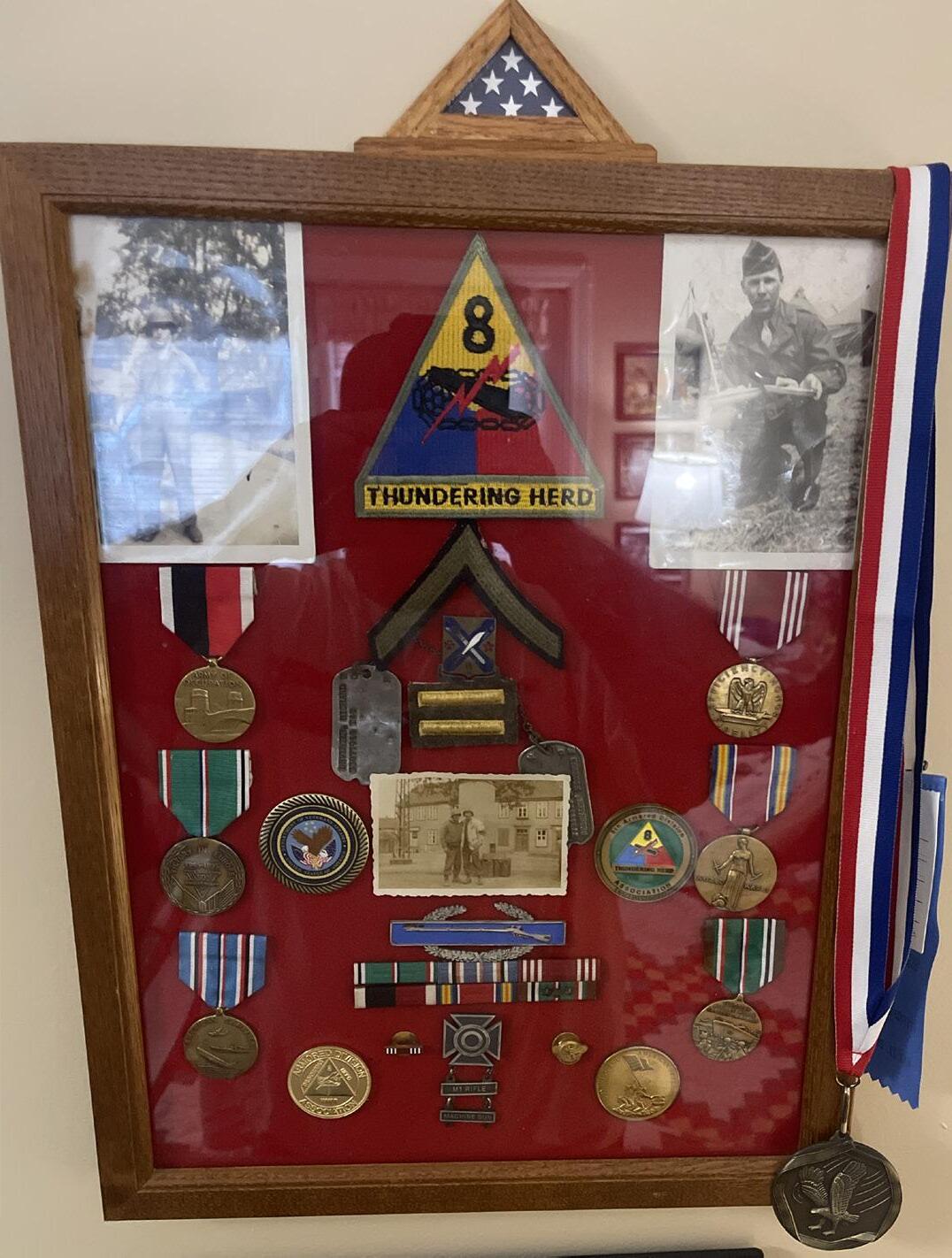


CHAPTER 1
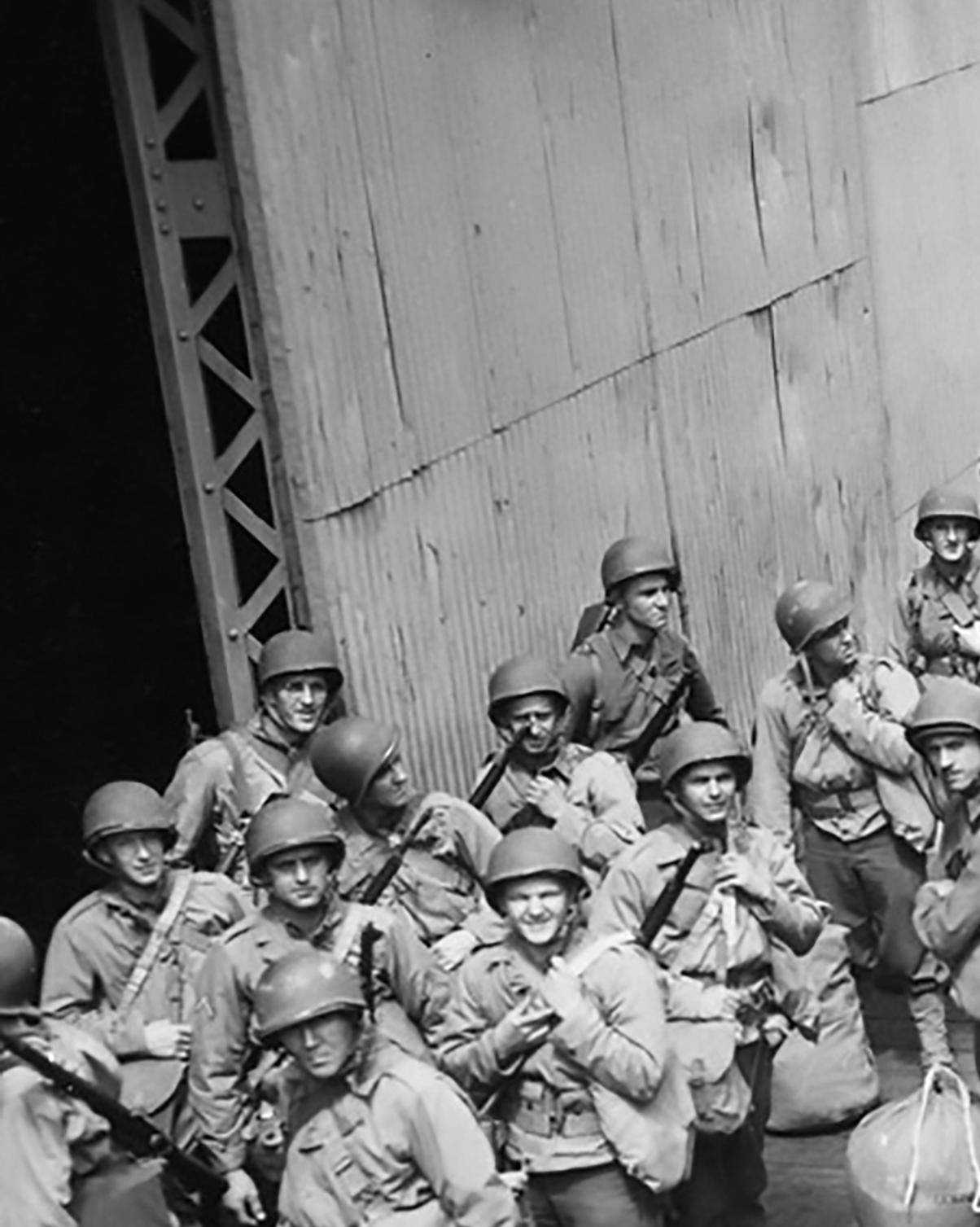
THE BEGINNING

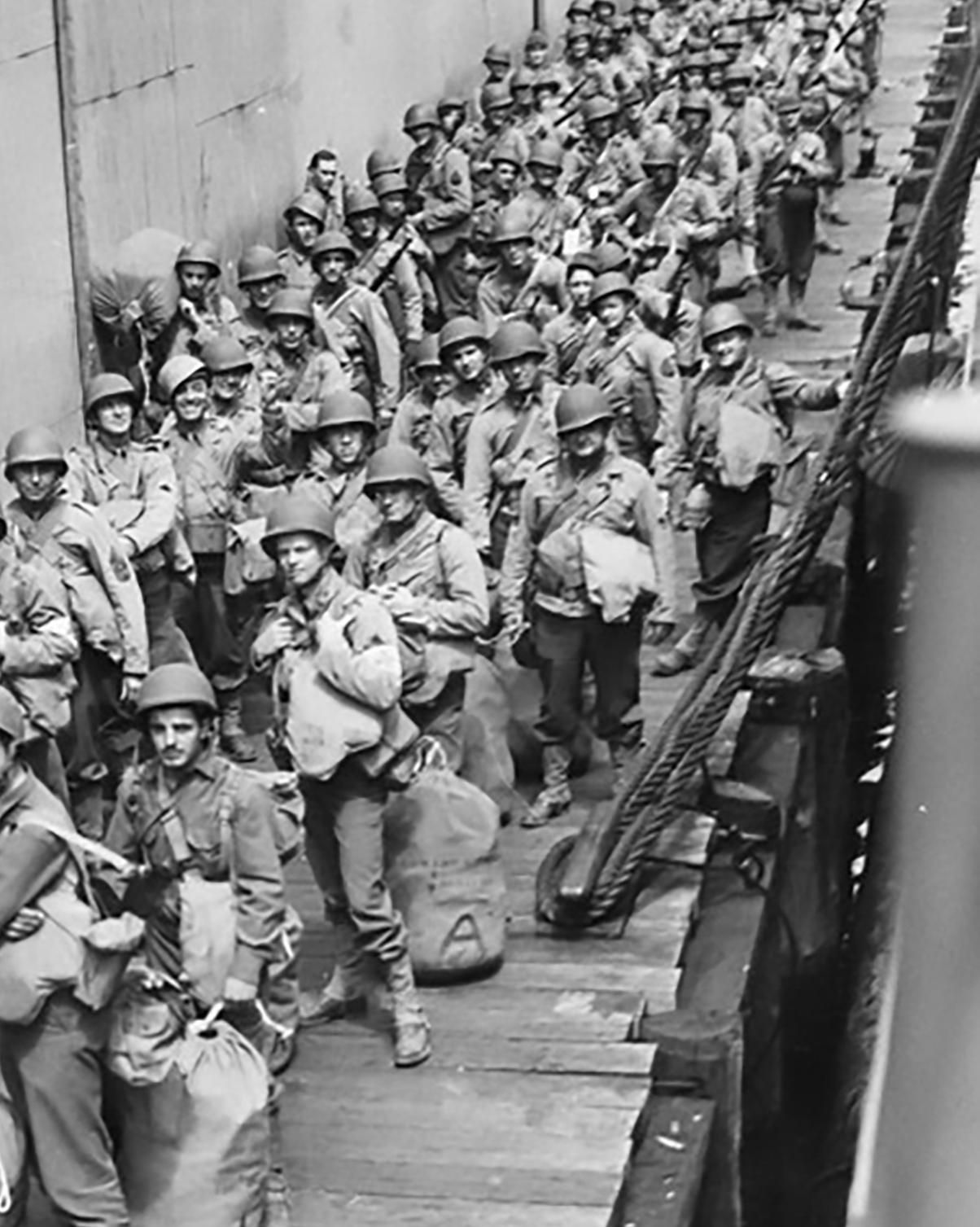
2
CHAPTER
© 2023 TWISTED BOMBSHELL
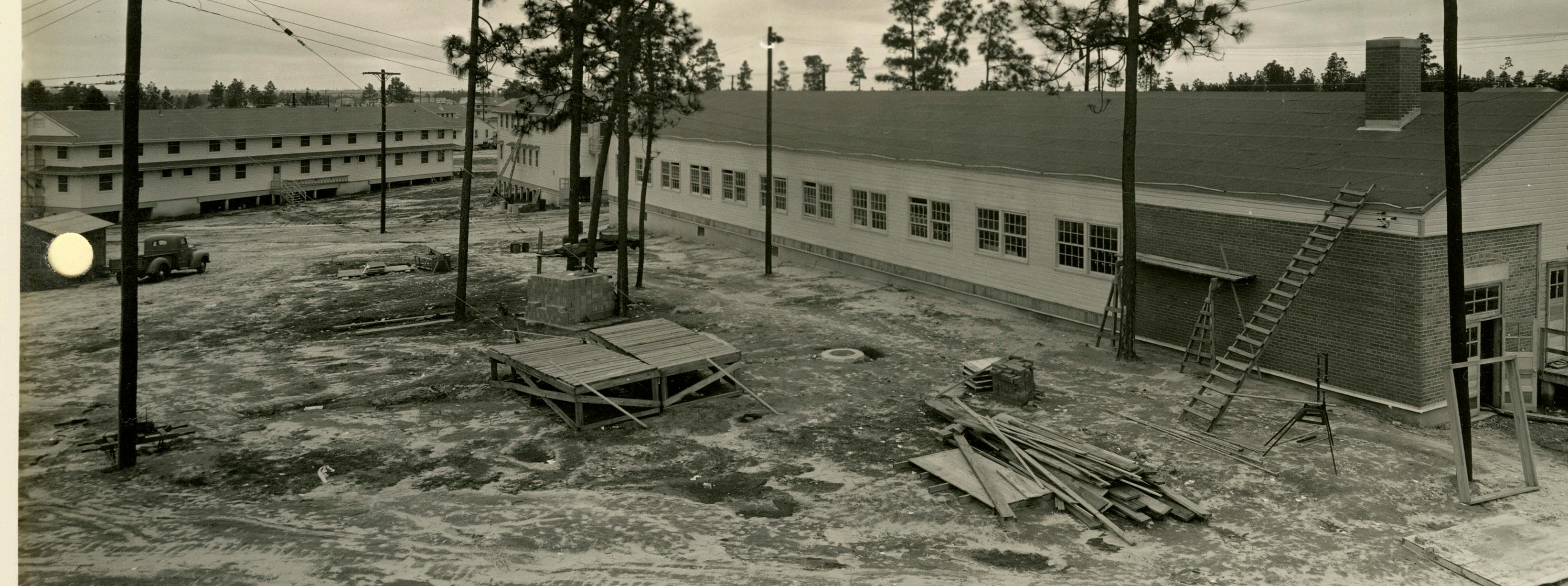

© 2023 TWISTED BOMBSHELL
THE BEGINNING
CHAPTER 2
THEIR
In my research I was able to find an online digital copy of Richard’s scrap book, the one he received that was written for and by soldiers of the 49th Armored Infantry Battalion. I began reading it and before I knew it, I was following along in an adventure that can only be shared through the eyes, ears, and mouths of those soldiers who have experienced it. I decided that their story needs to be told exactly as they wrote it. Nothing more and nothing less. The following chapters are word for word what was found in Richard’s scrap book. The only addition is that I have found corresponding photographs online that go with parts of their story. So let’s get started at the beginning.
24 July, 1944
Turmoil reigned supreme at Camp Polk as the cry went round. “POM qualified before August 1st!” Rumors began to spread, the 8th was going on another “Maneuvers”. Everybody groaned and wished that they were going overseas instead.

1 August, 1944
Rumors became real, as the “Packing and Crating” detail was formed to prepare our equipment for overseas shipment. It looked like we were really on our way. There were still some die-hards left, though. Waigenfeld swore to the end that we were merely moving to another camp. “All right laugh,” he said, “but just you wait, I got this straight from a T/5 in Division Headquarters.
25 October, 1944
The emphasis was transferred from the group to the individual, for he had to have the best equipment available for the battle towards which we now knew we were heading. The pace became fast and furious. as passes became the No. 1 talked of thing. Married men had to send their wives home. but before they did they sure made up for lost time. If you don’t believe it, ask Scott Rich, Dick Michaels, and Gust Demo.
Mmm, marriage is a wonderful institution.
STORY NEEDS TO BE TOLD EXACTLY AS THEY WROTE IT. NOTHING MORE AND NOTHING LESS.

© 2023 TWISTED BOMBSHELL
31 October, 1944

Everybody was excited, for this was the day to board the train for our swing northward. We don’t think there is a man among us who will forget that day. The band showed up to give us a send off, and played
“Stars and Stripes Forever”, the Division theme song “Roll Out the Barrel”, and for some unknown reason, “California, Here I Come.” The weather was typical of the refreshing Louisiana climate, with the thermometer registering 105, and the Yanks began to fight the Reds again in a verbal Civil War, the former claiming the latter would finally get a look at civilization, and the latter claiming that the former was “In God’s country now, son!” Feelings and emotions were mixed, as the train pulled out of Polk.
2 November, 1944
We arrived at our destination, Camp. Kilmer. New Jersey, whose chilly fog was quite a change for us, used as we were 10 the torridness of Rose Pine 4. During our three day trip we had crossed Louisiana, Mississippi, Alabama, Georgia, and swung north through Tennessee, the beautiful hills of Virginia,

THE BEGINNING
CHAPTER 2

through Washington D. C. and Maryland, into Pennsylvania. On one stop just outside Philadelphia, Lt. Rankin commented to Capt. Anderson. “Just smell that air!” Andy did, and spent the next half hour coughing up cinders. We rolled out of Pennsylvania, into New Jersey, and the end of our train trip.
3 November, 1944
The first two days following our arrival were spent completing preparations for embarkation. Indoctrination and processing were our first objectives, and next came checking clothes, and checking clothes, and checking clothes, until we almost went batty, and had to totter over to the PX to seek solace with malted milks, ice cream, and pretty waitresses.
4 November, 1944
M/Sgt. Harry Murray finally broke down and gave 12 hour passes to New York. A stranger blundering
into the barracks would get the impression that he was caught in a combination of the Indianapolis speedway and a gambling ‘casino at Monte Carlo. The barracks was emptied in a cocked time of 35.4 seconds. and in ten hours a good number of the B Co. doughboys couldn’t tell a red light from a green one. It is the general opinion that this temporary attack of “color blindness” was not entirely due to the change of climate.
5 November, 1944
B Co. went on the alert and moved out for the embarkation, as usual, long before dawn. Willard Robinson said that when he was married and had some children, he would personally line them up at the breakfast table in the morning and yell “Navy, Navy,
Navy!” to show his appreciation for the Army.
The ferry ride across the harbor was another thing we won’t forget. The big skyscrapers loomed up before us, looking larger and grander than ever before. It was lonesome for the native New Yorkers to watch their home town pass in review and to know it would be a long time before they saw it again.
A “gigantic” ship labeled “H. M. S. Samaria. Liverpool”, and painted a drab battleship gray loomed up before us as we staggered up the gangplank to our quarters, loaded down with all our worldly possessions, and clutching the Hershey bar that the Red Cross ladies forced in our dank little paws. It was the biggest ship any of us had ever been on, including Pardridge, who had sailed many a schoo -
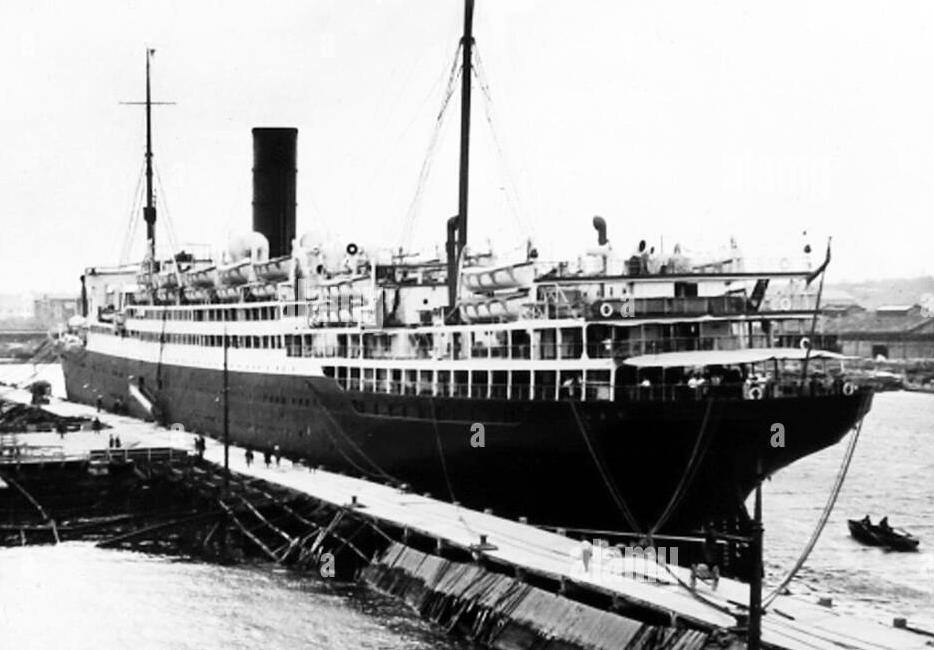
© 2023 TWISTED BOMBSHELL
ner off the Florida Keys in his civilian days. We had all been pronounced fit for overseas duty after our stiff physical at Kilmer. “Stiff” physical, one stiff motion and it was done, and now it looked like our last chance to back out was gone.
7 November, 1944. Sailing Date.
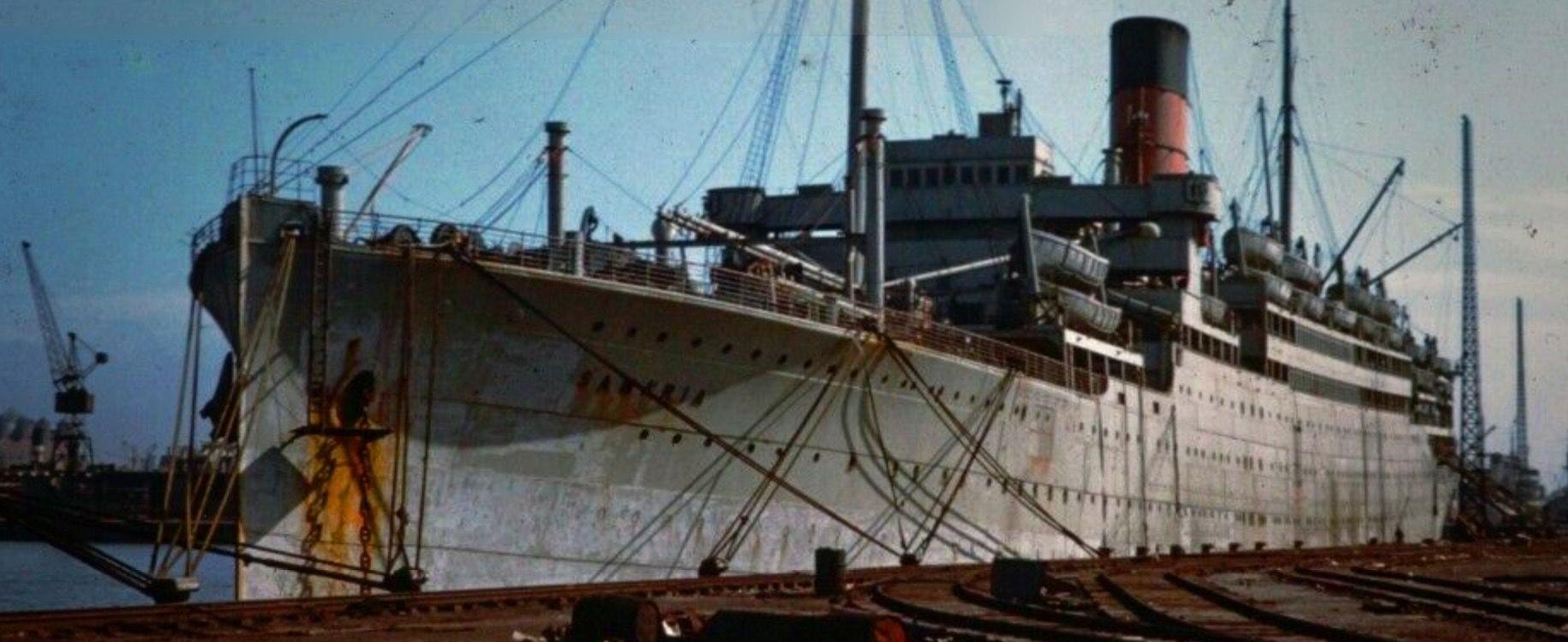
For two days the ship had been filling up with men and equipment. B Co., the first to board the ship had been undergoing the fiendish torture of standing helpless and imprisoned on the deck looking down 47th St. into the heart of New York - so near and yet so far. At 1100 hours the scurrying tugs gave a couple of whistles and the ship moved slowly from the docks.
On the way through the harbor we passed the Statue of liberty, and everyone raced to the portholes for a last look at this proud symbol of America. We stood solemnly whispering hopefully to ourselves, ‘Home alive in “45”’, and knew that our sentiments were shared by every man on the ship.
Election returns were broadcast throughout the ship
THE BEGINNING
CHAPTER 2
that night, and before we crawled into our bunks we were sure of two things; that Roosevelt was still President, and the Eighth was going overseas.

8 - 18 November, 1944. On the high seas.
B Co. drew gun crew and MP details aboard ship, and spent their duly hours scanning the skies for Stukas, and the seas for U-boats, or checking their buddies for lifebelts and dousing any tell-tale light showing an the blacked out decks. For some of us, stuck high above the decks in the gun platforms, the trip will long be remembered for its black, rainy nights, and for the way the ship rolled at this height, and the disturbing effect it had on the stomach at times. We experienced a couple of alerts, but whatever It was was scared off before it got to us, and we had to postpone the thrill of shooting dawn a Nazi plane until a later date. Much time was spent on these watches in fascinating conversation with the
‘Limey’ Marines, who served as gun captains, which was our first taste of a ‘foreign’ language.
Leisure time was spent in sleeping, reading, griping about the chow, and playing a highly entertaining game known as ‘Come Seven’, which involved the exchange and redistribution of currency. On rougher days, a contingent might be seen, leaning precariously over the rail, muttering ‘Oh God, let me die now’, but for the most part we became quite seasoned seafaring men, who knew port from starboard, and why it was best not to spit to wind’ard.
19 November, 1944. Landing.
The day before somebody had yelled ‘Land, on the port side’, and for two hours the boat had listed to port. Land was a welcome sight after 12 days of roiling seas and pitching decks. Some were a little disappointed. ‘Where’s dem white cliffs?’, asked ‘Shorty’ Riehle. ‘No blueboids, neither!’.

We tied up at Southampton docks about noon, where we were greeted by a band and a General, who said that England was glad to see us and hoped that we would enjoy our stay. We gathered on the decks to throw cigarettes and coins to the ‘Limeys’

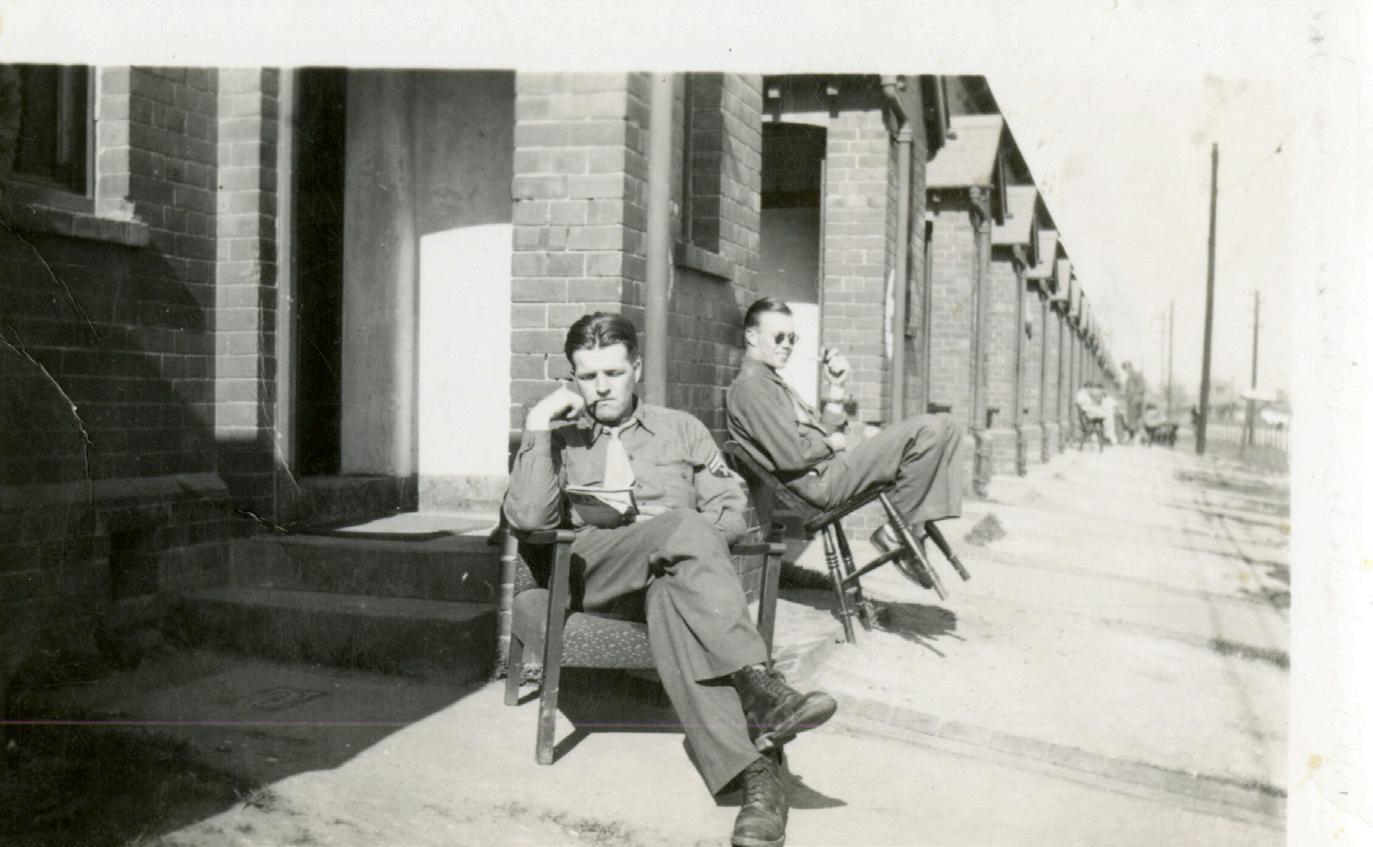
© 2023
TWISTED BOMBSHELL
on the docks, and whistled at the women dock workers who wore sweaters. At length we received our orders to disembark, and picking up our duffle bags, weapons, and packs. We filed slowly down the gangplank and on to the docks, where one of those dinky English engines had pulled up a string of cars for us. After a short break, during which we were fed coffee and doughnuts, from a Mobile Red Cross Unit, we crammed ourselves, eight men and about five hundred pounds of equipment, into a compartment, on the train, and started for our new home.

Tidworth! What a name. We arrived there In the dark, and after untangling ourselves on the platform, we
THE BEGINNING
CHAPTER 2
boarded a group of trucks waiting to take us to our ‘barracks’. They have nice barracks at Tidworth, but the trucks drove gaily by them, and slogged miles into the wilderness, stopping at last amid a cluster of tents, floating on a sea of mud. Our New Home. 20 November, 1944 - 2 January, 1945
We gradually sank into a semi-garrison life... KP, Guard, and a training schedule made their appearance again. A great deal of our time was devoted

to “fixing up the tents”, and trying to scrape up enough fuel to keep the temperatures in our tents above absolute zero. Once or twice a day a truckload of scrap wood would unload near the CP, and representatives from each tent, chosen for their physical and athletic prowess, would be sent to get the wood. At the whistle everybody went into action, and after a brief but ferocious struggle, the pile of wood would be no more and from the tents the sound of chopping would be heard above the cries of the wounded.

This training in hand to hand combat later proved

invaluable. Other forms of toughening up included inter-platoon football (Never mind making touchdowns, just get those guys), long strolls over the rolling English countryside (in formation) and passes to London, Salisbury, and Amesbury. English currency also provided mental wrestling, and the popular pastime of jiggling the cubes was enriched with such phrases as ‘A pound to a bob he don’t eight’. For entertainment of an evening, we could go into Tidworth, where about the only places offering any sort of amusement were the ‘Ram’, or local pub; the “Hippodrome”, or local movie palace; and the Red Cross, where they occasionally held dances
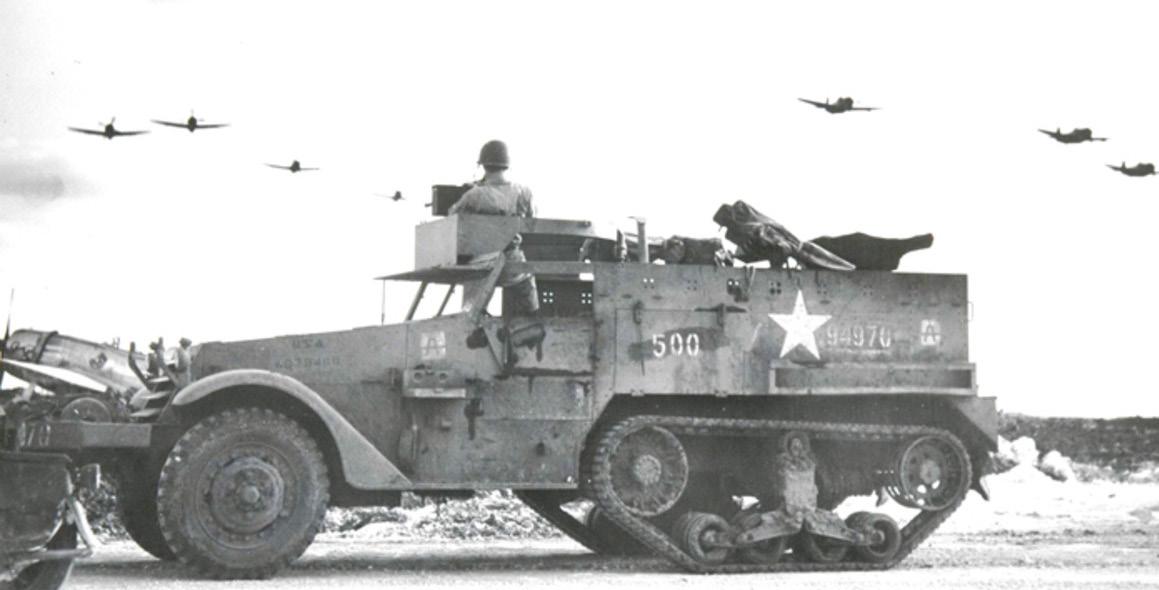
© 2023 TWISTED BOMBSHELL
and movies of an evening, served coffee, doughnuts, hamburgers and cokes, and in general took the place of Ye Olde Service Club at Polk.

Men left on pass for London, but evidently visited a place called Piccadilly instead. For the talk was mostly of that place, and of some of the interesting times they had with a brigade of Commandos who seemed to be stationed there. Such little reminders of home as the monumental chows served in honor of Thanksgiving and Christmas, with turkey and all the fixings, and the letters and packages that finally began to swell the mall bags, were very welcome indeed. On Christmas we played host to several orphans, and
THE BEGINNING
CHAPTER 2
everybody tried to outdo everybody else In showering gifts and attentions on these kids. New Years was one of the quietest on record for most of us, as the local brew was more conducive to active kidneys than high spirits, and preparations were going forward for moving out. Our pay coming in Francs had convinced the most doubtful of us.


© 2023 TWISTED BOMBSHELL



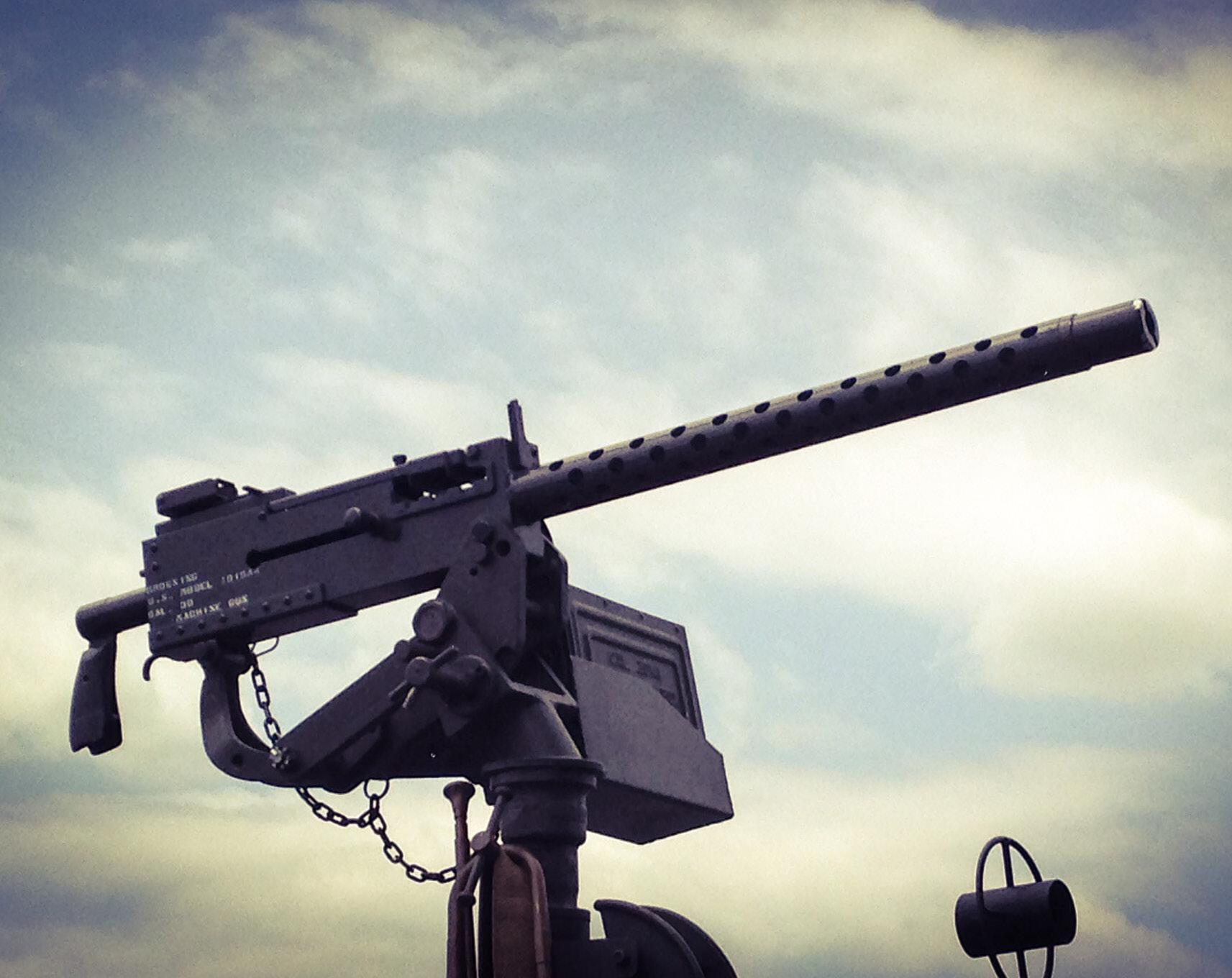
THE BEGINNING CHAPTER 2
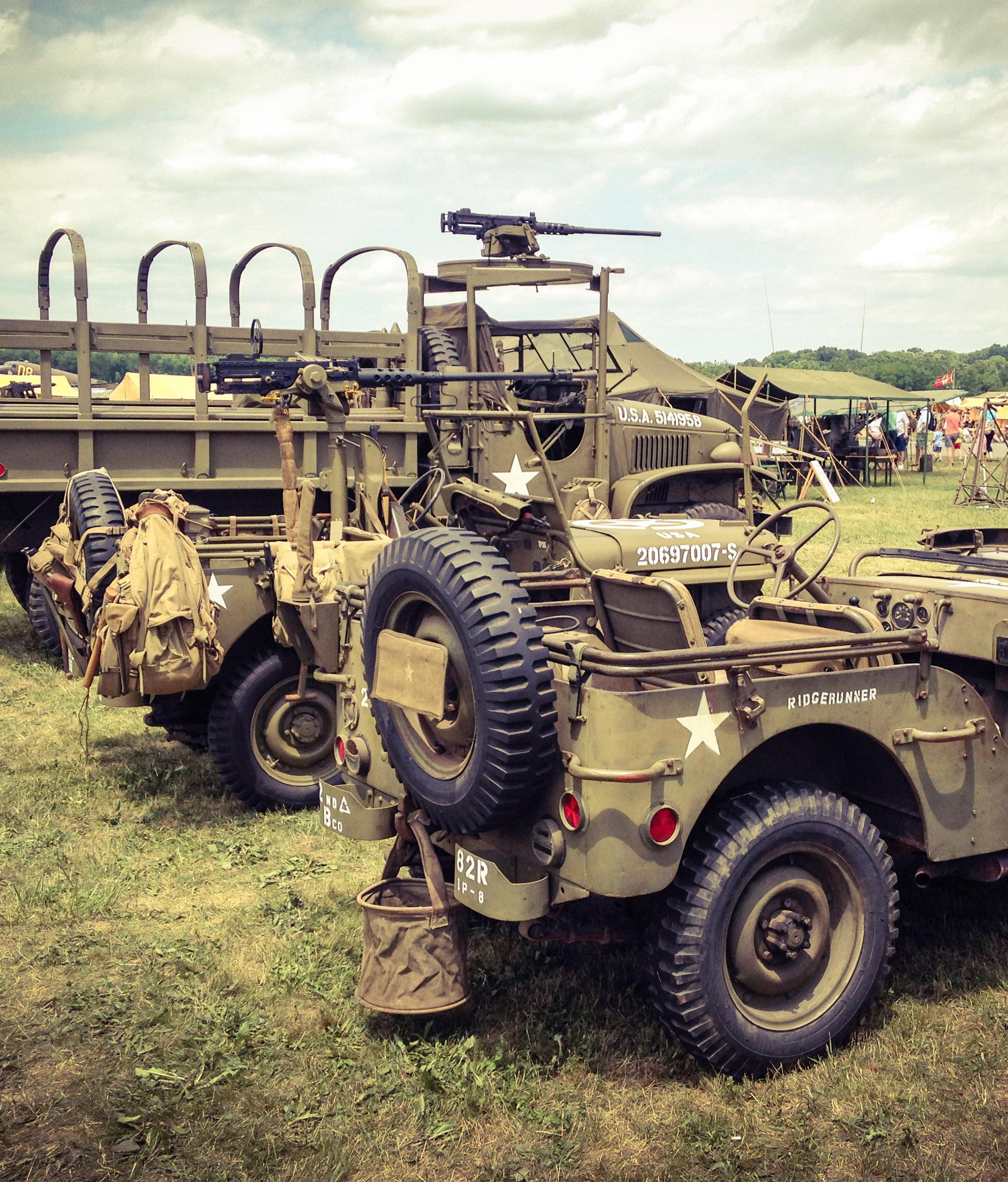
© 2023 TWISTED BOMBSHELL




THE BEGINNING CHAPTER 2


NORMANDY


3
CHAPTER
© 2023 TWISTED BOMBSHELL


© 2023 TWISTED BOMBSHELL
So if you have never heard of the Normandy invasion during World War II, you should really learn about it. The Normandy invasion was basically the Allied Forces sneaking into France, without the Germans knowing they were coming, in the largest seaborne invasion in human history. There are hundreds, if not thousands, of documentaries, movies, and stories regarding this invasion and the day the Allied Forces landed on various beaches along the French coast. The day they landed was nicknamed “D-Day”. Two of those beaches were designated for landing of the United States military. They were code named Omaha Beach and Utah Beach and were basically dead smack in the middle of the invasion map. If you have never seen any pictures of the Normandy invasion, I have included a few and they are attached to the front of this chapter. You can see hundreds of ships, balloons lining the sky, and hundreds of trucks and cargo transport vehicles being staged on the beach. If you are wondering what all the cables are that are trailing beneath all of the balloons (which is
difficult to see in this picture), it is not to keep them in place. The cables were used to prevent German fighter planes from flying underneath and attacking the boats. Keep in mind, this photo is only one photo depicting mainly Omaha Beach. Close your eyes and imagine putting together five or six of these photos together to get a full panoramic view of the entire invasion of the coast. That is absolutely insane! I can’t even begin to imagine being in the midst of that!
Looking at the photos, you can only imagine what those days must have been like for any soldier on the first few days of the invasion and even afterward. To this day, people are still finding helmets and military items washing ashore and buried deep in the terrain.
There are hundreds of thousands of personal stories associated with D-Day, the Normandy invasion, and that whole operation, which was called “Operation Overlord.” Let us continue with the personal accounts of the 49th Armored Infantry Battalion and their arrival in France.

NORMANDY CHAPTER
3
THE LARGEST SEABORNE INVASION IN HUMAN HISTORY.
2 January, 1945
The vehicles left for Southampton, where they were loaded on to LST’s and set sail for France. They sailed up the Seine River to Rouen, where they unloaded. The men who accompanied these vehicles across the channel are still raving about the comfortable quarters and good food they received while guests of the Navy. At least those who were spared seasickness raved about the chow.
3 January, 1945
We left Tidworth and England for good this morning, before dawn as usual, and repeating approximately the procedure we followed at POE New York. We loaded onto trucks, were driven to the station, entrained, rode back to Southampton, staggered five or six blocks to the docks, clutching bedrolls and packs in our arms, climbed
the gangplank again. On this ship, a Polish vessel named the ‘S. S. Sobieski’, we were stowed down in the hold, somewhere below the water line we suspected. The ‘Sobieski’, although smaller than the ‘Samaria’, at least gave the impression of being built in the present century. When night came, we brought out the hammocks, and so wore ourselves out mastering the intricacies of this tricky bedding that we fell asleep almost immediately. Some of us gave up altogether, and slept on the floor, where our only worries were men stepping on us en route to the latrine.
5 January, 1945
Early in the evening we steamed into the port of Le Havre, one of the biggest ports In Europe, and one of the most demolished. ‘Damn, you’d think there’d been a war around here!’, muttered one gaping railbird, surveying the sunken ships and demolished docks. We dis-
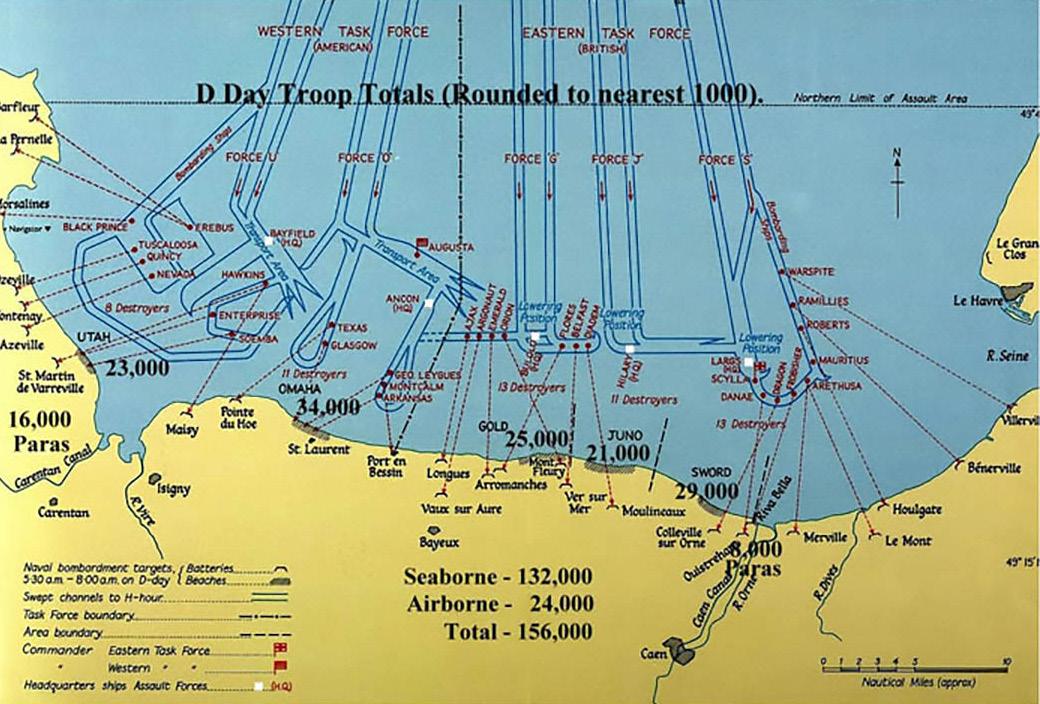
© 2023 TWISTED BOMBSHELL
embarked after dark, from the side of the ship into an awaiting LCT, which ran us up on the shore in true invasion fashion, and we hit the beach, looking nervously over our shoulders for lurking. Messerschmidts. We loaded onto trucks this time, no trains being available, and drove some sixty or seventy miles through the cold and snow, arriving frozen and tired in the little French town of Anglesqueville, near Totes, about 0100 next morning.
6 -7 January, 1945
We made the most of our opportunity to get acquainted with the French. Phrase book in hand we went determinedly after the population, and soon large clusters of GIs were seen around tolerantly amused little kids, asking any sort of question they could think of. For the most part the kids waited until the boys were just about talked out, and then asked for ‘Chocolate, chewing gum, or cigarette pour papa.’ Others didn’t wait for them to talk themselves out. No matter how the conversation started, It always ended with the request for cigarettes and chocolate. In an alley down the street a still was found that transformed apple juice into a product for which many uses were found, including lighter fluid. And the ‘Vive la France!’ sentiment gained in intensity. Our vocabulary was soon increased by such valuable terms as ‘Cognac, Calvados. No compree, Couchez avec moi, etc,’... It was here that the GI bedroll, to use the less descriptive term, was issued, and where the vehicles rejoined us.
8 January, 1945

At an early hour, even for B Co., we loaded everything into the tracks and pulled out. It was really cold, and we had one of our first experiences of just how miserable you can get riding in a half track all day. We rode and froze until
about 21 hours that night, through Compaigne, Soissons, and Reims, ending up in some woods near, (they tell us) Baccones, France, about thirty miles east of Reims.
11 January, 1945
At about 2300 hours, Thatcher, our bugle boy, was roughly awakened by Captain Smith, yanked from his tent, handed his bugle, and told, “Blow that thing boy, you ‘know what to blow’. Standing ankle deep in snow and clad in shorts and goose-pimples, he blew ‘Call to Arms’, scaring the daylights out of several doughboys who had a hazy impression that we were being attacked or something. Once we were out of our blankets, and organized to some extent, the work of getting loaded and rolling went forward. Ammunition came up, and was stowed; bedrolls were thrown aboard in a haphazard manner, and secured with a prayer; the hay we had been

NORMANDY CHAPTER 3
using for bedding went up in a blazing column, throwing an eerie light on the scurrying men; and in general the scene resembled a movie version of the Battle of Gettysburg. When everything was ready we were told that we would move out in an hour or two, so we sat around burning ammunition boxes to keep warm. Finally we moved out and drove all that day and the next night arriving at Louvigny, near Metz, about noon of 13 January, 1945. It was a long, cold 110 miles, and we were more than glad to stop, even in such a town as Louvigny, which was somewhat the worse for War.
13
January - 2 February, 1945

We stayed at Louvigny for about three weeks, enjoying near zero weather all the time, and preparing for combat. During this time our helmets we~ all painted white,
and the tracks underwent a similar transformation. The ‘camouflage’ was so good that Minton claimed he lost his track for two days and never would have found it if he hadn’t stumbled over it in the motor pool. We set up outposts, and when strong German counter-attacks were threatened around Saarbrucken, we were called out on the alert, with double guards, and ugly rumors about paratroopers in the area. Meanwhile we trained, running tank -- infantry problems with B Co. of the 36th Tanks.
It was here that tragedy overtook us, when Pfc. Fredrick Pardridge was killed by an enemy mine on 16 January, 1945. T/5 George Weilbacher was injured by the same explosion, but returned to us later. Training was becoming more realistic with the use of Jive ammunition and explosive charges. It was during one of the lectures on
© 2023 TWISTED BOMBSHELL
demolitions that three men were slightly injured, but all of them returned to the company later. On a few occasions trips were taken into Metz where a quartermaster outfit was dispensing showers and clean underwear, and on several occasions we prepared to move out into battle.
But they were dry runs. Towards the end of our stay here the long awaited winter equipment arrived, shoepacs, and heavy gloves. It promptly got warm, and the snow began to melt. The greater part of our time here was spent huddling around a stove, and dreaming of our nice warm Louisiana with its dust and its blistering sun, and its nice warm showers. How we wished we were back there!
2 February, 1945


We packed up and moved out of Louvigny at 1300, and started a long trek across Northern France through Luxembourg, which we crossed in about a half an hour sometime in the night; through Belgium and Liege, where everyone waved and threw apples at us, and offered us coffee when we stopped; on up into Holland, where we stopped at last, on the outskirts of Valkenburg,
NORMANDY CHAPTER 3
near Sibbe. We landed in Valkenburg at about 1500, 3 February, 1945. Here we spent the night sleeping in one of the monstrous caves that honeycomb the hills around the town. The next day we moved into the houses along with the civilians who seemed to be very glad to have us there, and did everything they could to make us comfortable.
Here, for the first time since England, we found a place where at least a fairly decent percentage of the populous spoke English. We took advantage of this, and had many talks with the people, during which we learned from first hand reports of the German occupation and of the great Dutch Underground.
From Valkenburg the company commanders and platoon leaders of the battalion went ‘up front’ for the first time. They went up to our proposed area around Kempen, Holland, as observers. It was then, also that Richter
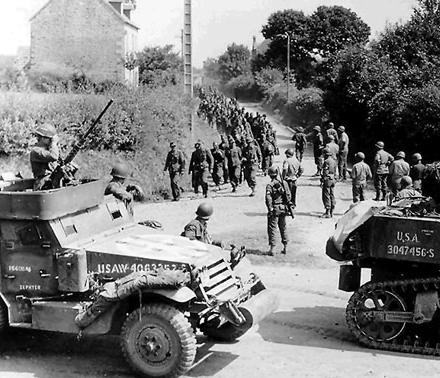
had the elite honor of being the first enlisted man to go ‘up front’. During the days that followed, several patrols were sent up tbere to gather information.
We spent most of our time preparing for combat and sweating out alerts which turned out to be ‘dry runs’. On three successive days we prepared to move up, and on three successive days the movement was postponed at the last minute.
This last minute letdown was a strain on the nervous system, but somewhat of a relief when we got to thinking it over, and as Zubovitz said, ‘1 don’t care if they postpone this movement for the duration’. It was here that we lost Joe Davis, when he was hit by a truck and suffered a broken leg, and Lt. Cushman, who was transferred to the 7th Infantry Battalion, much to the regret of his platoon. To make up for the slump in the T/O we received 17 replacements to bring the company up to strength.

© 2023 TWISTED BOMBSHELL
21 February, 1945
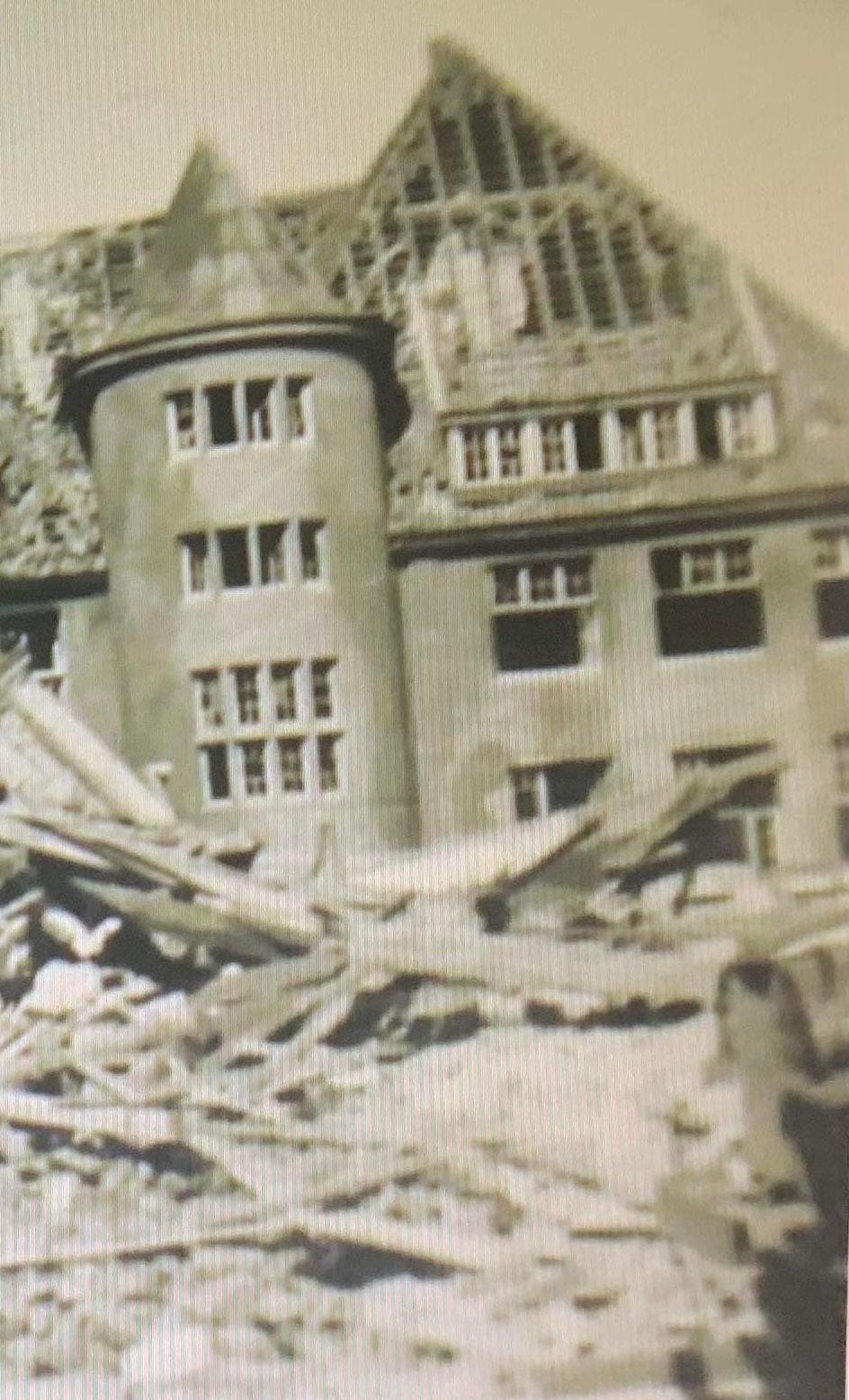

We arose at 0330 and moved out, the real thing this time. We traveled north to Posterholt, Holland, where we were to take up defensive positions along the Roer River, and relieve the British 7th Armored Division. We arrived about noon, and spent the afternoon sitting around, comparing equipment, and talking with some of the British whose outfit we were to relieve. Then at 1730, after eating chow, the first and second platoons moved out to take up their
positions, while the third platoon remained in Posterholt in reserve, and the AT platoon was placed in battalion reserve.
The first platoon drew for their positions, a little cluster of houses known as Paarlo, while the second platoon drew another little cluster of houses known as Holst. Our mission was to guard against enemy patrols and to generally hold the line. This was our first night in the line, and consequently we were a little nervous. A great deal of livestock almost lost their lives through being mistaken for enemy patrols! It was cold, too, and the men on guard fluctuated between a state of apprehension and freezing, but with morning, the vigil relaxed, and hot chow came up.
NORMANDY CHAPTER 3
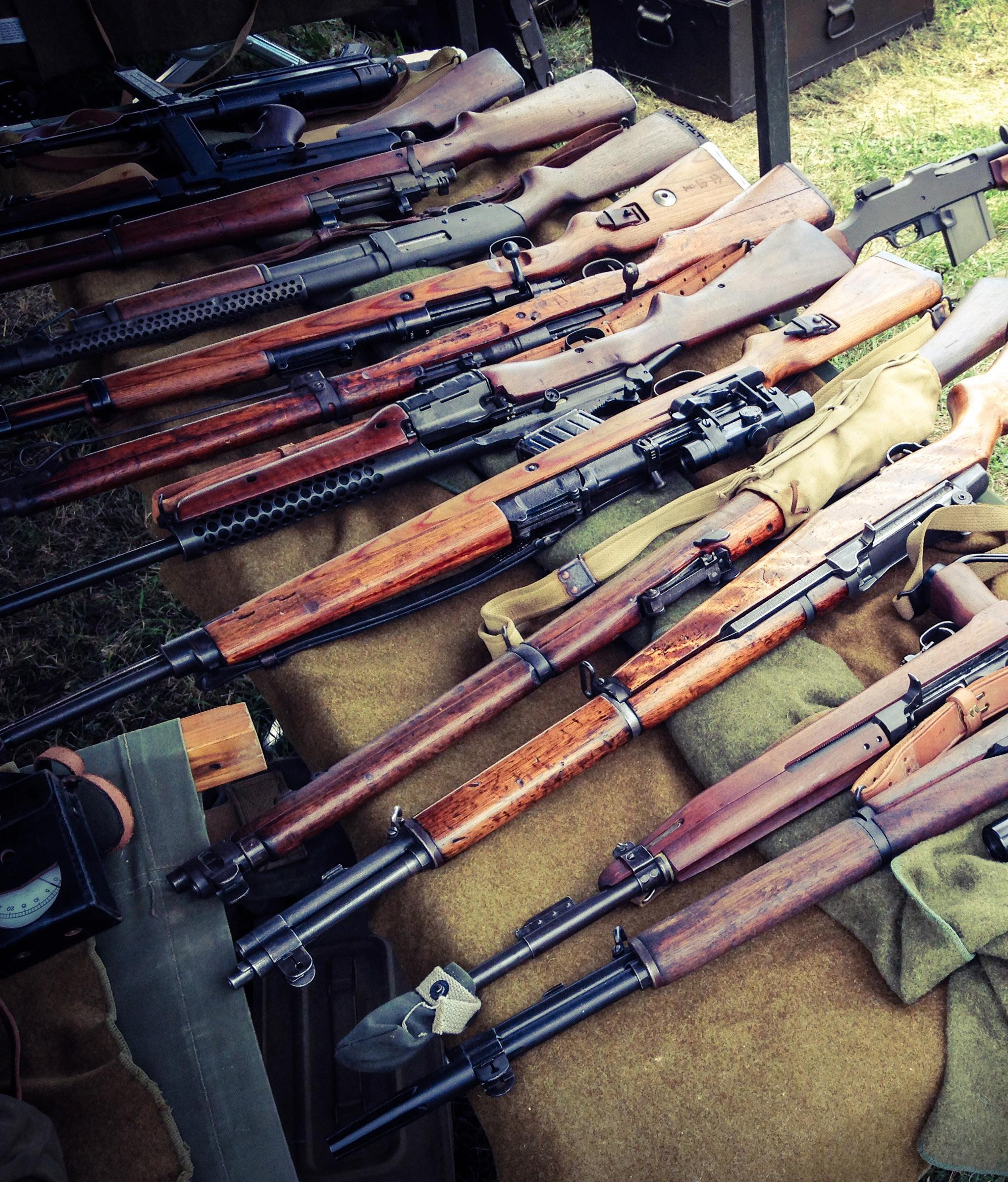
© 2023 TWISTED BOMBSHELL


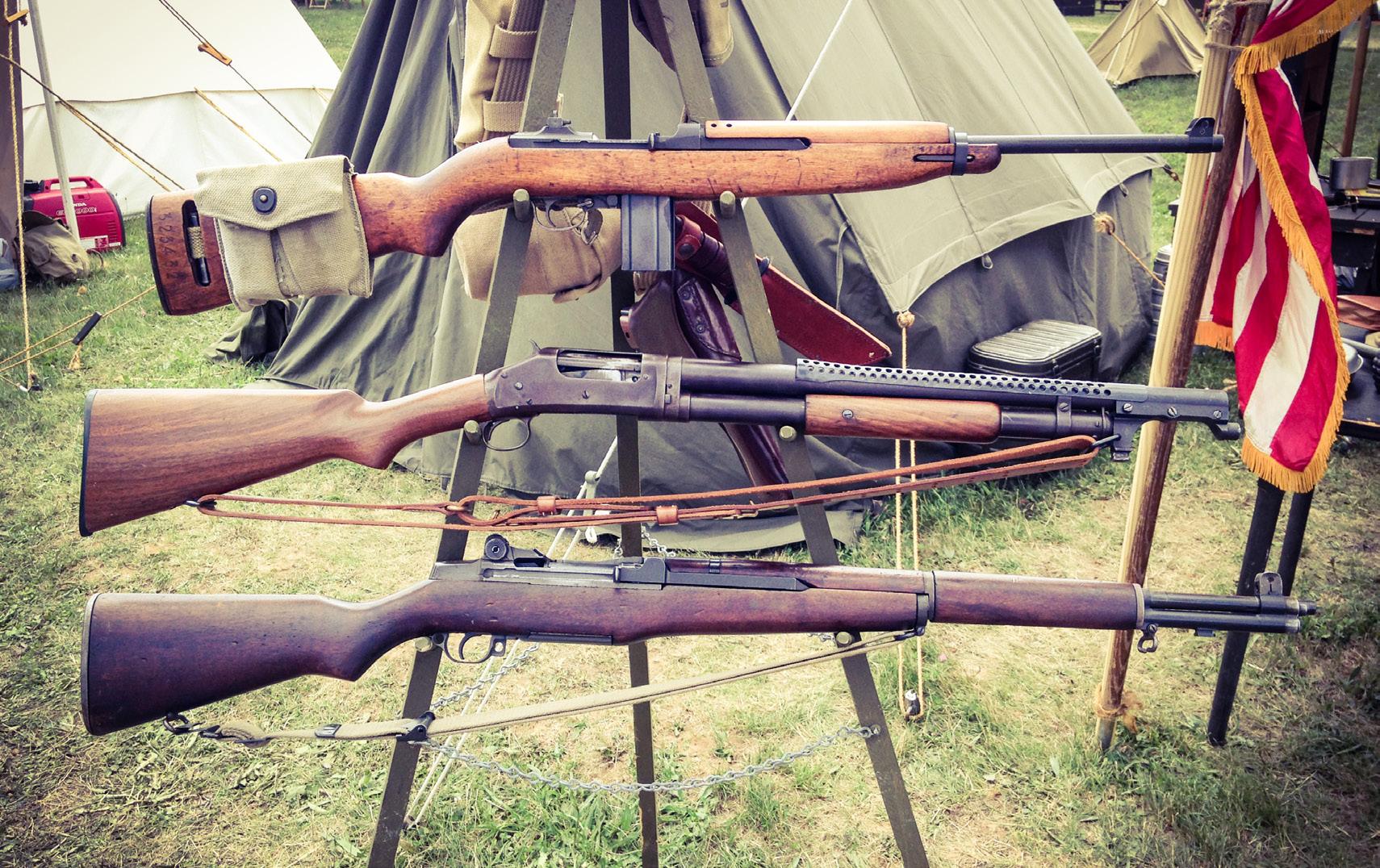

NORMANDY CHAPTER 3

© 2023 TWISTED BOMBSHELL


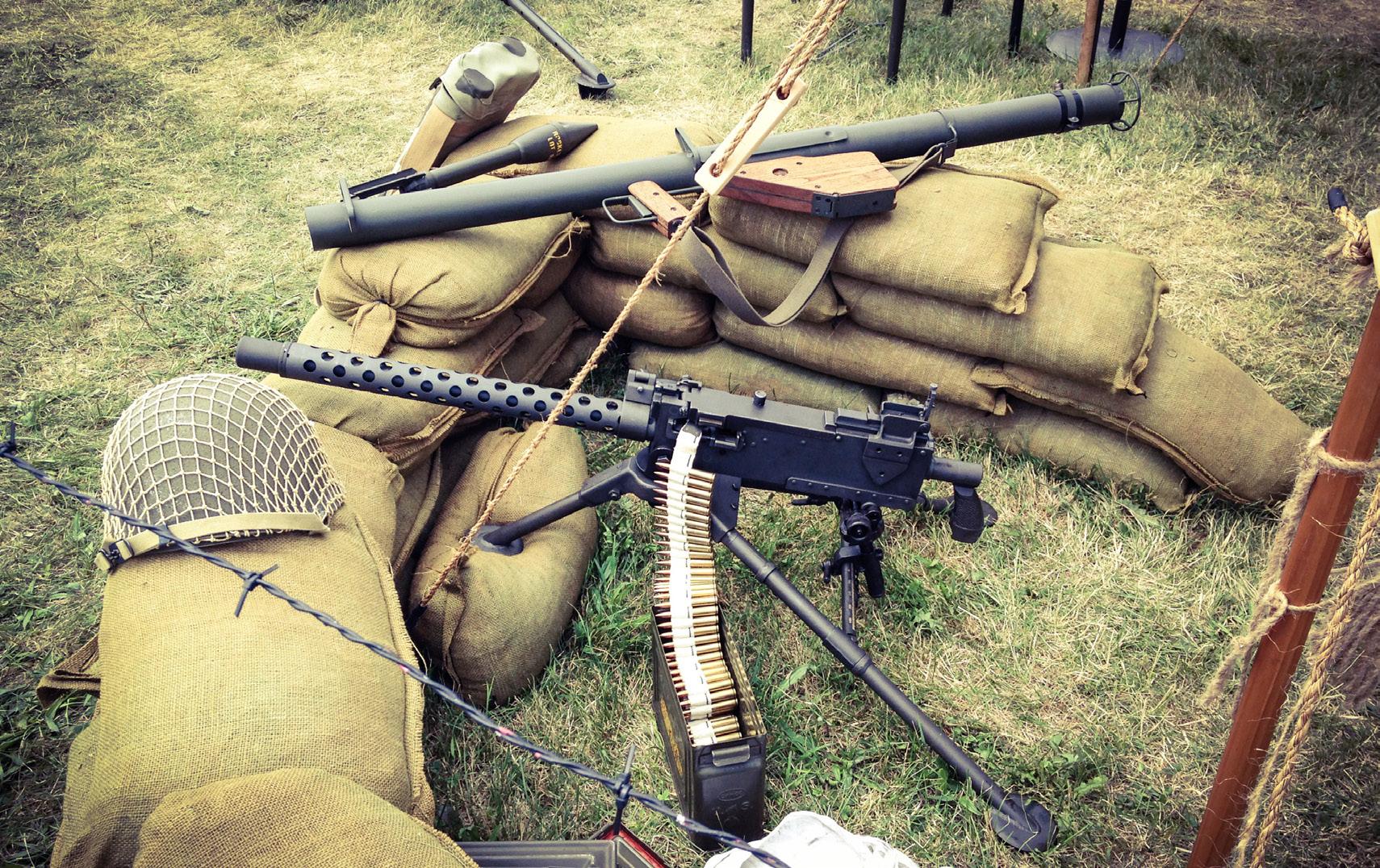

NORMANDY CHAPTER 3

© 2023 TWISTED BOMBSHELL




NORMANDY CHAPTER 3

© 2023 TWISTED BOMBSHELL


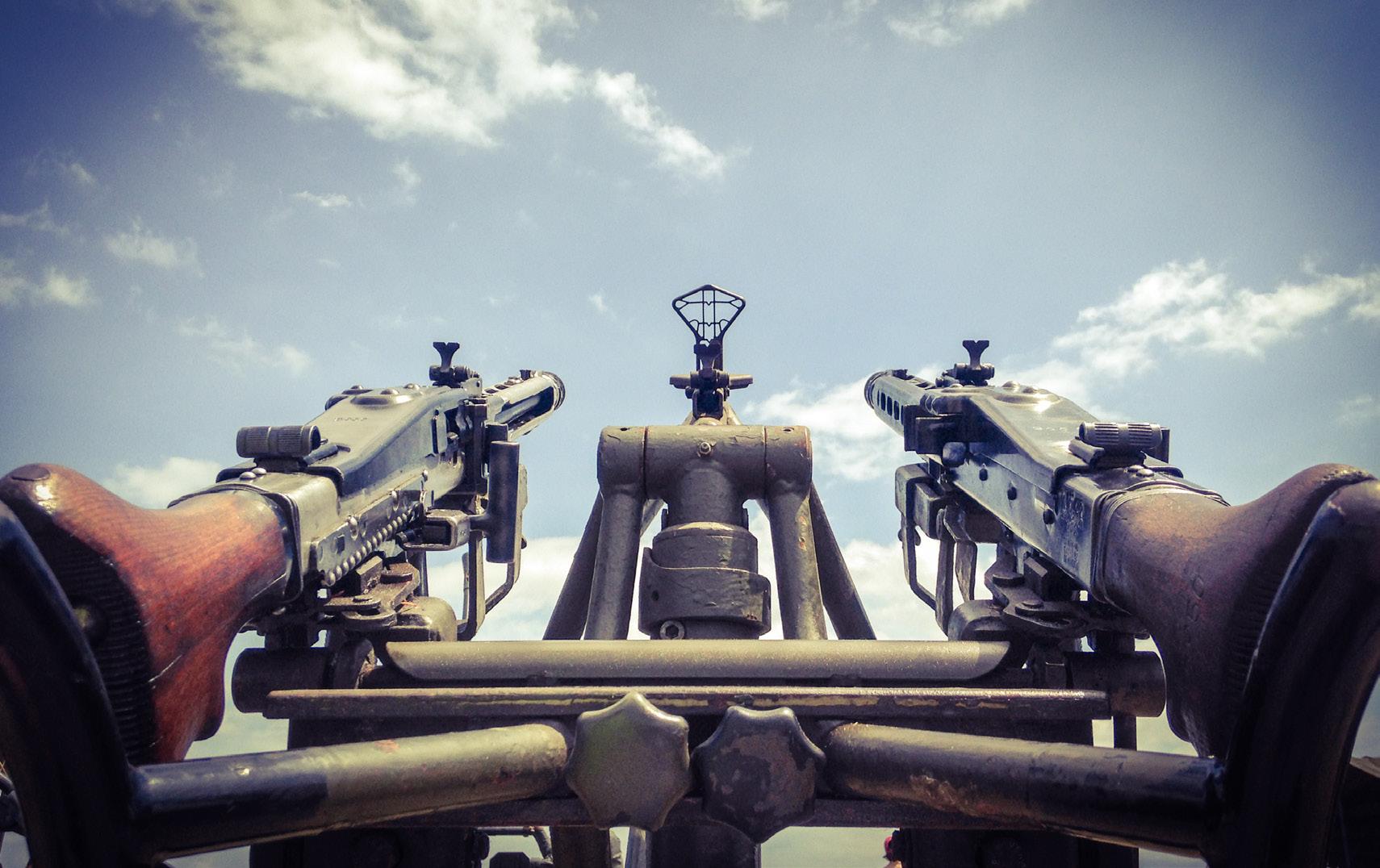

NORMANDY CHAPTER 3
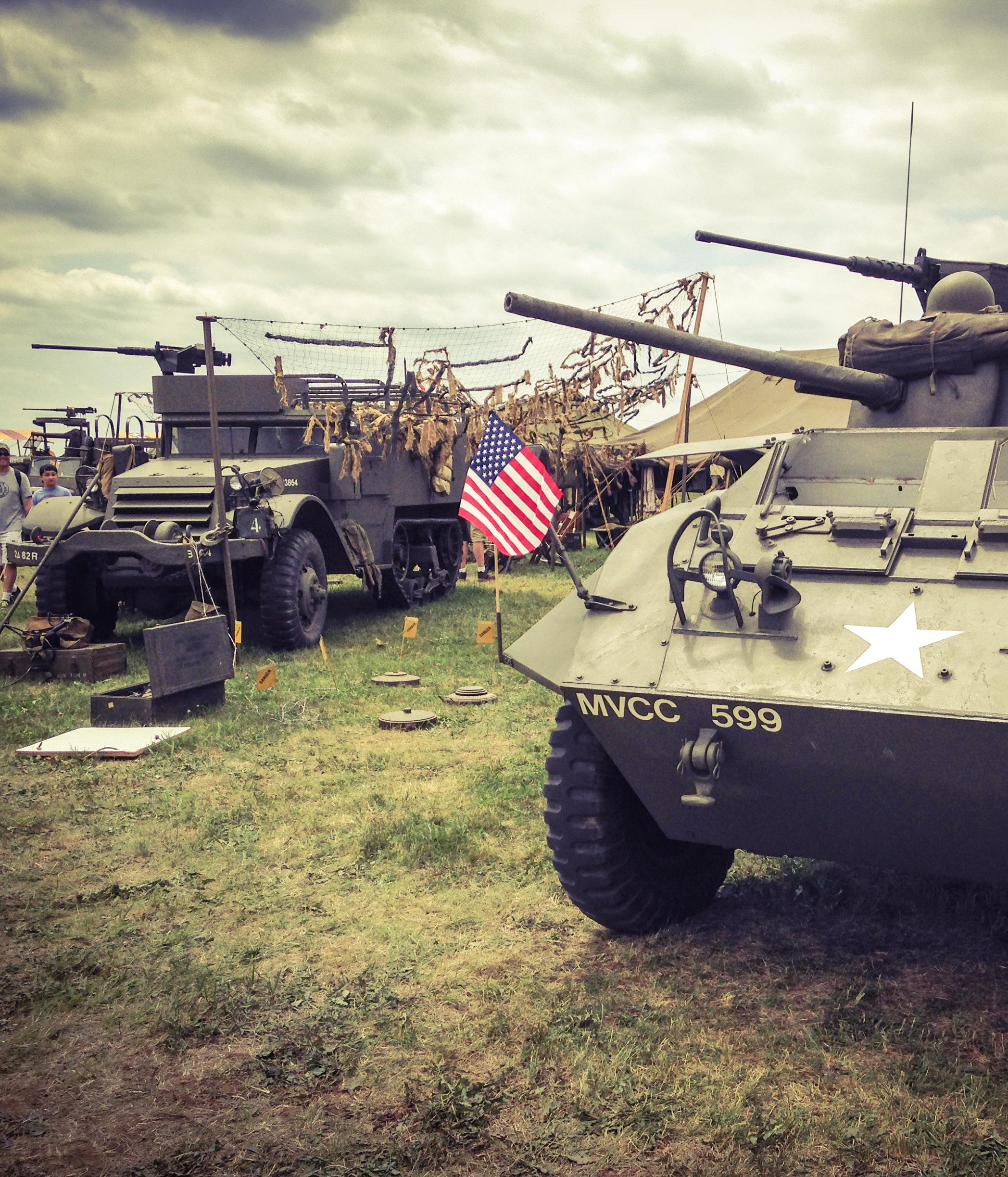
© 2023 TWISTED BOMBSHELL


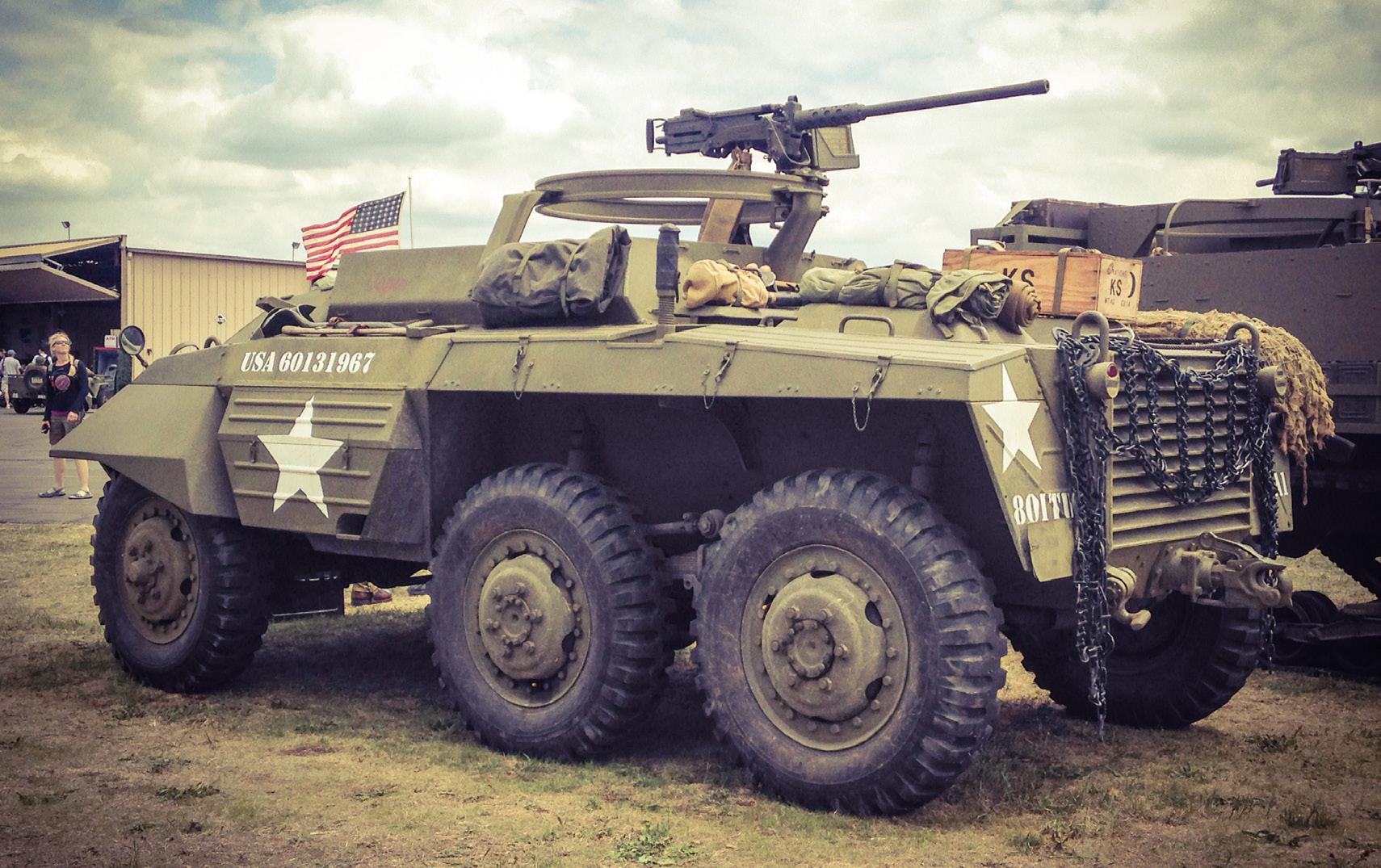

NORMANDY CHAPTER 3
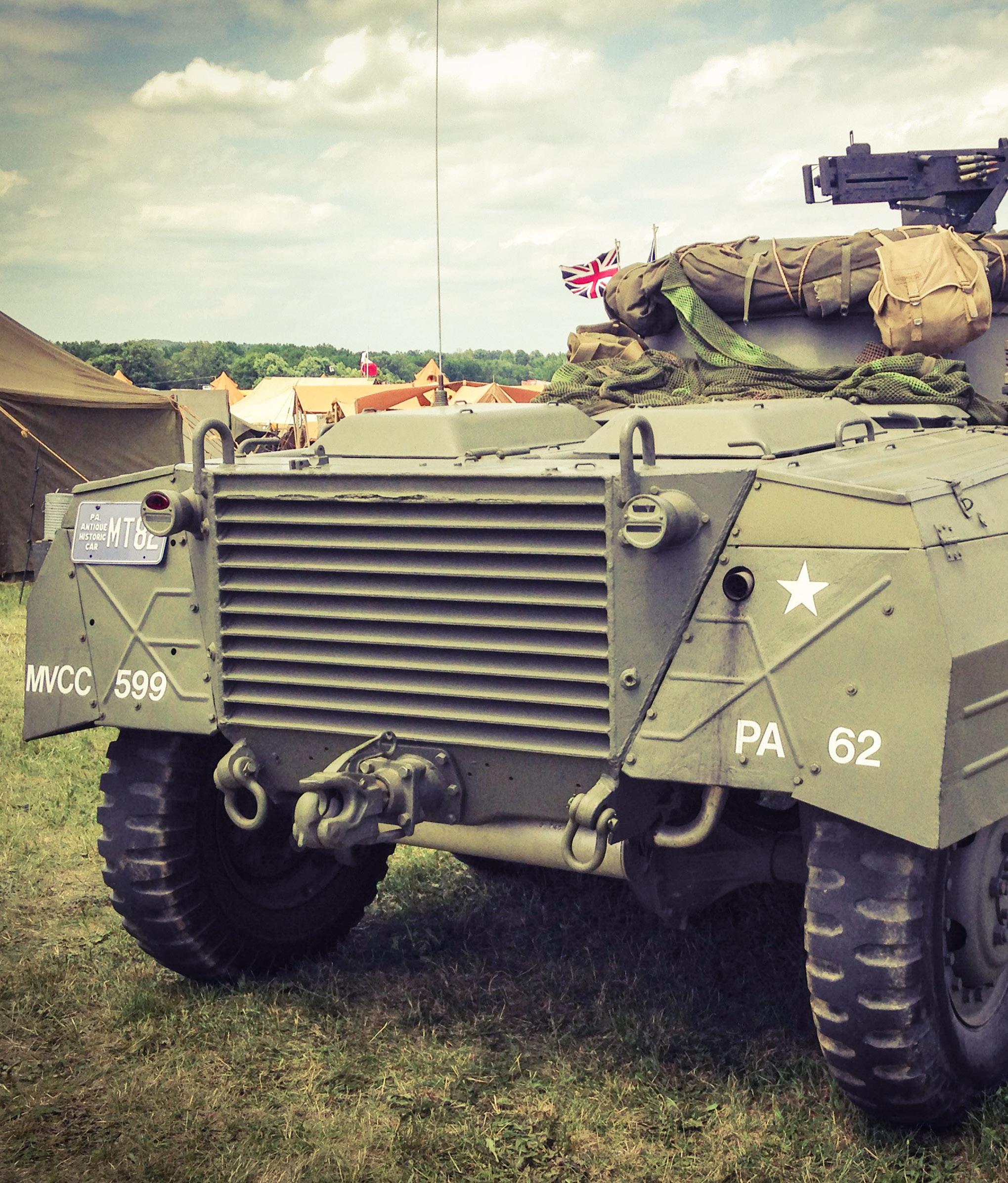
© 2023 TWISTED BOMBSHELL



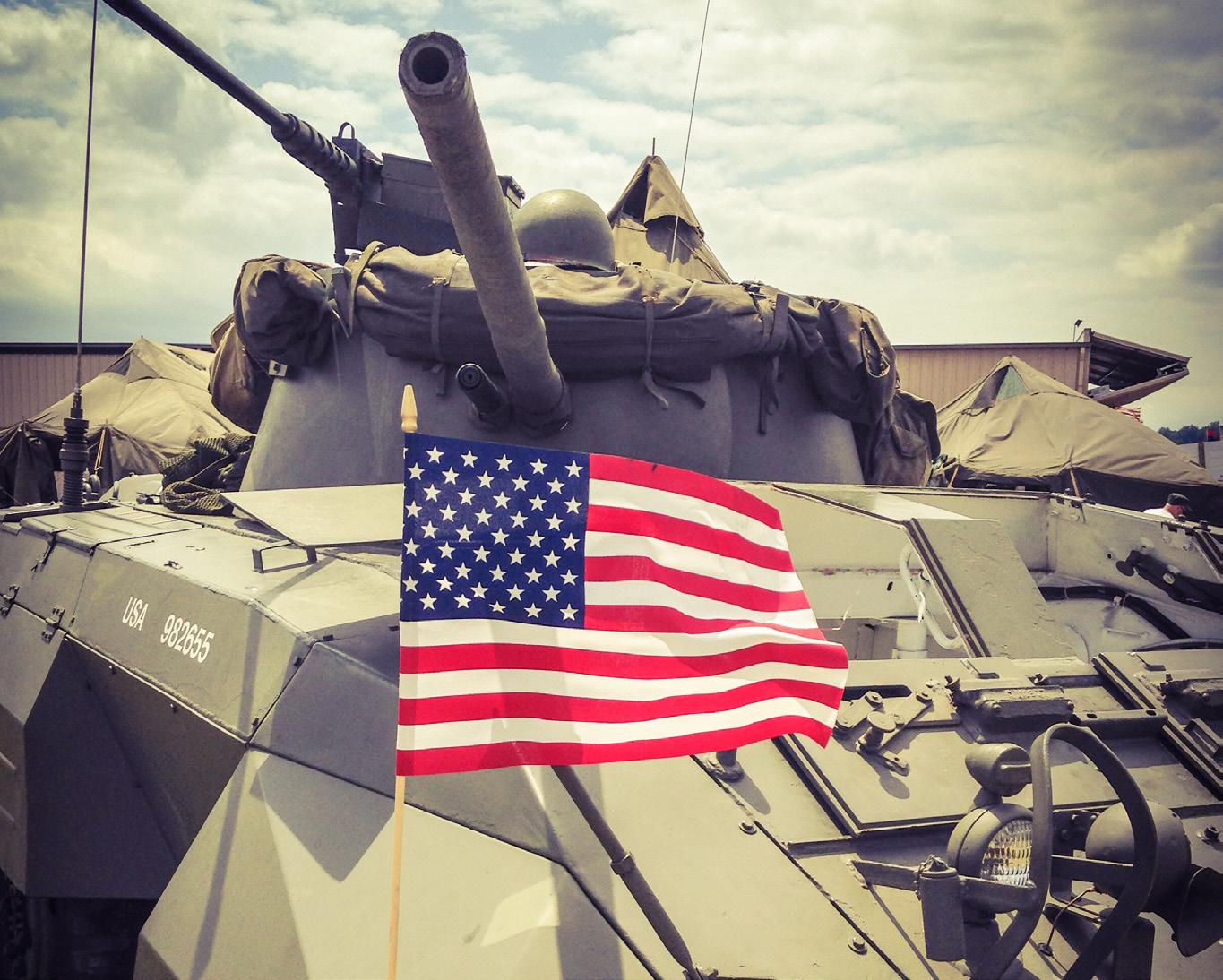
NORMANDY CHAPTER 3

© 2023 TWISTED BOMBSHELL




NORMANDY CHAPTER 3

© 2023 TWISTED BOMBSHELL



NORMANDY CHAPTER 3
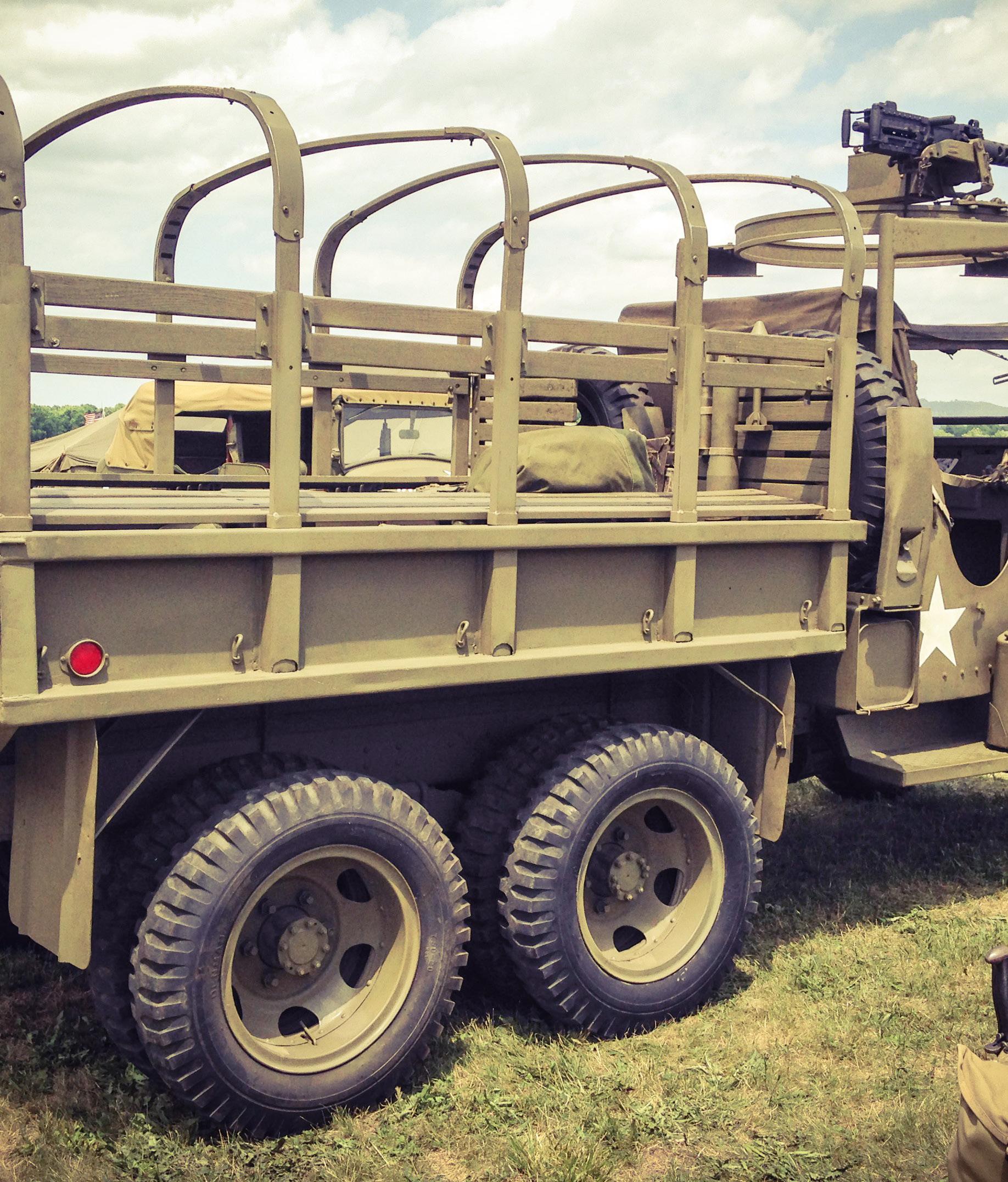
© 2023 TWISTED BOMBSHELL



NORMANDY CHAPTER 3
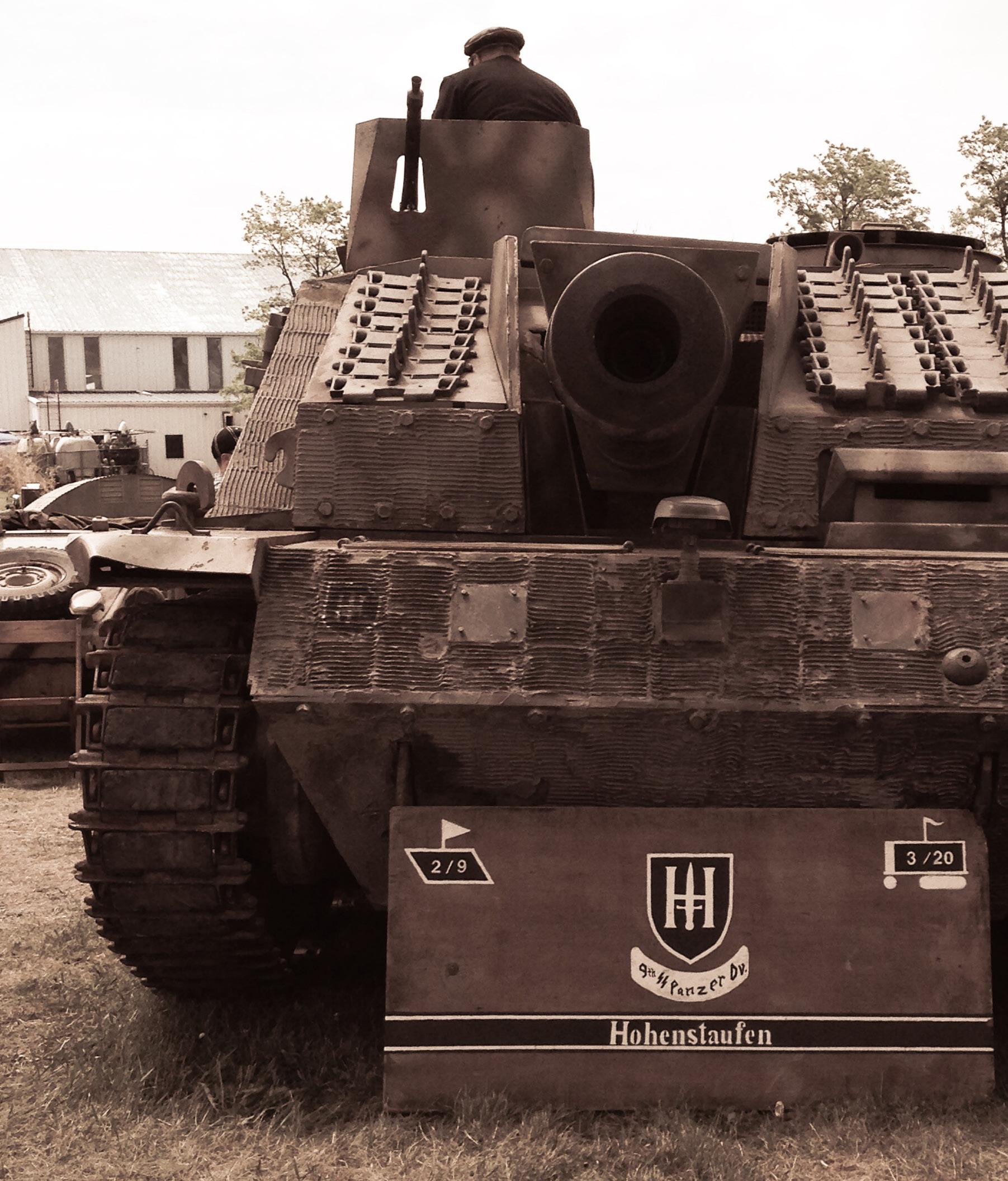
© 2023 TWISTED BOMBSHELL


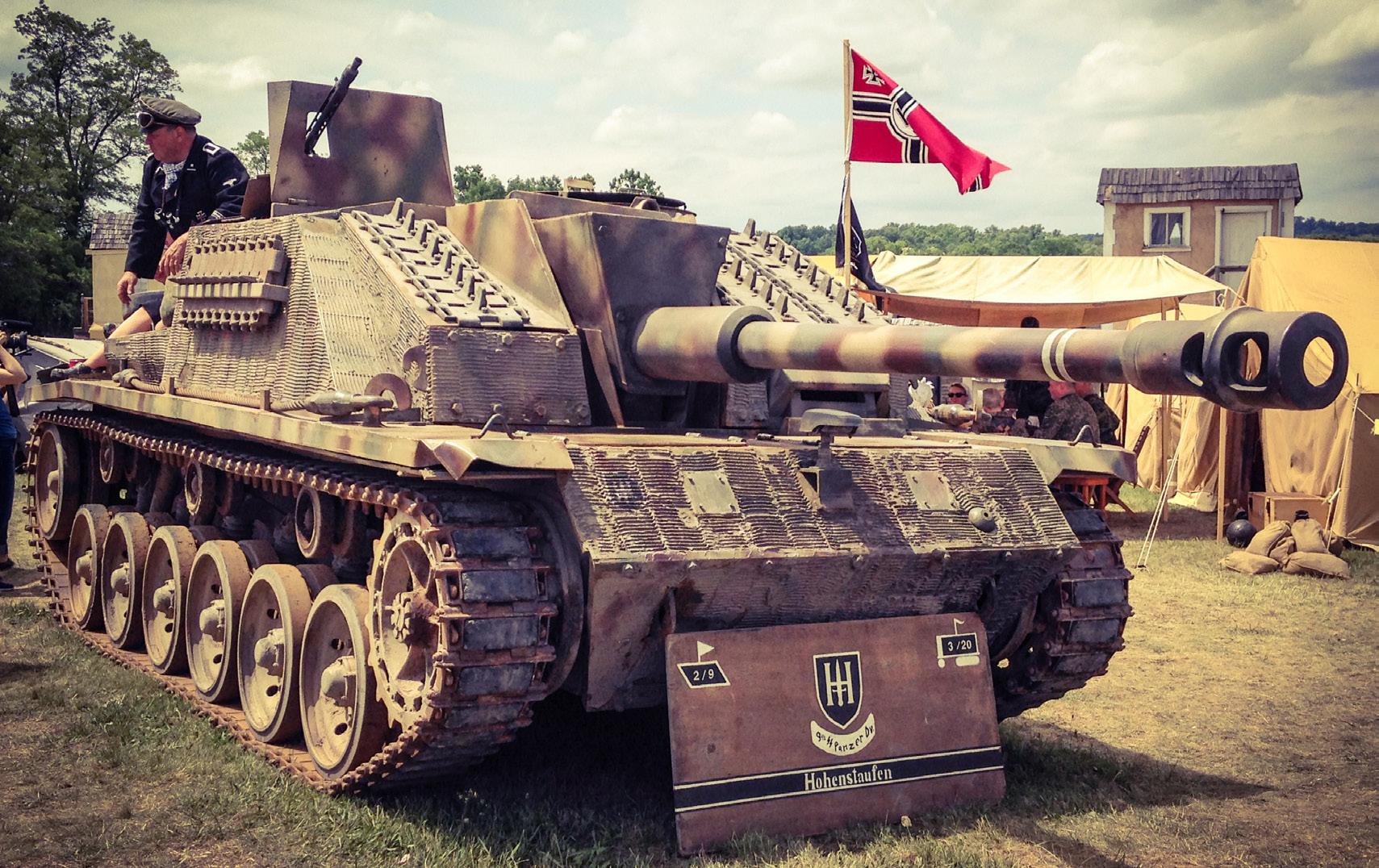

NORMANDY CHAPTER 3

THE HALF-TRACK

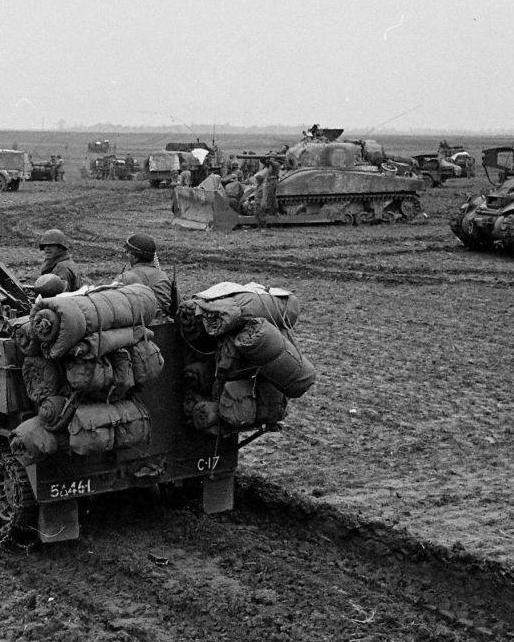
CHAPTER 4
© 2023 TWISTED BOMBSHELL
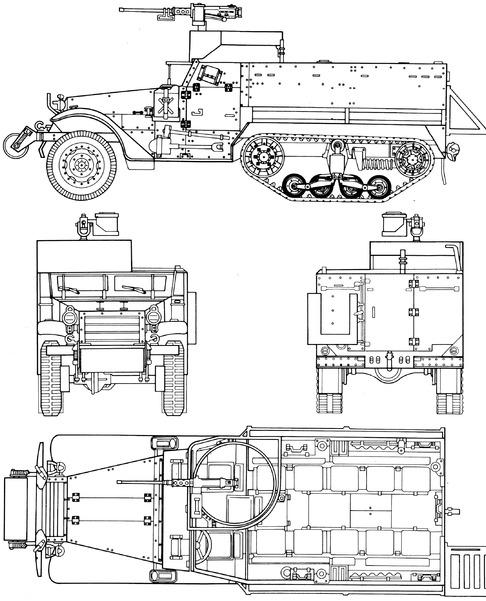
© 2023 TWISTED BOMBSHELL
THE HALF-TRACK
CHAPTER 4

WHAT IS A HALF-TRACK YOU MIGHT ASK...
Before we continue, let’s review real quick Richard Deverter’s job while in the Army and his main mode of transport while serving in the 49th Armored Infantry Battalion. Richard served as a crew member on a Half-Track. His job was to provide fire support during an assault, haul supplies, evacuate the wounded, provide armored escort, and use the Half-Track to act as a mobile communication base when needed. Well, what is a Half-Track you might ask... Thanks to the internet, here is everything you need to know about a Half-Track.
The M3 half-track was an American armored personnel carrier half-track widely used by the Allies during World War II and in the Cold War. Derived from the M2 half-track car, the M3 was extensively produced, with about 15,000 standard M3s and more than 38,000 variant units manufactured.
The M3 was extensively modified with several dozen variant designs produced for different purposes. During World War II, the M3 and its variants were supplied to the U.S. Army and Marines, as well as British Commonwealth and Soviet Red Army forces, serving on all major fronts throughout the war. The M3 and its variants were produced by many manufacturers including Diamond T, White Motor Com -
pany, and Autocar. They were adapted for a wide variety of uses, such as a self-propelled anti-aircraft weapon or self-propelled artillery. Although initially unpopular due to its lack of significant armor or a roof to protect the crew from shrapnel, it was used by most of the Allies during the war.
The M3 half-track was 20 ft 3 in (6.17 m) long, 7 ft 3.5 in (2.223 m) wide, 7 ft 5 in (2.26 m) high and had a gross weight of either 17,650 pounds (8.01 t) (M3) or 18,425 pounds (8.357 t) (M3A1). The wheelbase was 135.5 in (3.44 m) long. The suspension consists of a leaf spring for the two front wheels, while the rear treads had vertical volute springs. With a fuel capacity of 60 US gallons (230 L), the M3 could carry its crew (one driver) and a squad of 12 soldiers 220 miles (350 km) before refueling, while protecting them from small arms with light armor (6–12 mm of armor). The vehicle was powered by a 148 hp (110 kW) White 160AX, 386 in3 (6,330 cc), 6-cylinder gasoline engine.
The design, which used many commercial components to improve reliability and the rate of production, was standardized in 1940 and built by the Autocar Company, Diamond T Motor Company, and the White Motor Company. With a White 160AX engine,
the M3 was driven through a manual constant-mesh (non-synchromesh) transmission with four forward and one reverse gear, as well as a two-speed transfer case. The front suspension uses leaf springs, while the tracks use vertical volute springs. Braking was hydraulic assisted while steering was manual. Onboard electronics run on a 12-volt system. The vehicle uses two tracks made of molded rubber over steel cabling with metal track guides.
Infantry rifles were held in brackets behind the seats while ammunition and rations were generally stored underneath. In 1942, the vehicles were fitted with small racks for land mines on the outside of the hull, just above the tracks. In combat, many squads found it necessary to stow additional rations, ruck-

sacks and other crew stowage on the outside of the vehicle. Luggage racks were often added in the field, and later vehicles were fitted with rear-mounted racks for this purpose.
Early vehicles had a pintle mount just behind the front seats that mounted a .50-caliber (12.7 mm) M2 Browning machine gun. The later M3A1 adopted a raised, armored “pulpit” mount for the .50-caliber machine gun over the front passenger seat, and additional mounts for .30-caliber (7.62 mm) machine guns along the sides of the passenger compartment. Many M3s were later converted to M3A1s. The vehicle body was fully armored, with an adjustable armored shutter for the engine radiator, and adjustable bulletproof panels with vision slits for the wind -
©
2023 TWISTED BOMBSHELL
THE HALF-TRACK
CHAPTER 4
shield, driver windows, and passenger windows.

The development of an armored half-track began with ordnance directive OCM 14188 to convert an M3 Scout Car into a half-track. The prototype was built at Rock Island Arsenal with help from White Motor Company and was designated the T7. It had the same chassis and engine as the M3, but had larger front wheels and a shorter front clip. The armor consisted of 1/4-inch thick hardened armor plate, and it was armed with two M1919 machine guns and one M2 Browning machine gun operated by a crew of eight. Tests at Aberdeen Proving Ground in 1938 demonstrated unsatisfactory performance due to the front-wheel drive. The T7 was converted back into a scout car and returned to the Army.

Throughout 1939 and 1940, the M2 half-track car was prototyped and developed by the Army at Aberdeen Proving Grounds. The M3 was developed as a larger version of the M2 equipped with two M1919 machine guns and an M2 Browning machine gun for combat usage. The M3 also added a rear door and five additional seats in the rear. The M3 was tested at Aberdeen Proving Grounds in the summer of 1941 and was accepted into service soon after.
In US service, it was intended that the M3 would be issued to armored infantry regiments. It was also quickly put into action with the Provisional Tank
Group when the Japanese Army began their invasion of the Philippines. At first, there were multiple complaints due to several mechanical difficulties. These were rectified by the Ordnance Department after receiving field reports from the Philippines. The M3s first use in its intended role was during Operation Torch. Each armored division had 433 M2s or M3s, 200 in the armored regiments and 233 in the armored infantry regiment.
The half-tracks were initially unpopular and nicknamed “Purple Heart boxes” (a grim reference to the US Army decoration for combat wounds) by American troops. The chief complaints centered on
the complete lack of overhead protection from artillery shells bursting overhead and that the armor was inadequate against machine gun fire. Omar Bradley quoted in his report about half-tracks that it was “a competent and dependable contrivance. Its bad name resulted from the inexperience of our troops who attempted to use it for too many things”. Another major issue with the M3 was its fixed rear idler, which often broke on rough terrain. Commanders in North Africa bought parts to build spring-loaded rear idlers that could handle the rough terrain, which the Ordnance Department then approved as an official fix. In 1943, the M3 served in Sicily and Italy and received positive reports of it in action. It operated in Operation Overlord and served in Europe for the
remainder of the war.
The vehicle was generally considered very mechanically reliable, although there were two major complaints: the vehicle had a wide turning radius and lacked power steering, the latter especially evident when using narrow European streets. The unique design of the track, made up of steel bands with a rubber contact surface vulcanized to them, made replacement difficult; if the track became damaged or the steel bands stretched out, the entire track had to be replaced. A track with replaceable blocks was suggested as an alternative.
Total production of the M3 and its variants ran to nearly 54,000 vehicles. To supply the Allied nations,

© 2023 TWISTED BOMBSHELL
THE HALF-TRACK
CHAPTER 4

International Harvester produced several thousand of a very similar vehicle, the M5 half-track, for LendLease.
It’s been said by some military vehicle experts that “halftracked vehicles achieved their glory during WWII with the Allied and Axis forces.” However, there were U.S. military half-tracks that served in WWI, such as the McKeen Balloon Support Vehicle. The use of observation balloons for directing artillery fire was an established practice during WWI (first used during the U.S. Civil War). The balloon was transported by the support vehicle to a position near the enemy and then inflated. After being launched, the balloon remained tethered to the support vehicle by
a steel cable. The observer in the balloon’s gondola used a wire telephone to direct artillery fire upon enemy positions. Rapid ascent and descent, as well as a fast retreat by the support vehicle, were essential to the life-span of the balloon, its pilot, and the support crew, because the enemy did not take kindly to being observed and shelled. Half-track vehicles were ideal for this duty because they possessed the best characteristics of both wheeled and full-tracked machines… good weight-carrying ability for their own weight and size, plus superb cross-country agility, combined with relatively high speed. In addition, half-tracked vehicles used many components that interchanged with those of similar wheeled trucks, which simplified supply, maintenance, and repair.


© 2023 TWISTED BOMBSHELL
THE HALF-TRACK




4
CHAPTER

THE FRONT LINE


CHAPTER 5
© 2023 TWISTED BOMBSHELL

© 2023 TWISTED BOMBSHELL
THE FRONT LINE
CHAPTER 5
LET’S RETURN TO THE FRONT LINE WITH THE 49TH ARMORED INFANTRY BATTALION.
Now that you learned all about the Half-Track, let’s return to the Front Line with the 49th Armored Infantry Battalion.
22 February, 1945
An FO moved in with the first platoon, and started to direct fire on the Kraut positions across the river. The Krauts evidently located the OP, for the first platoon experienced frequent and fairly accurate shelling for the rest of the time. At dusk, Minton came up with his track, and drew a barrage of fire from mortars. One of these shells was a direct hit on the CP, which destroyed the OP. S/Sgt Hensley found that a piece of shrapnel from this round had chewed into his notebook which he was carrying in his hip pocket. It was during this barrage that we received our first Holland casualty, Pfc. Anton Heintz, ‘Polkys’ best friend. The second squad, exposed on the left flank, received a lot of fire, both artillery and small arms, and Pfc. Albert Kiselica cut his hand diving for cover and had to be evacuated along with Heintz.
The second platoon, too, was troubled with shelling during the day, but found that many of the shells contained high explosive propaganda which made good reading, if nothing else. At about 2200, Chester Hobbs,

standing guard, spotted a small enemy patrol, and blasted away at them with such vigor with his carbine that the men on the machine gun thought it was another machine gun, and opened fire as well, and for awhile a real battle seemed to be in progress. The patrol escaped.
The third platoon, though in reserve, had a little excitement when a hand grenade was thrown at one of their mortar positions at about 2200. The grenade was about thirty yards wide of its mark, though, and caused no casualties. Although a patrol was sent out to investigate, nothing was found. Reports were received in Posterholt of enemy patrols in the town, and patrols led by Lt. Kenneally and Lt. Bell were sent out to investigate, but failed to encounter anything.
At 0245 the preliminary barrage for the jump-off across the Roer started, and lasted 45 minutes. The Krauts replied by heavily shelling our positions, cutting communication lines in several places. Jameson and Sena, while
repairing these lines were caught in a barrage, and Sena was slightly wounded by a rock torn up by these explosions, which struck him in the ankle. Telephone maintenance was discontinued for the time being.

© 2023 TWISTED BOMBSHELL
Tanks came up to join the first platoon at Paarlo, and light shelling was experienced throughout the day with small arms fire on the second squad positions.
The second platoon experienced heavier artillery during the day, and Lt. Meech, believing that the enemy OP might have been located in a haystack about 500 yards southeast of Holtz, directed fire by the TDs that were attached to the second platoon on this position. Taking a squad of men, mounted on the back of one of the TDs, he went out to reconnoiter. No enemy were found around the haystack, but one of our tanks, mistaking the TD for an enemy tank, opened fire on them, and the boys had a few bad moments before the mistake was cleared up.
24 February, 1945
Lt. Rankin led patrol from the first platoon to reconnoiter the town of Voorsel, and was able to determine that about two squads of Krauts were occupying that position. They were sighted, however, and a brief exchange of fire was made, but all returned safely. The shelling of the first platoon positions was heavier than ever during the day, and it was during this barrage that we lost Pfc. Stuart Poulson, the first man in the company to be killed in combat. Another patrol was sent out that night to gain information, but nothing was gained. During the night, the second platoon sent out a patrol led by Lt. Meech to reconnoiter Trieste, but could find out nothing about the strength in that position, except that it seemed to be lightly held.
25 February, 1945
The third platoon sent up two squads to relieve the first platoon at Paarlo, while the first platoon moved out to attack Voorsel. The second platoon moved out from Holst
THE FRONT LINE
CHAPTER 5

and set up a base of fire, and at dawn the first platoon, supported by a platoon of tanks from C Co. of the 36th attacked Voorsel. They were surprised, and pleased to find that the Germans had abandoned the position, and no resistance was encountered from the group of frightened civilians left in the positions. The Krauts had plenty of time before they left the area to sow mines and booby traps in large numbers. Lt. Rankin was injured by a Shu mine, but continued to direct the consolidation of the positions; he later returned to the company. Pfc’s Beck and Ray Sena (his second of the war) were wounded at this time.
While Voorsel was being consolidated the second platoon moved out to take Trieste, while the first platoon set up a base of fire. The second platoon attacked, and took their objective, without encountering opposition, but again ran into a heavily mined and booby trapped area, from which quite a few casualties resulted. It was during this operation that Pfc. Hans Bergmayr was killed, and Pvts. Jack McDade and Leo Mallet were wounded. Artillery fire began coming in on the second platoons positions, while they were organizing, and S/Sgt. Leroy Davis and Pfc. Frank Sposito were injured by this fire, but later returned to the company.
We had had our baptism of fire and had not emerged unscathed. The first and second platoons settled down to hold their positions while in Paarlo, and the 88th Recon moved into Holst.

© 2023 TWISTED BOMBSHELL
26/27 February, 1945
The third platoon spent the day moving back and forth between Holst and Paarlo, while the first and second platoons, although receiving some artillery fire, spent a fairly peaceful time and sent a few squads back at a time for showers, hot chow, and a little much needed rest. We were a blurry-eyed, unshaven lot by this time, but we were combat soldiers, and we took a little pride in this at least. The fourth platoon during this time had been outposting an area for battalion. Though they suffered a few scares, especially from the artillery going off at unpredicted times, around their positions, practically caving in a few ear drums, they met with little trouble. This phase is referred to by the fourth platoon veterans as the ‘Fourth platoon’s phony war.’ It was during these two days that S/Sgt Thomas Schwartz was evacuated suffering from concussion.
At 2200 we were relieved by a Cavalry Recon. outfit and we concentrated in Posterholt, preparing to move out again.
28 February, 1945
At 004S we left Posterholt, crossing the Roer River into Germany, and halting at Hllsfarth. Here we stayed for about an hour and a half, preparing for the attack of Arsbeck, Germany. After this break the company moved out in battle formation, mounted in the vehicles. We were very nervous at this time, and everybody looked anxiously in the sky for Messerschmidts, or scanned the woods for snipers, as we passed by. The third platoon led in the attack, supported by a platoon of tanks. and a squad of engineers, and at approximately 1500 the town fell with-
THE FRONT LINE
CHAPTER 5
out opposition, and after reconnoitering the surrounding territory we decided to remain there for the night, resting up from the long trip and action we had just finished.
1 March, 1945
The company rose early to continue action against the enemy. However, the march was called off, so we spent the day cleaning up ourselves and our weapons. Patrols continued to investigate the surrounding pillboxes and houses, and several prisoners resulted. The Investigating was done by the fourth platoon. Teddy Waigenfeld, our German speaking Philadelphian, helping a great deal in the persuasion, of the Krauts.
2 March, 1945
As we moved out about noon, we were part of CCB, which was in reserve, and therefore did not expect much action immediately. The weather, which had been warm, dropped well below freezing, and we spent a cold night sleeping in the tracks about 3 miles north of Locht, Germany.
3/4 March, 1945
We pulled into Eyll, Germany, where we spent two days. About five hundred cases of eggs were discovered in a warehouse and captured, the diet being enriched by these as well as by a good sized beef, which had fallen casualty in Arsbeck. During our stay here some of the gaps in our strength were filled up by the return to the


© 2023 TWISTED BOMBSHELL
company of Sena, Syes, Boisvert, and Hall, along with six new replacements. Gaps in the T/P were filled by the promotion of Cpl. Jacobs to S/5gt., Pfcs. Streeter and P. T. Peterson to Sgt., T/5 Ryder to T/4. and Pfc Minton to T/5.
5 March, 1945
At 0430 we left Eyll, Germany. The objective was to reach and hold the west bank of the Rhine, and if possible, to reach the east bank and take the town of Wesel. The Krauts, realizing that this was the last escape gap for their men trapped in the pocket west of the Rhine, had reinforced this area, throwing in elements from five or more divisions, and were determined to hold it at all cost. We had no inkling of this until at about 0900, coming to the little town of Lintfort, we ran suddenly into fanatical opposition. The third platoon, in the lead, moved through the town mounted, engaging several of the enemy in the town square with fire from their vehicular weapons, and continuing through the town, leaving the mopping up operations to the supporting platoons.
Then, without warning, a German anti-tank gun, firing from the left flank, caught S/Sgt Don Drake’s lead track, disabling it. Men were seen running to their positions, and it was obvious that we had been seen. However, they had the advantage of prepared positions, and the men, forced by the anti-tank fire to dismount, found themselves exposed to fire from small arms and automatic weapons almost immediately. They sought what cover the shallow ditches to the side of the rood offered, and returned the fire, while Pfc. Matt White and Pvt. Joe Irvine manned their heavy thirties from their half-tracks, and managed to keep the anti-tank gunners down to an
THE FRONT LINE
CHAPTER 5

extent that they could not fire again on the half-tracks. The only real cover in the area was a large brick house, about fifty yards from the road on the right. The platoon began to inch their way slowly and painfully towards this house, while returning the withering fire which plagued them every step of the way. It was fully an hour before the last elements made the house. Meanwhile tanks had been sent up to support the men, and although a tank was hit and set afire by a shell from the anti-tank gun, they managed to knock it out.
The battle had come on us with such rapidity that the supporting platoons had no chance to find out what had happened at the head of the column. The second platoon, which had followed behind the third platoon dismounted and moved up to support the third platoon, but were met by heavy fire, and forced to take cover behind the tanks. The third platoon, meanwhile, had reached the house, and S/Sgts. Taylor and Galletti, with about twelve men cleared the house, flushing out 25 soldiers and 10 civilians. Mortar fire commenced to land at this time. The infantry, working with the tanks, drove the enemy from their positions, but these positions were well emplaced and strongly held, and in taking them we had suffered serious casualties. Pfc. Victor Gabrick, Pfc. Edward Herrera, and Pfc. John Gallagher had been killed. T/5 Lavon Swank, Pfc. Elbert Brewster, T/4 Michael Werner, Lt. Timothy Kenneally, Pfc. Carroll Guinn, Pfc. Harry Kessel, Pfc. Edward Taylor, Pfc. Elmer Kombrink, Pfc. Dwight Craig,
Some of these wounded were lying in exposed positions, and the medics, coming to the aid of these men through the fire, suffered casualties. Pvt. Lawerence Twickler, a medic’s aid. and medics Pfc. Glen Parmelee and Pfc. Michael Holzman were hit while attending the wounded, and Pfc. Fred Bridges, coming to the aid of the medics was also wounded. Cpl. Pat Moran, aiding the wounded, spied two snipers shooting from a building three hundred yards to the left front, and picking up his rifle, dropped them both. We were hard hit, but we kept tenaciously at the enemy, and it was he who was finally forced to withdraw. The second platoon, already suffering one casualty in Pfc. Diddie Blank, moved up to the crossroads, cleared several pill-boxes and bomb shelters along the way, which were found to be abandoned, cleared houses, and captured a few prisoners. They moved up the road to the right, and set up a defense in a creamery.
At 1600 both platoons were withdrawn, and placed In reserve, while the company aimed another drive at Winterswick. We were picked up by tracks from C Co., and rode to the outskirts of Winterswick. Here we dismounted and started out on foot, with the first platoon on the left of the road, the fourth platoon on the right, and the second and third in support. The tankers, earlier in the day had tried to take the town without infantry support and had been met by panzerfausts. They had taken a terrific beating. The platoons moved up towards the town under heavy enemy artillery fire. The first platoon reached and secured the houses on their side of the road, but the fourth platoon suddenly came under direct fire from 88s
and two shells hit their positions with deadly accuracy. The second platoon, coming up in support, located one of these guns, and laying down bazooka fire on it, were able to pin the crew down until a tank could be brought up to knock it out. The fourth platoon then continued to advance clearing out the houses on their side of the road and flushing out a great number of prisoners. The men detailed to take prisoners back were harassed by heavy artillery fire and were forced to take cover at every few steps.
The fourth platoon again moving forward was pinned down by burp gun fire, which seemed to come from around a house set back from the road to the right. Tanks blasted this position, and T/Sgt. Lowery, taking Pfc.s Jim DeDecker, Errol Davis, and Antonio Titario, advanced on this position and captured the house, which yielded a captain and over fifty prisoners. These men had been manning several 20 mm. and 88 mm. guns in the area, but had taken to the cellar when the tanks cut loose. A short time later we were relieved by the 35th Infantry Division and were withdrawn for the night.
Winterswick had been won, but not without losses. Pfc.s William Urban, leon Mormon. and Willard Evans had been killed, and Pfc. Mike Pavich, Pfc. Clarence Freitag, Pvt. Toye Richmond. Pvt. Lloyd Haycraft, Pfc. Charles Zinderstein, and Pfc. J. D. Bowman were injured during this operation. Captain Clarence E. Smith, who ran the company despite personal risk and had been directing the attack on Winterswick, was killed in the turret of a tank by the heavy shelling. He had been coordinating the attack from outside the tank but had been forced to seek more cover from the flying shrapnel. His death
Pfc. Andrew Triano, and Pfc. John Meinkoth were injured.
© 2023 TWISTED BOMBSHELL
and the others we had suffered during the day had shaken the company, but we continued even more fiercely to root out, kill, and pursue the enemy, forcing them to give up positions they had been instructed to hold at all costs. We won’t forget the pounding we took that day. The marks of it were on our faces and in our eyes. Events had happened so quickly that it had left us half stunned, and men many of us had known and loved had been suddenly wrenched from us, some never to return, and the violence and emotional strain of the day left us exhausted and nerveless as the tension was relaxed. Nobody laughed much that night.
6 March, 1945
Prisoners came pouring in all day. The battlion total was almost 350, and from these prisoners it was learned that we had been facing units from a Panzer Grenadier Reg-
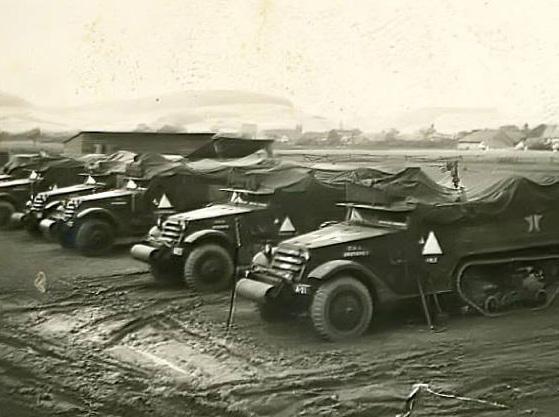
THE FRONT LINE
CHAPTER 5
iment, the 7th Parachute Division, the 20th Parachute Regiment, the 1225th Infantry Regiment, the 190th Infantry Division, and other miscellaneous units. Several men whose outstanding actions won recognition were later decorated. T/Sgt. Lowry was later promoted to lieutenant, and received the Silver Star for his work as Winterswick. Sgts. Cappelleti, and J. A. Taylor were later decorated with the Bronze Star for their work in organizing their platoon and securing positions at Lintfort. T/4 Doyle. who did a magnificent job in aiding the wounded, and organizing their evacuation, was awarded the Bronze Star, also. Lt. Meech had been the senior officer on the spot and had taken over the company when Capt. Smith was

killed, and Lt. Bell took over the command as soon as his duties as Motor Officer could be discharged.
8 March, 1945
After two days of comparative rest, we mounted up in the tracks and drove to Rheinberg, where we dismounted and pressed on on foot towards the primary battalion objective at Ossenberg. We were delayed here due to stiffening resistance on the flank which was stalling the 35th on the flank, but once more pushed forward, with the second platoon in the lead. Co. C, in front of us ran into opposition, and got pinned down, blocking our advance, and forcing us to stop in on open field. The enemy evidently had observed fire, for this area at once was subjected to a tremendous mortar and artillery barrage. The second platoon, being in the lead on this operation, naturally took the brunt of this fire, and suffered the most casualties. They moved into houses, and the rest of the platoons moved up through the fields to seek cover. The area was so plastered with shell craters that to those who saw it later, it scarcely seemed possible that so much as a mouse could have crossed that field without being hit. We dubbed it, with good reason, ‘Death Valley’.
When the way became cleared, we pressed on to the first objective. The first platoon took over the lead, and moved out to clear the houses on the outskirts of Ossenberg. The work went forward under difficulties, for there was artillery and mortars raining in, and snipers were active, which added to the general confusion. Many prisoners were taken along the way.
The first platoon cleared the houses and dugouts while the third platoon held them. The fourth platoon was
flank guard for the tankers who were setting up a base of fire. They drew fire from 88s, and suffered a few casualties from them.
Artillery fell during the day and throughout the night. We set up a defense and had some chance to relax, but few men got much sleep. During the last few days we had had enough artillery thrown at us to last us a lifetime, and it is doubtful that any of us will get any pleasure out of a fireworks display again. We had heard that those 88s could drop a shell in your back pocket, we now knew that they could specify which back pocket.
There wasn’t a man among us who hadn’t suffered a near miss that day, and many who had been hit. Pvt. Frank Dowdy, Pvt. Gustave Burtcher, Pvt. John Heath, S/Sgt. Darland Jacobs, Pfc Martin Halttunen, Pfc. Peter Bleskan, Pfc. Silvio Salvestrin, Pfc. Ernest Melendrez, Pfc. Ray Sena
(for the third time in three weeks), and Pfc. George Leveille were wounded. S/Sgt. Robert Hardin was wounded when coming to the aid of Leveille. Pfc. James Abersold was killed in this action. Once again the price that we had paid to accomplish our mission had been heavy.
10, 11 March, 1945
The third platoon withdrew from the outposts, after the 35th Division had bypassed us and captured the town of Borth, beyond. The days were generally fairly peaceful, and hot chow came regularly. On the 10th, Pfc. Robert Flum was wounded. On the 11th we mounted up and pulled bock to the rear for a rest, a much needed and very welcome rest. We arrived in Venlo, Holland, at 1600.
We were greeted in Venlo as conquering heroes, for the city had been recently liberated. We don’t know who lib-
©
2023 TWISTED BOMBSHELL
erated it, but we took it over. We stayed here in Venlo enjoying the warm reception of the Dutch families, and their beautiful daughters. After that tough deal at Llntfort this was heaven. We stayed here until the 26th of March, and the whole company took every advantage of the much needed rest. Of course there was a training schedule -not too tough, but still a reminder of things to come. The training that we took almost every day consisted mostly of preparing us for crossing the Rhine River. Such as river crossings, mine training, BAR training, sandtable lecture on the east bank of the Rhine River, and of course Orientation lectures.
Later on Scotty managed to procure some twenty odd gallons of brandy, which was consumed with vigor and brought almost devastating results. In the evenings there were movies, at our home made theatre, which were very well attended both by military and civilian personnel.

THE FRONT LINE
CHAPTER 5
Two days after we got settled in Venlo, P. X. rations came in and included in their contents cokes, which we had not had since England. One day we attended a battalion formation in which awards were given to some of the men that had distinguished themselves in the previous battles. General Devine made the awards. This was all repeated a few days later for another group of worthy men.
It was in Venlo that a shift in our officers was made. Lt. Cone was transferred to Co. A, and Lt. Clement joined us coming from the 2nd Armored Division. Here too, promotions were presented. S/Sgt. Ralph Satava was promoted to T/Sgt., Pvt. John O’Donnel and Sgt. Gerald Nolan were promoted to S/Sgt., Pvt. Chester Hobbs,

Pfc. Richard Brown, and Pfc. Clifford Dale were made Sgt., Pfc. Jim Dedecker was advanced to Cpl., and Pfc.s Robert Kametz and Leonard Hensley, both drivers, were made T/5. Hosea Arnett, Frank Sposito, Irving Davis, and Andy Triano returned from the hospital, while Joel Parrott and William Carasik left on a month’s furlough to England. The company was brought up to strength again with 49 men from the ‘Repple depple’.
We all watched the news very closely, and were pleased that General Patton was moving so fast, and then news came that the I H Army had crossed the Rhine River on the Remagen Bridge, and that the 3rd Army had also crossed. Finally one day weird rumors came floating around that we were due to cross the Rhine and go tearing hell-bent towards Berlin. In fact we were due in Berlin in two weeks. Well, the rumors came true in a miniature sort of a way. We did leave Venlo March 26th, at 2327, but in two weeks time there was still plenty of fighting to be done before Berlin was captured.
26, 27 March, 1945
The company was alerted and moved out, destination Berlin. All night we traveled, trying to get a little shut eye, storing up sleep for an uncertain future. Kraut planes were overhead, and searchlights played through the sky, but there were no attacks. We passed through one of our old battle grounds, at Lintfort, and crossed the Congo Bridge about 8 Km. south of Wesel at about 0700. Once across the Rhine, we bivouacked, rested, built fires, and got a good hot chow. The total trip was 37 miles. Later in the day We found billets and stayed in them for the night.
28 March, 1945
At 0900 we moved five miles, to Bruckhausen, north of Dinslaken, and bivouacked in a wooded area. We were in support of CCA at that time, and most of us sunned ourselves and slept a major share of the day, but not Bill Glass. He read a book called ‘Berlin Olympic Games’ for his relaxation. That night some of us dug slit trenches to sleep in, and others said, ‘To hell whit it!’ The ‘to-hellwhits-Its’ came out all right, because we moved again shortly after dark to spend the night in another wooded area a few miles distance.
29 March, 1945
Early in the morning we were on the move again. We had thought we would go mounted, but they surprised us, and we moved out on foot. We reached our objective, Dorsten, Germany around 0800. Dorsten was a mess. It had been hit so hard by bombers and artillery that it was little more than a tumbled pile of bricks. Dorsten was definitely “Kaput” as far as we could see. The long hike was wearying, especially for the men in the weapons squads who had to carry their machine guns and the radio men, Low, Thorpe, Carasik, and Langill, who had to follow energetic platoon leaders carrying the heavy 300 radios on their backs.
After much delay we were assigned to clear out certain areas. No enemy was found, and we moved into billets for the night, except for the third platoon, who were stuck with the outpost detail, and dug in to protect the Engineers, who were building pontoon bridges across the Lippe Canal. During the day an occasional shell had fallen, and Pvt. Hugh Brunson had been slightly injured.
©
2023 TWISTED BOMBSHELL
30 March, 1945
In the morning the fourth platoon relieved the third platoon, and the second platoon crossed the canal and set up a defense around that bridge. The rest of the company either slept or explored the rubble. Here Jim B. Smith’s automatic kitchen crew of Boyles, Fischer, Kleczkowski, ‘Baldi’ Myers, Howe, Thobaben, Puffer, and Kiestler, fixed up hot chow and ‘Mailbag’ Epley brought up a welcome bunch of mail. Preparations were being made for a good night’s sleep, when an alert came, and we got up to move out again. As we were getting ready, eight enemy planes appeared on the scene, and we tried out our 50s on them, but they apparently deemed us unworthy of notice, for they passed us by without even returning our fire. At 2300 we left Dorsten for Gladbeck, Germany, arriving at 2345. We moved into houses for a peaceful night’s sleep while the artillery pounded the enemy posi-
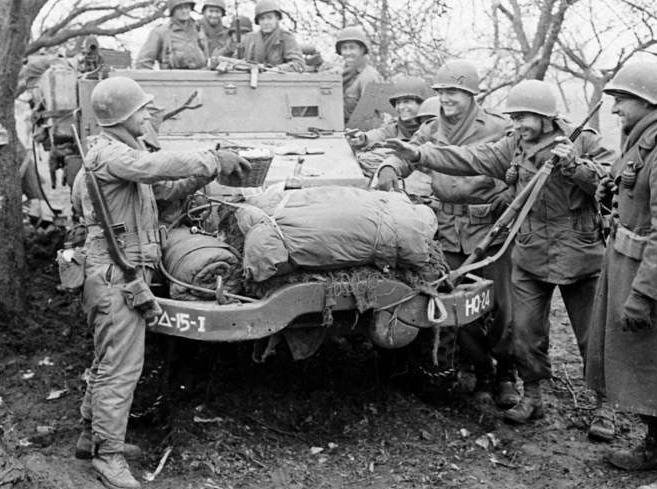
THE FRONT LINE
CHAPTER 5

tions. For once, blessedly, we received no return fire.
31 March, 1945
We arose rather late and as there was no immediate action for the day we spent our time cleaning up weapons, vehicles, and our own grimy selves. However, as we were lining up for chow that evening, orders were received to move out. We piled into the tracks and drove to Recklinghausen, where we parked along the road. We tried to serve chow again, but received orders to move out and never got to taste that chow at all that night. We heard our own artillery whistle over our heads as we drove through the night and through the rain.
1 April, 1945. Easter
We entered Wieman, Germany at 0730 and obtained billets. We spent a peaceful morning writing to our loved ones, for today was Easter Sunday, and our thoughts travelled back to other Easter Sundays, and to those with whom we had spent them. For most of us this was our first Easter away from the States. Church services were held in the afternoon. As we were on the alert, these services were short, but well attended. We moved at 1900, and after traveling for a short distance parked on a side road and spent the night sleeping in the tracks.
2 April, 1945
We started forward for Neuhaus, with the objective of taking and holding Paderborn. At 1120, a party going into Neuhaus to secure billets was ambushed, and several of the party were killed or wounded. S/Sgt. Philly, who was our member of this party escaped without injury. Billeting plans were postponed for the time being. The reconnaissance made contact, and a pitched battle took place in the outskirts of town. It seemed that this supposedly captured territory was far from cleared.
We were committed at 1500, with a preliminary artillery barrage preparing the attack. We moved up both sides of the road, coming under artillery and harassed with small arms. Tanks were called up in support. The first platoon, lead element on the right side of the road, and the third platoon lead element on the left, reached a wide open field, and started across, the rest of the platoons following. About halfway across this field the enemy suddenly cut loose with a terrific hail of small arms fire, and we dove for what cover we could find in the
shallow ditches alongside the road. They had caught us in a murderous cross-fire from rifles and machine guns.
The third platoon of ‘B’ Co. 36th Tanks came up to cover us, and at once drew artillery fire. The lead tank was hit and knocked out, and shrapnel added to the sniper fire to make the situation of the men caught in the field doubly critical. Lt. Bell withdrew his men to dig in for the night and wait for support. Obviously the krauts were well dug in, had plenty of support, and did not intend to give up without a good fight.
We set up an FPL that night, in preparation for a counter-attack that might come early In the morning. Co. A sustained a counter-attack at 0130, and we were alerted, prepared to come to their aid if the attack proved to be too strong. The counter attack was beaten off however, and there was no action on our front that night.
3 April, 1945
We moved out to the attack next morning, but held up, as the concentration of artillery could not immediately be brought to bear on the enemy. As we approached the area of the previous day’s battle, we again came under intense small arms fire. We called for artillery again, and this time we got it. The barrage was terrific, as in addition to the artillery we had the tanks firing in direct support and our own mortar crews kept their mortar tubes hot pouring out shells. It was too much for the krauts. When the barrage lifted and we prepared to move forward in the attack, they came out with their hands up, showing unmistakable evidence of shock.
The foxholes and gun emplacements had been dug in commanding and completely controlling the field, and
©
2023 TWISTED BOMBSHELL
were manned by about 50% SS, and 50% Wehrmacht. There were two companies of SS troops, the 5th Viking and the 12th Hitler Jugend, and elements of the 15th Convalescent Regt., the 19th Panzer Pioneer Replacement Bn., and the 6th Panzer Jager Bn. They were bristling with weapons, machine guns, panzerfousts, and rifles. They also had a few American weapons, which made us a little mad.
We began to clear the houses behind the foxholes, but the attack had to be held up while Co. C was taking the right flank, so we settled down to eat some of the food we found in the houses, and relaxed for a bit. A four man patrol took off, Burke, Hernandez and Walker crossing the river, while Flood protected their rear. They returned with several prisoners and the information that the town was apparently clear. The third platoon, acting on this information, took off, crossed the river and cleared some
THE FRONT LINE
CHAPTER 5
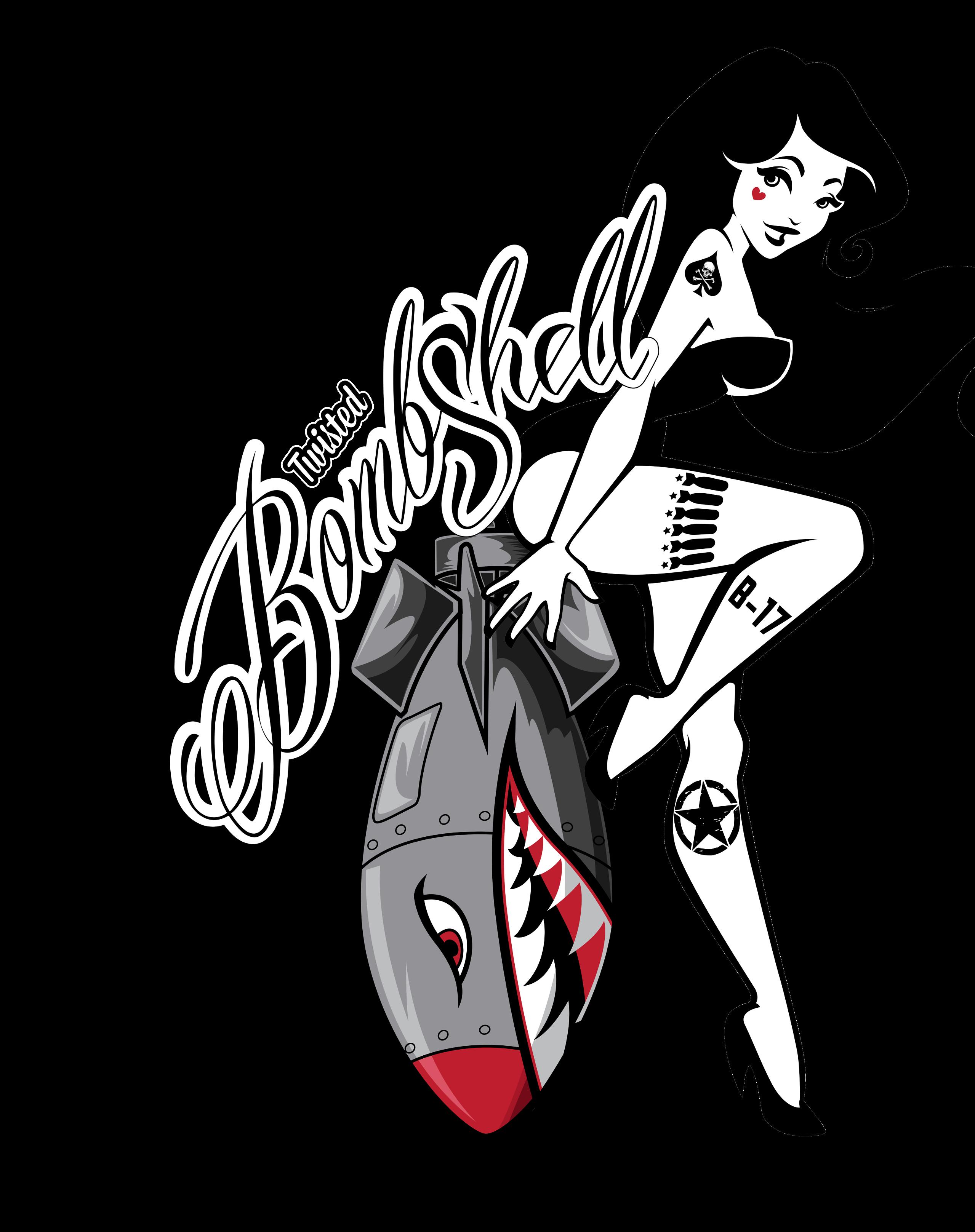
of the houses. Moving up the streets they sighted enemy tanks, and Pfc. Alpert fired a bazooka at one of them, damaging the tracks. Walker and Hernandez crept around behind the buildings flanking the tanks, and Walker let go with a bazooka round that hit the tank, possibly wounding some of the men. The platoon withdrew to the two houses next to the river at that time, and remained there until relieved by the 83rd Division.
The fourth platoon, following the third across the river were held up by sniper fire. Some of the men were able to withdraw into some houses, but the rest were pinned down for almost an hour, before the sniper could be found and disposed of. Burke and Walker, in their wan-
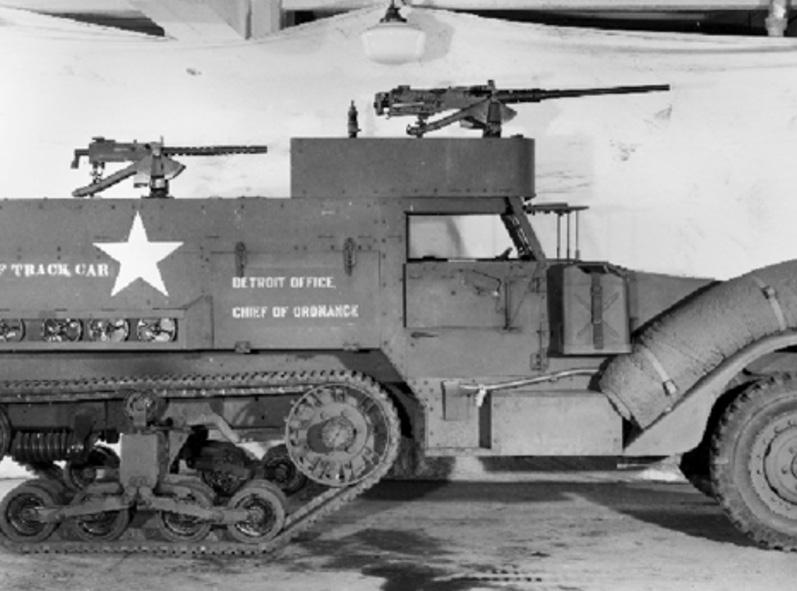
derings. found a German hospital, where a Sergeant from the 53rd Engineers, who had been wounded the day before, was prisoner. They brought him back to the American lines, finishing off a very busy and successful day.
The 83rd Division arrived to relieve us and we pulled back through the rain, to where a hot chow and the chance for a few hours rest awaited us. Five minutes after we left, the town surrendered to the 83rd Division. The Germans’ mission at Neuhaus had been to hold at all cost, and they had almost done it. We had suffered many casualties. Pfc. Charles Righini and Pfc. Solon Feldman bad been killed. Lt. William Lowery, Pfc. Errol Davis, Pvt. William Gordon, Pvt. Lloyd Gilkey, Sgt. George Hutson, Pfc. David Low, Pfc. Robert Swenson, Sgt. Al Shapiro, S/ Sgt. George Konopasek, Pfc. Barry Maley, and Pvt. Leon Gray had been wounded in the two day battle. Another Medic, Pfc. Charlie Schrum, had lost his life while going to the aid of the wounded.
We had come to admire and respect our aid men as no other group in the company. They had risked their necks many times to go out, under fire, to the aid of some poor Joe who was lying there wounded. No matter how heavy the fire, they had gone to him unhesitatingly. No one can say that the medics ever fell down on the job, and they have received enough purple hearts, and citations to prove that they often did a great deal more than their job.
With the capture of Neuhaus, and Paderborn to the north, the last escape corridor from the Ruhr pocket was sealed up. The krauts caught in this pocket now faced either surrender or death.
4 April, 1945
We were alerted for further movement, had some hot coffee. and pulled out at 0520. We traveled to a town called Geseke, Germany, where we were placed in Division Reserve, and had our first chance to sleep for a long time. How we went to it!
5 April, 1945
We ate early chow and started off at 0930, acting as advance guard in the convoy. Our Battalion Recon did most of the work, but occasionally a platoon would detach itself and check over an area for enemy troops. We passed through Overhagen, Heringhausen, Benninghausen, Eickelborn, and Ostinghausen in this manner, flushing out several prisoners. At Ostinghausen, the second platoon hit the jackpot, taking a whole company, which was marching down the road looking for someone who would take them.
Just before dusk the third platoon set out to contact the 95th Division, reported to be in a little town northeast of us. After a wild ride, made even wilder by the pitch darkness of the night and the slippery road, they finally did locate the 95th only getting lost two or three times, and only damaging one track, which ran into a tree in the dark. They returned in the wee small hours with the injured track in tow.
6 April, 1945
We departed from Ostinghausen at 1020, with the second platoon again in the lead, and again acting as advance guard. We moved south towards Opmunden, where the column was stopped by several Regal Mines
©
2023 TWISTED BOMBSHELL
strung across the road. The Engineers were called up, but before they got there, Brewers squad had picked up the mines and moved on down the road. We hit a roadblock then, and the Burgermeister of Opmunden came peddling out on a bicycle to meet us, offering to surrender the town. He returned to town and brought out about 50 prisoners, and we moved in to check the town further. While the column was halted, someone fired a shot from behind a barn, and several tanks and half-tracks opened up on the barn, reducing it to a smoking rubble. Whoever tired the shot was no doubt sorry he ever started the whole thing.
We pulled back to Bad Sassendorf, arriving about 1530, where we joined the 11th Airborne, who were already dug in around the town, and set up a defense. We then proceeded to check the town, routing out many prisoners and DPs. At 1800 we left Bad Sassendorf, and pro-
THE FRONT LINE
CHAPTER 5

ceeded towards Elfsen and Mullingsen.
The second platoon had passed through Elfsen when the column was opened up on by high velocity anti-tank fire. The second, fifth, and third squads raced madly for the outskirts of Mullingsen and set to work cearing out the houses. The first and fourth squads were behind a tank, and could not advance on the road, so the men dismounted and advanced along the road. The second platoon set up a defense, while the tanks began to cut loose.
The third platoon was behind the second when the anti-tank fire started, and made immediately for the shelter of two buildings before they could be bit. Here they wait-

ed until the fire slackened. Then they moved up with the second platoon, and set up a defense for the night.
The first platoon, though behind the leading platoons, drew fire from the right front, from a probable distance of about two kilometers. The civilians in the area expressed the belief that it was a French weapon of about 65 mm. When the fire had subsided, the first moved up on foot to join the other two platoons. The confusion had been great during this brief skirmish, but we had managed to pull it together in good time, and casualties were light. Pfc. Robert Craig. Pvt. James Frisch, and Pvt. Roger Greene were slightly injured in the deal. We didn’t capture any prisoners; we saw a small force of Germans in the woods, but we received orders not to mess with them, so we didn’t. They didn’t bother us either, and for all we know they are still wandering around somewhere.
7 April, 1945
We moved out early and continued into Mullingsen, clearing out the town, and this time taking several prisoners. The first platoon then proceeded to a small town southwest of Mullingsen, called Lendringsen, but found no enemy there. On the way, however, they cleared a patch of woods, flushing out several SS men. The company then reorganized, and with the first platoon in the lead mounting on tanks, the second following in tracks, and the third platoon walking, we proceeded to the town of Hiddingsen, where the first platoon dismounted and cleared out the place. We continued west, clearing Ruplah, Deiringsen, Meiningsen, and Epsingsen, collecting a creditable band of prisoners, and picking up several souvenirs along the way. We got word to hold up at Epsingsen, and were placed in Division Reserve
again. Mail was brought up, and we fell in at the tail end of the CCB column, while A Co. drew the point assignment. Not at all displeased with this ‘rear echelon’ assignment, we followed along as the column wound an erratic course through Ampen, Ost Onnen, Rollingsen, Sievenngen, and Gerlange.
Toward evening we received word that Co. A. in the point had run into an ambush, and we were rushed up to their support. We reached the area, and dismounted to dig in, while 88 fire was turned on us. This fire fell to our rear, however, and there were no casualties. We spent the night in our foxholes, awaiting a possible attack but none came. It was cold in those foxholes, but we were worn out enough to catch a few winks of sleep anyhow.
8 April, 1945
A thick fog rolled in during the night and stayed with us throughout the early part of the morning. At 0900 we were given the mission of flanking and capturing the north-south road out of Werl, cutting off the Germans retreat while the 95th Division and Task Force Van Houten attacked from the front and flanks. We started out on this mission, but were called back to West Onnen, where we ate chow at about 1300 and at about 1600 we moved out to an area just east of Werl. We sat around here for about two hours, while whatever our plans were changed a couple of times, and finally moved into Werl, where we went to work clearing out certain areas of the town that had been overlooked before. We took several prisoners and were fired upon a few times by snipers. Tanks were brought up to knock out the snipers, and no casualties were received. As the company moved out of Werl, the fourth and Headquarters platoons, still in town,
© 2023
TWISTED BOMBSHELL
took a terrific pasting from enemy artillery.
At 2100, Task Force Roseborough of which we were a part, moved out to attack a little town west of Werl, known as Ost Buderich. This attack was made just at nightfall. The second platoon moved out mounted on light tanks, the first and fourth following in half-tracks. The third platoon, late in leaving Werl arrived in time to support the other three platoons as they where entering the town.
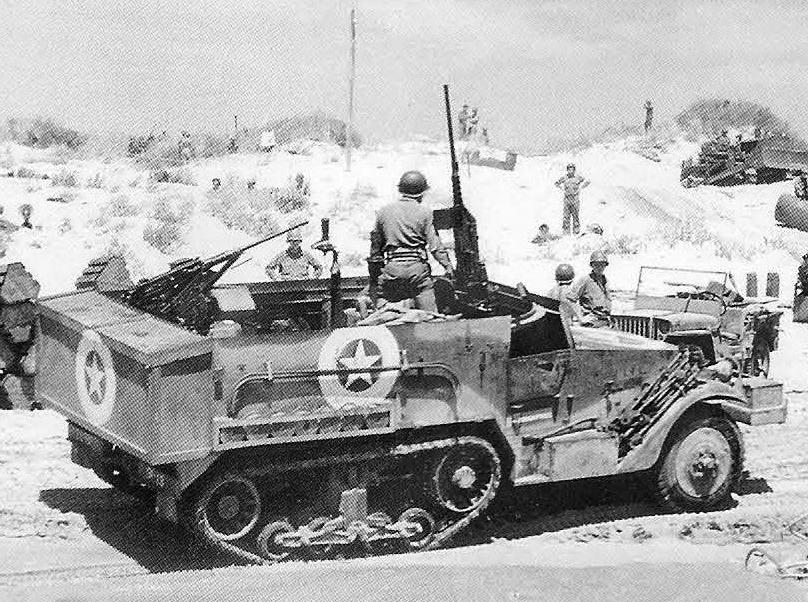
We moved out across the intervening fields, firing our vehicular weapons, while the tanks blasted away with their 75s. The tracers and the shells firing into the night made a very beautiful and awe inspiring spectacle, somewhat reminiscent of a Fourth of July fireworks display, although, a great deal of care had to be exercised at times that we did not come too close to hitting each other with the overwhelming firepower we were putting out. The
THE FRONT LINE
CHAPTER 5
Krauts were evidently quite impressed, for the only resistance we encountered was a few scattered rounds of mortar fire. Once in the town, however we received fairly heavy artillery fire, but most of it landed on the outskirts of town, while we were for the most part in the center. Casualties for the operation were light. Sgt. Raymond Fisher, Pvt. Georae Buckley, Medic Milan Bagel, and Pfc. William Cook were slightly wounded. We aet up a defense of the town and stayed there for the night. During the night the first platoon was turned out to route out about seven more prisoners, who had been left behind and gotten drunk. They were asleep in the cellar for the most part, although one of them had gone out to try and capture a

tank single handed, thus bringing on his downfall.
9 April, 1945
Co. A took over the attack and the men were withdrawn from their outposts and into town. We mounted up about noon, and proceeded to Hemmerode, in support of Task Force Van Houten, where we spent the rest of the afternoon waiting for further orders. This movement was made under artillery fire, and during the halt, artillery continued to rain on us. Here Lt. Bell was evacuated. He had taken over the Company when morale had been weakened, and although not an experienced line officer, be had lead the company in such a way that confidence and morale was restored and remained high. We felt his loss keenly at this time. The artillery fell intermittently all during the afternoon, but let up towards evening, and hot chow was served. During the afternoon the Division Artillery was brought up and emplaced around us, and we found that artillery makes a great deal of noise from the sending end too.
10 April, 1945
We were alerted early in the morning to take over the attack, and after a cup of hot coffee, by way of a breakfast, we moved out on foot, passing through Co. C, and forming up at the line of departure while a vast fleet of tanks rolled up ready to support us with direct fire. Our mission was to clear the left side of the railroad tracks up to the outskirts of Unna, while the 95th Infantry advanced on our right clearing the right side of the tracks.
The attack commenced with an artillery and tank barrage, and we moved out on a two platoon front with the second on the right and the third on the left, with the
first and fourth in support. Col. Roseborough assumed command of the company during this operation.
We held up on a north south road while the tanks were brought up and gave overhead support. We drew enemy fire from a 105 rifle set up in the town of Vob, and there were several air bursts but no casualties were inflicted. We jumped off about noon. The third platoon arrived at their first objective and cleared out a bunch of houses called Mulhausen, but no enemy were encountered except a few scared civilians. We held up again while the artillery fired into town, picking off enemy gun positions. After a lengthy barrage we moved out again, with the second platoon along the tracs and the third platoon along the road.
The second platoon encountered no resistance, until they came dose to Vob, where they drew fire from several Krauts dug in under a culvert. The first and second squads moved into a building, while the rest of the platoon stayed out to shoot it out with the Krauts for the rest of the afternoon.
The third platoon was fired upon from the left of the road, and the third squad, which was in the lead, crawled up to a point where they could fire at the Krauts emplaced around the 105. Alter they had wounded a couple and put the rest in a surrendering frame of mind they made a dash for the two buildings to the left of the road and set up a defense. Pfcs Walker and Stewart went out on a short patrol and observed a large number of SS men dug in along the railroad spur to their front and in the field to their left. They returned with two prisoners. Shortly after that, as tanks were coming up to support both platoons, the Krauts attacked. The call went back for artillery, and
©
2023 TWISTED BOMBSHELL
with the tanks coming up and the artillery coming in right on the nose, the attack was beaten off without casualties. An attempt was then made by a couple of suicide minded SS men to sneak up on the positions and heave hand grenades, but the third platoon spotted them and knocked them off before they had a chance to throw their grenades.
At dusk the first and fourth platoons, supported by a platoon of tanks from Co. B of the 36th Tanks, charged across the field in which some SS men were holed up, killing several and forcing the rest to retreat across the railroad spur. This action cleared the left flank and front of the third platoon’s precarious position. The third platoon had been almost surrounded up till this time, and were beginning to get a little worried with nightfall. Six prisoners were captured in the attack and the first and fourth platoons then moved in with the third and set up a
THE FRONT LINE
CHAPTER 5

defense for the night.
As a matter of interest, this attack was said by one of the observers from the 95th Division staff to be one of the best coordinated attacks by tanks and infantry that he had ever seen.

11 April, 1945
Early in the morning, as we were making a breakfast of last night’s hot chow, the order came out to fire every available weapon into Unna as a base of fire for CCA, which was moving in on our left flank to take the town. This done, we entered the outskirts of the town to clear out a few blocks, but finding nothing but a few dead SS
men scattered around, we withdrew to our original positions. Here we found the tracks and hot chow waiting, a welcome sight indeed. We spent the afternoon washing, shaving, and cleaning our weapons. Several of us put on a rodeo, much to the amusement of all concerned, except to the puzzled and rebellious horses they were trying to ride.
Later in the afternoon we pulled back to a little town called Siddinghauaen, and were placed in Corps reserve. For once we weren’t called out to spearhead some attack, which was what usually happened when we were placed in Corps Reserve, and spent a peaceful night. Here the T/O was augmented by two more buck sergeants, as Joe Campanella and Winfield Rich sewed on their new stripes.
By way of a little added information on the preceding operations, the units facing us on the push from Werl to Unna were the 60th Panzer Grenadier Regt. and the 156th Regiment of the 116th Panzer Division. The total prisoner take for the battalion was 660.
12, 14 April, 1945
We welcomed Capt. Griggs, our new Company Commander. At 1300 we left Siddinghausen freed at last from the Ruhr pocket. Since Paderborn, while the rest of the Armored Division were racing for Berlin, we had been holed up there, and were in fact becoming known as the ‘Eightball in the Ruhr Pocket’. We traveled all day and all night, arriving at a large town south of Brunswick, called Wolfenbuttel. Upon arrival we found billets, cleaned up, and caught up on some of the rest we had been missing. Our duties were largely occupational, and aside from a
few mounted patrols and a guard on the prison cage that was rapidly filling to overflowing, we did little but sleep, eat and rest.
15 April, 1945
We left Wolfenbuttel in the afternoon and traveled south to Westernhausen, passing the flattened town of Halberstadt on the way. We arrived at about 1900, and waited around while the orders came down to start looking for billets. We were in the midst of uncleared territory and had a large sector to outpost. The third platoon was sent to a little town called Bornecke, about three kilometers north, to establish outposts. The other three platoons were billeted in the town for the night. In a few days we had every platoon out on outpost somewhere, and were sending out patrols. There was a large number of enemy in the area, and trip flares and booby traps were set around the outposts. These trip flares would go off several times each night at least, and although it is believed that the enormous jack-rabbits that abounded in the area were responsible for a great many of these alarms, but the lead was flying thick and fast all the same.
16 April, 1945
During the day the tension let up a great deal, for our greatest worry was not daylight attacks, but combat patrols at night. The fourth platoon was broken up and scattered around as reinforcements for the various outposts. This set up a tighter defense system, but we still felt that we were woefully undermanned for the area we had to cover, and there were many gaps. The outposts were frequently attacked by patrols, and some short but bitter fights took place before they would withdraw. One
© 2023 TWISTED BOMBSHELL
of our patrols going out to contact the third platoon in a peep were ambushed and fired upon, but they stepped on the gas and drove like hell for the third platoon outpost and escaped.
We suffered several casualties on this date. Although nobody was killed, T/5 Robert Pinkard, Pvt. Robert Holt, and Pvt. “Red” LePage were wounded.
17, 20 April, 1945
We continued in the task of defending Westerhausen and area, encountering nightly patrol action but suffering no casualties. We killed several Krauts, however, and wounded and captured many others. Our artillery fired in defensive support, and on one occasion we drew return fire from either mortars or 88s. Co. A attacked some woods on our right flank and cleared them, relieving us of that flank to some extent, and the tension relaxed a little.
THE FRONT LINE
CHAPTER 5

21 April, 1945

We were alerted early in the morning for the coming attack on Blankenburg. The first and second platoons moved out from Westerhausen, Germany, leaving the fourth platoon to defend the town, and moved forward to high ground overlooking the town encountering no opposition, and dug in.
The third platoon meanwhile, moved out to take a high wooded hill on the right flank. The second squad was sent out to take the hill, while the rest of the squads in the platoon acted as a base of fire. The second squad approached the hill, and sent out it’s two scouts to recon-
noiter the area. These two scouts, Cheever and Walker, moved up the hill, to run upon four SS men dug in at the top. Walker shot one, and the rest surrendered. Later the squad continued along the top of the hill and captured four more Germans, including one officer. Later the platoon sent out two patrols to capture Krauts leaving Blankenburg, and several more prisoners were taken.
The tanks then moved up, with the first and second platoons acting as flank cover, to the high pound overlooking the town. Here the tanks fired five rounds apiece into the town, and withdrew. About 15 P-47s then came over to bomb and strafe the town, incidentally providing a swell show for the doughs on the hill, as we had an unobstructed view of the whole operation. SHAEF set up a sound truck, and broadcast surrender terms to the defenders of the town. For a time no action took place, and we waited around on the hill for further instructions.
Several prisoners began drifting in to the first platoon positions shortly after noon, among them a sergeant from the wagon trains of the 116th Panzer Division, who said that he was authorized by his commander to negotiate for a surrender of the hundred-odd horse drawn vehicles and men of that unit. We were told that the men biding in the woods would surrender if tanks were brought up into position before the woods. The first platoon was mounted on tanks from C Co., 36th Tank Bn., and advanced on the woods, from which 200 odd prisoners came out to surrender. The tanks then proceeded parallel to the woods until they reached the outskirts of Blankenburg, where they were ordered to hold up and await further orders. Just before reaching this point, however, a burst of machine gun fire from the
woods raked the back of the lead tank. The men dove for cover and the tanks opened up on the woods with their weapons. The enemy either was killed or retreated for no more fire was received from the woods, and the platoon didn’t investigate further.
Meanwhile, Captain Griggs, who was sitting on the top of a hill overlooking the town was approached by a Colonel, and was asked, ‘Are you from the Infantry?’ Captain Griggs admitted that he was, and was ordered, “Then go take that town.’ With these battle orders we moved out to take Blankenburg at about 1700.
The first platoon moved in from the left flank, and the second and fourth platoons moved in from the front, with the third platoon in support. A Co. later came in from the right flank. With newsreel cameramen from SHAEF grinding out the action, the second platoon tore down a road-block, and the third and fourth platoon poured through to start on the business of clearing out the town. At this point the fourth platoon met its only opposition, one man in a foxhole, which was quickly disposed of and no opposition further was encountered.
Each platoon was assigned to a certain area, and we moved through the town in rapid order, clearing out the houses and picking up Schnapps on the way, bothered occasionally by the hundreds of prisoners who poured out to surrender. Organization broke down to a great extent from the enormous area that we had to cover, and for the most part we moved through in small patrols of two or three men apiece, clearing out along the way as best we could.
We collected and reorganized in the center of town, but
© 2023 TWISTED BOMBSHELL
Debrey, who was out with Bahnsen looking for prisoners, and O’Donnel who was looking for billets, as well as several others who were looking for anything, continued to bring in prisoners by the hundreds. The total for the battalion for the day was nine hundred, and we took the greater share of these. Several blocks in the center of the town were still blazing, and the firefighters of Blankenburg were busily fighting the fire, unmindful of the conquering army about them moving out to billets, which for some were located in the former residence of a German Major General Von Funck, by name. Pfc. ‘Amos’ Morgan was injured during this operation, as was T/5 Bernard Kramer. Pfc. William Pfau, was tragically killed in this our last engagement with the enemy.
The prisoner total mounted high during the day, as Krauts from the woods and surrounding territory continued to stream in. Most of the morning was spent checking dif-
THE FRONT LINE
CHAPTER 5

ferent areas in the town while it rained. Of the scattered and broken units we faced and captured there were elements of Potsdam Regt, a Grenadier Replacement and Machine Gun Battalion, the 11th Lippstadt Regt. of the Potsdam Division 146, 5th Parachute Division, 16th Motorized Division, Signal Regt 502, 1st Pioneer Training Regt., and the 116th Panzer Trains.
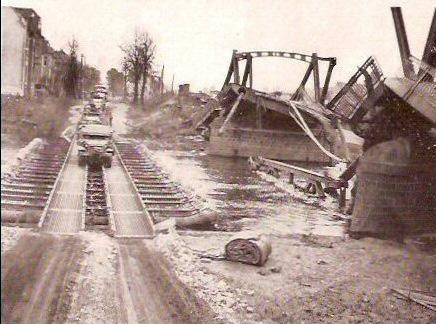
23 April, 1945
Today we were told that as far as we were concerned the fighting in Europe was over. The reason for this was that the Ninth Army had reached its objective and had orders to hold fast where they were. We felt pretty good about
that. We moved out of Blankenburg to our area of occupation.
And the 3rd platoon drew Heimberg, the second drew Benzingerode, while the first, fourth and headquarters drew the large town of Wernigerode. Guard duty was very heavy, and there were many road blocks to man, but war had for the most part passed this area, and there was plenty of time for rest and relaxation, while we followed the war over the radio and in the papers, and sweated out the CBI. The company began to grow instead of dwindle, as men began to return from the hospitals. And higher headquarters began to worry about the men having too much free time, and turned their attention from the business of fighting a war to mapping a training schedule, and holding formations and inspections.
8 May, 1945
We moved from Wernigerode to Wahmbeck, where we celebrated V. E. Day, six months almost to the day after we had steamed out of New York harbor, bound for Europe. We had received praise for our work both as a unit and as individuals. Pfcs Timothy Burke and Herbert Walker received Silver Stars for their patrol work and for their aggressive action against the enemy. Pfc. Bowman received the Bronze Star for action at Trieste, Pfcs Hemandez and Steward received the Bronze Star for their patrol work, and Pfc. White received the Bronze Star for aggressive action against the enemy. Lt. Bell received one for the job he did taking over the company in combat. Others, though not officially recognized for their deeds, won the gratitude and admiration of their buddies for performing magnificent jobs in the heat of
combat, which will not be forgotten, and we have tried as much as possible to recognize some of these in this history. Others fell by the wayside, some to return to us later, others never to return. We are proud of our outfit, of ourselves, and of our buddies. That’s the story.
The following is a copy of the unit’s Commendation:
Office of the Commanding General
11 March, 1945
SUBJECT: Commendation.
TO: Commanding General, 8th Armored Division, A. P. O. 258, U. S. Army. (through channels)
1. During the period 3-10 March. 1945, elements of your command including Combat Command “B”, Company
“C”, 18th tank battalion, and the 88th Reconnaissance Squadron were attached to this Division for operation against the enemy in the vicinity of Lintford, Rheinburg, and the Wesel bridgehead. In every instance these units carried out their assigned mission and attacked the Germans with a tenacity which aided to a great extent in the victories and successes attained in this area.
2. The performance of Combat Command “B” was especially outstanding. This unit attacked with such great ferocity and utter disregard for danger and casualties that the enemy was not only surprised but were driven with utmost speed from strongholds which they did not intend to give up. This speed and determination to close with the enemy is most commendable and reflects great
H E A D Q U A R T E R S 5 T H I N F A N T R Y D I V I S I O N
A P O 3 5 U. S. A R M Y
©
2023 TWISTED BOMBSHELL
credit upon the officers and men of this unit.
3. Please extend to your units, who have operated with this Division for the past few days, my most sincere appreciation for their fine work and my commendation for their attainments.
PAUL W. BAADE

General U. S. Army Commanding.
THE FRONT LINE
CHAPTER 5
dation. I concur fully and heartily in the contents of this letter. I wish to add my congratulations and thanks to the officers and men of your Division for the aggressive and determined spirit demonstrated by them during these operations.
JOHN B. ANDERSON
16 March, 1945
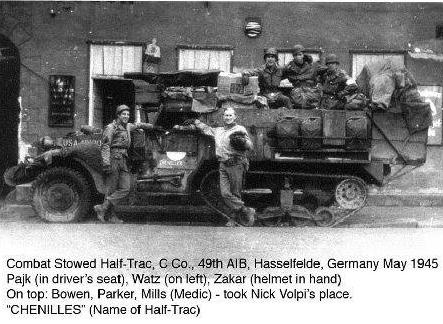
TO: Commanding General, 8th Armored Division, A. P. O. 258, U. S. Army
It is with pleasure that I forward this letter of commen-
H E A D Q U A R T E R S X V I C O R P S A. P. O. 197 U. S. A R M Y
Major
Major General, U. S. Army Commanding.


CHAPTER 6 LIBERATION
LIBERATION OF BUCHENWALD
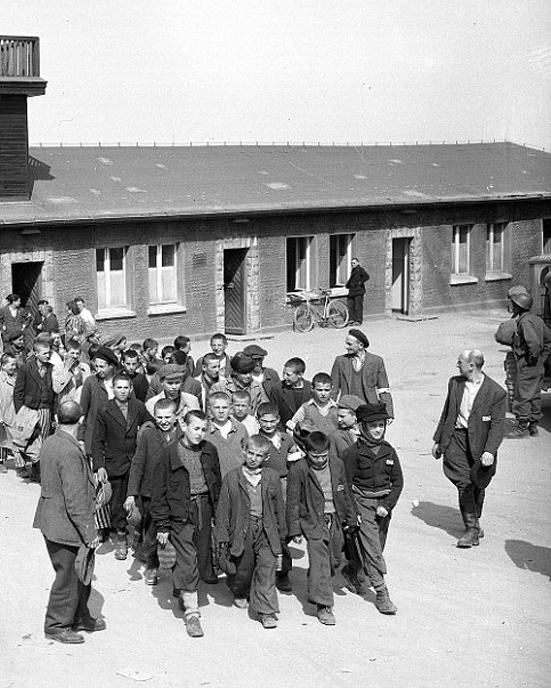 © 2023 TWISTED BOMBSHELL
© 2023 TWISTED BOMBSHELL


© 2023 TWISTED BOMBSHELL
LIBERATION OF BUCHENWALD
CHAPTER 6

Even though it wasn’t mentioned in the scrap book provided by Edward, regarding the 49th Armored Infantry Battalion and their assistance in liberating some of the sub camps of Buchenwald, my research found that they and the 8th Armored Division were part of the units that penetrated Germany, part of the units that intercepted distress calls from one of the largest and oldest concentration camps, and part of the units that were boots on the ground, physically involved, and on site to arrive, penetrate, and liberate the notorious concentration camps of Buchenwald. Let’s do an overview of Buchenwald and you will see how important it was for the Allied Forces and the Front Line to keep pushing forward into Germany as fast as they could, not only to end the war, but to save thousands of lives.
Between 1933 and 1945, Nazi Germany and its allies established more than 44,000 camps and other incarceration sites. The locations were used for forced labor, detention of people that were deemed to be “enemies of the state”, and mass murder. Buchenwald was one of the oldest and largest concentration camps established by the Nazis. The camp was constructed in 1937 and built by the prisoners themselves as part of their punishment. Buchenwald first opened for male prisoners in July of 1937. Women were not part of the Buchenwald camp system until 1944. The main camp was surrounded by an electrified barbed-wire fence (380 volts), 23 watchtowers, and a chain of sentries outfitted with fully automatic machine guns.
HOW IMPORTANT IT WAS FOR THE ALLIED FORCES AND THE FRONT LINE TO KEEP PUSHING FORWARD INTO GERMANY AS FAST AS THEY COULD, NOT ONLY TO END THE WAR, BUT TO SAVE THOUSANDS OF LIVES...
Most of the early inmates at Buchenwald were political prisoners, however in 1938, German SS and police sent almost 10,000 Jews to Buchenwald where they were subjected to extraordinarily cruel treatment, especially while building Buchenwald itself. The official goal of Buchenwald was the destruction of the prisoners (both physical and mental) by forced labor. In building the camp, they were forced to carry huge stones from the local stone quarry to the camp. If they were too small or weak, they were immediately shot by the German SS. Later, dozens of prisoners were chained to huge four-wheel carts and had to pull enormous loads of stone to the camp while being forced to sing. The German SS used to call those prisoners the “Singing Horses”. There was also a road leading up the entry of the camp called “Blood
Street” by the prisoners. Thousands of prisoners died constructing this road.
Shortly after, especially during World War II, the German SS began incarcerating Sinti and Roma, Jehovah’s witnesses, convicts, homosexuals, the homeless, Polish and Soviet POWs, and resistance fighters from many parts of Europe. During World War II, the prisoner population expanded rapidly, and for a camp that was only originally built to house only 8,000, it soon reached 110,000 by the end of 1945. Altogether, almost 280,000 persons are ultimately imprisoned in Buchenwald and its 139 subcamps. After the influx of prisoners, Buchenwald became infamous for torture and death. Regardless of the type of prisoners, the Jews were always treated the worst.

©
2023 TWISTED BOMBSHELL
LIBERATION OF BUCHENWALD

CHAPTER 6
Buchenwald had various locations within the camp that were designated for various types of horror.

Buchenwald survivors told of the German SS murdering inmates by beating them to death, hanging, shooting, by injecting poisons into their hearts, medical experimentation, drowning prisoners in open latrines, working them to death at the nearby stone quarry, and much more. Beginning in 1941, a varied program of involuntary medical experiments on prisoners took place at Buchenwald in special barracks in the northern part of the Main Camp. Medical experiments involving viruses and contagious diseases such as typhus resulted in thousands of deaths. German SS and physicians were testing new serums and viruses on prisoners. Prisoners also reported of other prisoners being dissected, harvested of their organs, and put on display to be utilized for medical research. There were also reports of various prisoners being executed and having their heads
“shrunk” like the method the Jivaro Indians used. All of these reports were verified by evidence found by the Americans who liberated Buchenwald, even the shrunken head of a Soviet POW officer.
Buchenwald also had a location called the “Stable” where the German SS soldiers carried out mass shootings. In the Stable, the prisoners had to enter a fake infirmary room and place themselves under a height gauge. At this time, a German SS soldier, disguised as a physician, would walk behind them
to a height board to record their height. The German SS killed them with a revolver by shooting them through a small hole in the board placed at the height of the prisoner’s neck. The noise of those executions was masked by a radio at maximum volume so the prisoners in the next room did not know that the same fate awaited them merely a few minutes later.
The Jail, also known as the “Bunker”, was located at the entrance to the Main Camp. This was always full to capacity and prisoners were always tortured. In the detention cells they were forced to stand from 3 to 42 days straight in the cell or within groups, standing all day without any room or opportunity to lie or sit, confined in complete darkness, and rarely fed. Almost every prisoner who went to the Bunker
left only when they died. Others were hung from the bars, injected with phenol or air, or sent to the Crematorium to be murdered.
The Crematorium area was the location for incinerating prisoners in large ovens, murders by hanging or shooting, and housed the dissection rooms where various other medical experiments took place. The dead were collected in the mortuary cellar and transported to the oven room with the aid of a lift. After the liberation by the Americans, it was discovered in the basement of the Crematorium that there was another execution room where the German SS had some 1,100 men, women, and adolescents hung on hooks on the walls.
Downhill from the Crematorium near Roll Call Square were replicas of the “Singing Horses” carts and a hanging post where inmates were bound by their wrists behind their back and hung from the posts by their wrists almost like a human totem pole. Roll Call Square is where day in and day out, as many as 20,000 prisoners would line up for roll call at dawn, then shipped off for forced labor. After ten or more hours of hard labor, the procedure was repeated in the evening. They were known to have roll calls that lasted as long as 72 hours straight with no other aim but to terrorize the prisoners. Refusal to participate was punishable by death. The prisoners were forced to remain standing and face the windows of the Bunker, through which they could hear the screams of the tortured victims inside. On Roll Call Square, half-naked prisoners were flogged and fellow prisoners were hung on the gallows for all to see.
The camp gate was made of wrought iron and on the inside of the gate facing the camp it bears the inscription “Jedem das Seine”, based on an old Roman philosophy of “To live honorably, not to injure another, to give each his due”. The German SS interpreted this as “to give each his due” as in the right of the members of the “superior race” to humiliate and destroy others. They made sure that it was in plain view for all of the prisoners standing in Roll Call Square to see it at all times.
The reports of torture and death get much worse. Buchenwald even had its own building for stripping and tanning human skin. Prisoners would report that there were always stacks of human skin, both with and without camp tattoos. The prisoners reported that in Block 2 there was always a traffic of soldiers and it was called the “Pathology Block”. Prisoners reported always seeing soldiers leaving Block 2 carrying piles of human skin. Prisoners reported that people were always getting skinned and the skin was then tanned and turned into book covers, gloves, hand bags, wall decorations, and even lamp shades. All of which were found when the Americans liberated Buchenwald. Prisoners who worked near this location reported that all of the things made were “gifts” ordered by German high command.
As Soviet forces swept through Poland, the Germans evacuated thousands of concentration camp prisoners from western Poland. After long, brutal marches, more than 10,000 weak and exhausted prisoners from Auschwitz and Gross-Rosen, most of them Jews, arrived in Buchenwald in January 1945. In early April 1945, as American forces approached
©
2023 TWISTED BOMBSHELL
LIBERATION OF BUCHENWALD
CHAPTER 6
the camp, the Germans began to evacuate some 28,000 prisoners from the main camp and an additional 10,000 prisoners from subcamps of Buchenwald. The Germans were known to evacuate thousands of prisoners, prior to the Allied Forces arriving, in gruesome “death marches” where the majority of prisoners would die in transport or were simply killed and buried in unknown mass graves if time permitted. At Buchenwald, many children hid and fled in underground holes within the camp to avoid being taken on the death marches. About a third of the Buchenwald prisoners died from exhaustion en route or shortly after arrival from the death marches or were shot by the SS. Some were loaded on trains, sent to other concentration camps such as Dachau, and were never seen again. It was reported that almost 30,000 people died or were killed in the last few months of Buchenwald.
However, many lives were saved by the Buchenwald “resistance” right before the Americans liberated the camp. The Buchenwald resistance were prisoners and members that held key administrative posts in the camp that were operating secretly within the camp waiting for the day to escape or a chance at liberating the camp when Allied Forces were close enough. When they heard the Americans were getting close to Buchenwald, they obstructed Nazi orders and delayed the evacuation. On April 11, 1945, starved and emaciated prisoners and resistance members stormed the watchtowers, seizing control of the camp. This underground prisoner organization seized control of Buchenwald to prevent further atrocities by the retreating German SS camp guards.
In a little more detail, the research identified that the Buchenwald resistance members were known as the


International Camp Committee led by communists and they were prepared to greet U.S. forces. They were listening clandestinely to radio reports and the inmates realized the Americans were close. The members of the resistance had a secret short-wave transmitter and small generator built and hidden.
On April 8, 1945 at noon, two of the prisoners sent a Morse code message to the nearby Allied Forces in English, German, and Russian. The message stated “To the Allies. To the army of General Patton. This is the Buchenwald concentration camp. SOS. We request help. They want to evacuate us. The SS want to destroy us.” The message was repeated several times. Luckily enough, the Americans did receive it. The resistance had done everything they could do to hinder the evacuation. The Morse coded message was their last hope. Not long after, the resistance intercepted a message from German high command that they were sending explosives to blow up all evidence of the camp including all of the prisoners. The resistance, posing as German SS soldiers responded that it was too late and the remaining German SS guards had already fled.
When the last of the German SS fled late in the morning of April 11, 1945, the prisoners distributed weapons long hidden from the Germans (including rifles, machine guns, and hand grenades) and took control of the watchtowers. A white flag was hoisted. In the adjacent woods, inmates now armed captured more than 70 German SS men. Later that afternoon, American forces entered Buchenwald. Soldiers from the Third U.S. Army Division found more than 20,000 people in the camp, 4,000 of them Jews. With the
camp now secured, American personnel had the opportunity to observe and finally understand the depth of the terrors the Nazis implemented. They discovered that everything that was being reported by the prisoners was true, accurate, and more than anyone could have imagined.
With the help form the prisoners, American soldiers were able to pinpoint the scattered sites of years of murder and executions and photographed the six ovens in the camp’s crematorium, with human remains still present. The American soldiers discovered the horrors found in the various buildings and found hundreds of dead bodies stacked like firewood in open view all around the camp. There were even carts loaded with dead bodies stacked with firewood just sitting out in the open. The colossal tasks of documenting and communicating what had occurred in Buchenwald had only just begun for American investigators who ultimately shared the information to the world. The real evil that was occurring at Nazi concentration camps was finally confirmed.
Lengendary CBS journalist Edward R. Murrow was one of those who came to the camp immediately after liberation, arriving on April 12, 1945. Three days later, he sent a broadcast to audiences in the United States a description of what he encountered, a broadcast prefaced with strong warnings about the extreme content therin. These words have become famous. Murrow stated, “This is Edward R. Murrow. Permit me to tell you what you would have seen, and heard, had you been with me on Thursday. It will not be pleasant listening. If you are at lunch, or if you have no appetite to hear what Germans have done, now
© 2023
TWISTED BOMBSHELL
LIBERATION OF BUCHENWALD


CHAPTER 6

is a good time to switch off the radio, for I propose to tell you of Buchenwald.” You can Google Murrow’s radio broadcast and read his full transcript in detail, word for word of what he witnessed at Buchenwald.
By the end of the war, Buchenwald was the largest concentration camp in the German Reich. Approximately 56,000 men, women, and children were murdered or died from maltreatment, exposure, starvation, illness, or heinous medical experiments while in the Buchenwald camp system, the majority of them after 1942. Before the Nazis surrender on May 8, 1945, about 11,000,000 people died in the 520 concentration
camps with the largest group of camp victims being Jews.
Today, the Gate building of Buchenwald is one of the only buildings that remain standing. The clock on the building tower is stuck at 3:15 p.m. and has never been changed. It signifies the time Buchenwald was finally liberated by the Americans from the German SS on April 12, 1945. Three weeks later after the liberation of Buchenwald, the concentration camp of Dachau was liberated. One day after Dachau’s liberation, Hitler committed suicide. On May 8, 1945, Germany surrendered and World War II came to an end.

© 2023 TWISTED BOMBSHELL
LIBERATION OF BUCHENWALD

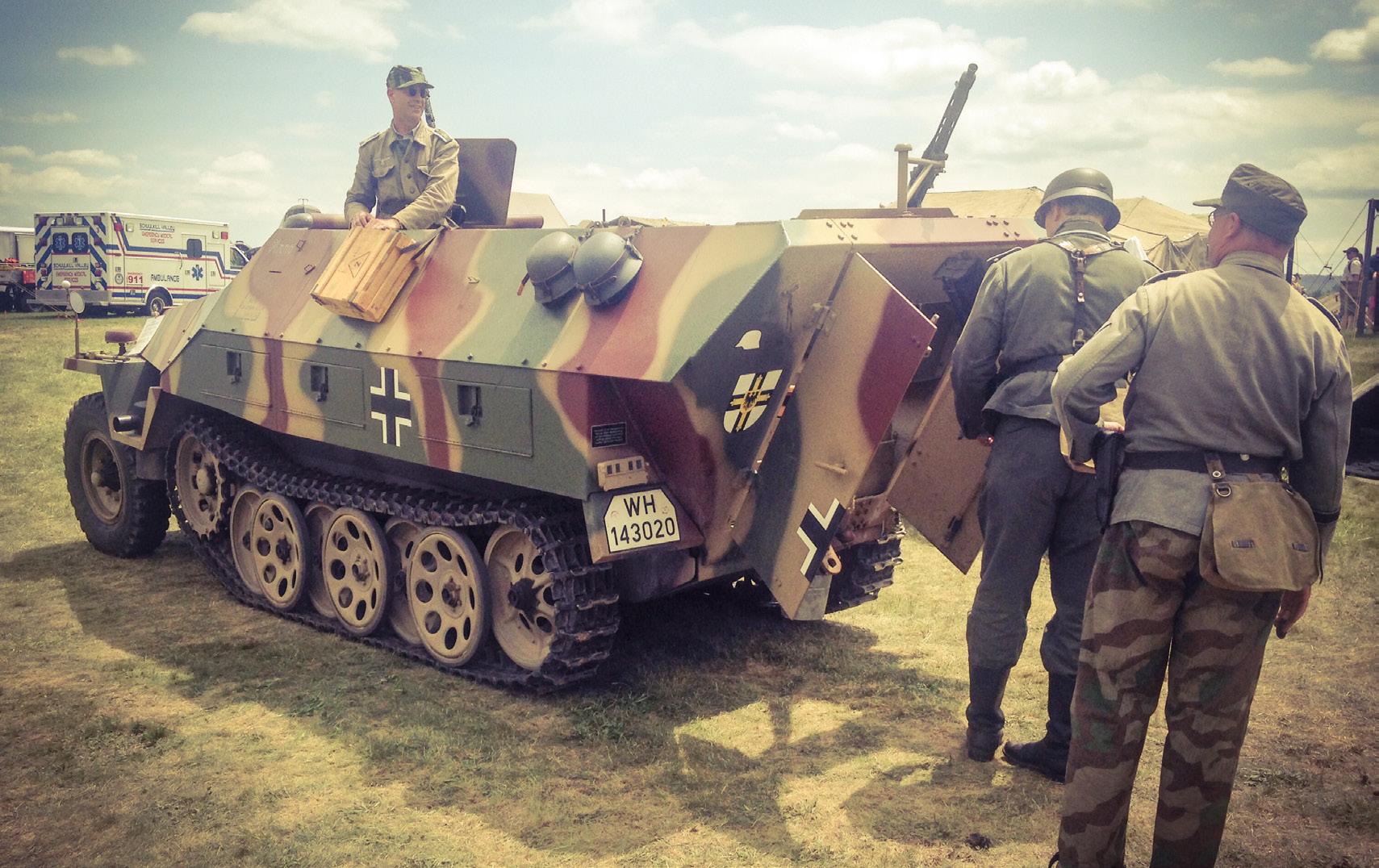

CHAPTER 6


© 2023 TWISTED BOMBSHELL
LIBERATION OF BUCHENWALD
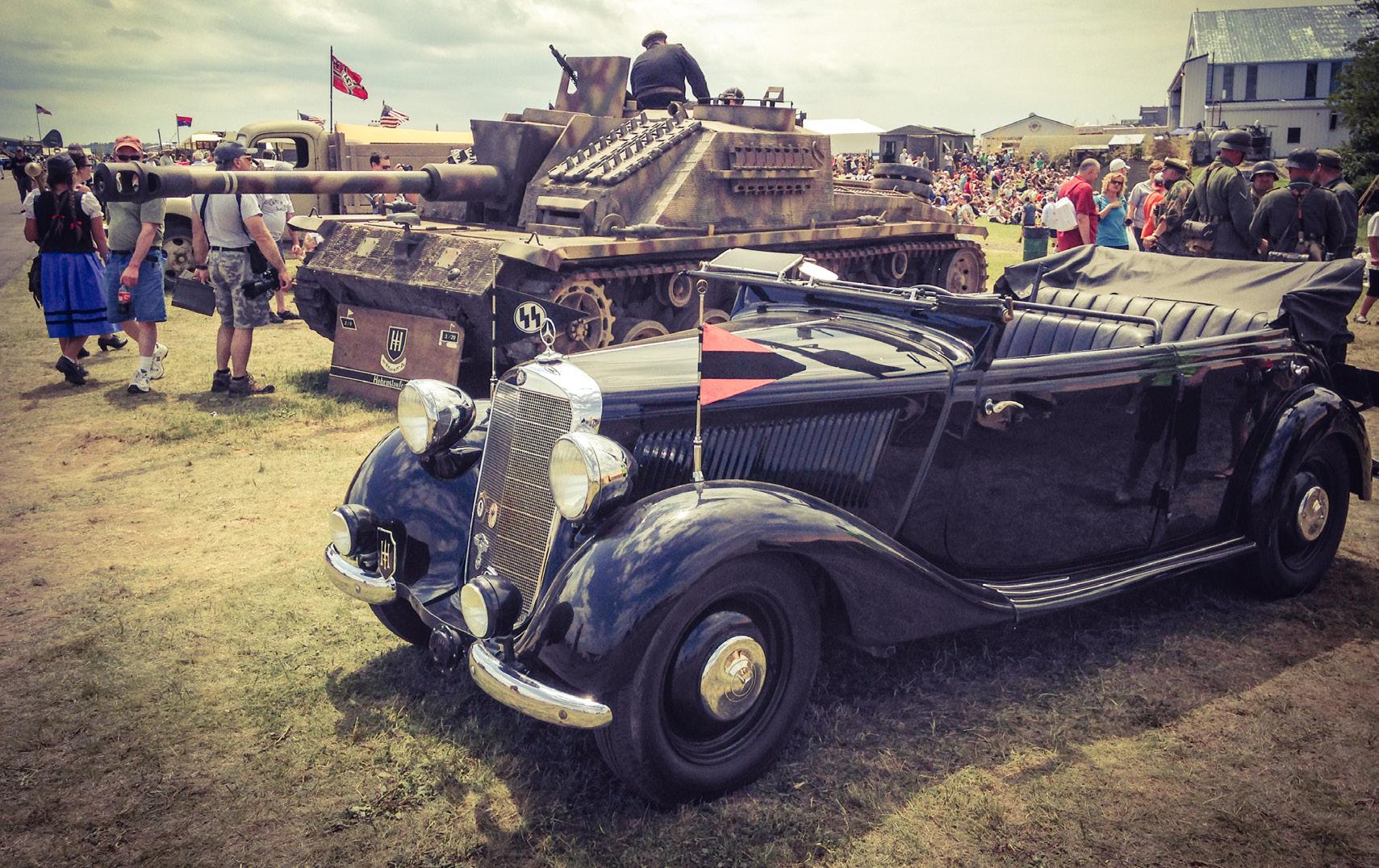

CHAPTER 6



© 2023 TWISTED BOMBSHELL
LIBERATION OF BUCHENWALD

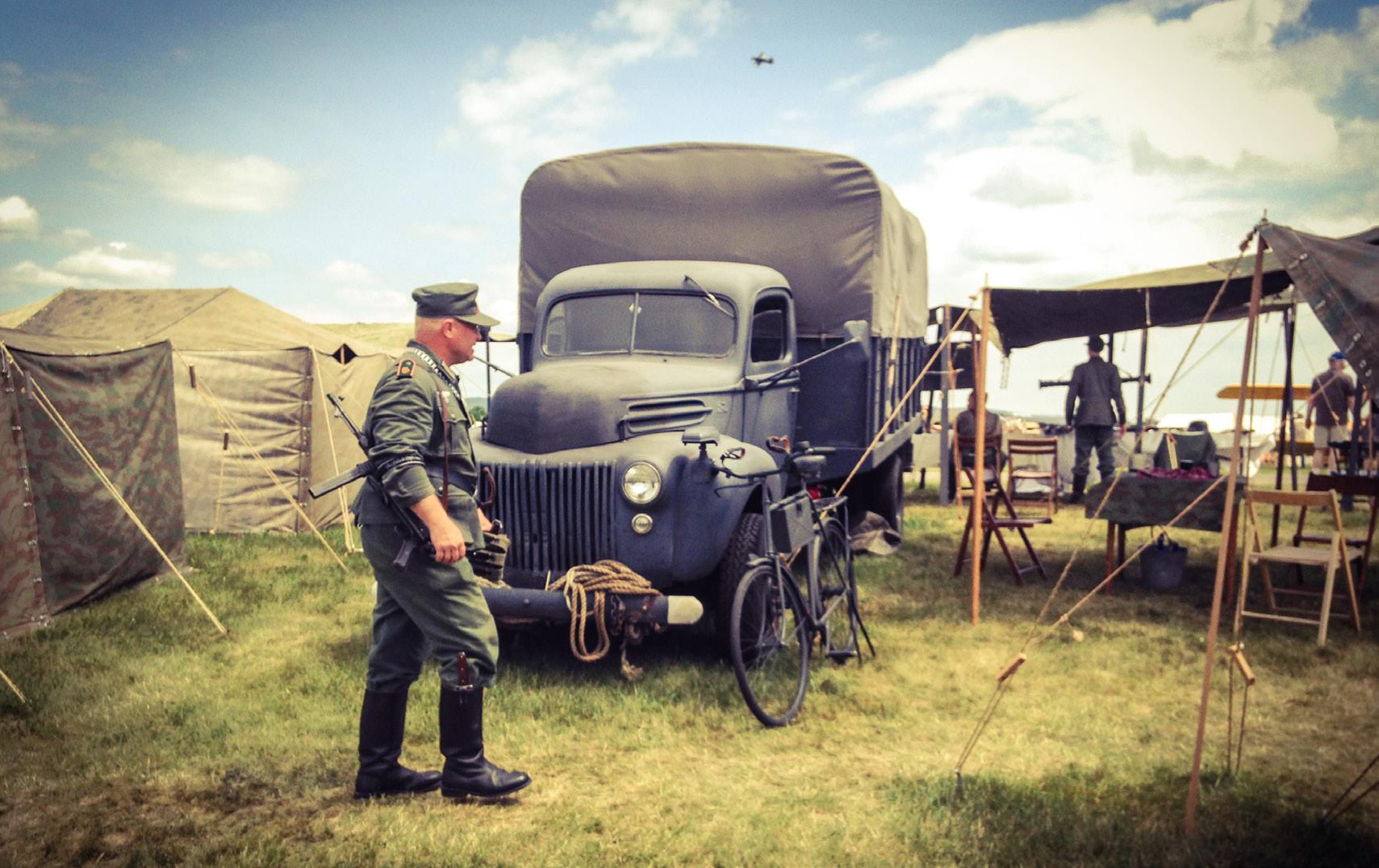
CHAPTER 6





PHOTO GALLERY 49TH AIB
© 2023 TWISTED BOMBSHELL





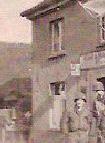
© 2023 TWISTED BOMBSHELL
49TH ARMORED INFANTRY BATTALION
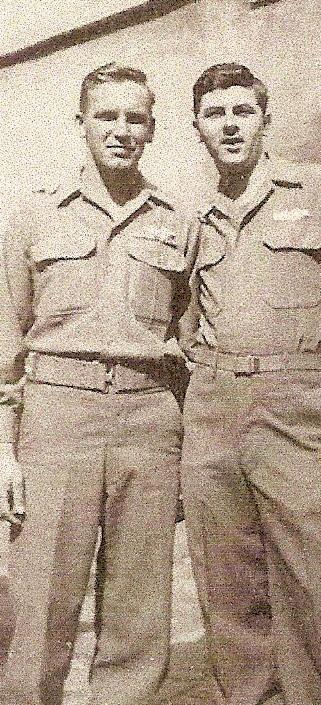

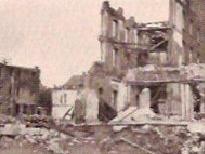
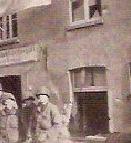



 PHOTO GALLERY
PHOTO GALLERY
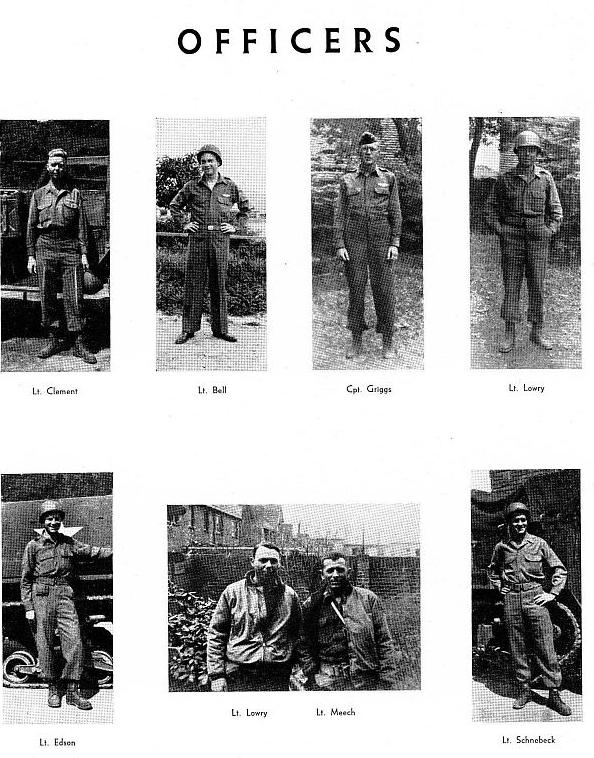
© 2023 TWISTED BOMBSHELL
49TH ARMORED INFANTRY BATTALION
CLARENCE
TIM0THY J. BURKE
WILLIAM C. LOWERY
JAMES C. RANKIN
HERBERT A. WALKER
DONALD KRONOHGER
CHARLES J. RIGHINI
MILAN J. BAGEL
J. D. BOWMAN

JOHN F. CAPPELLETTI
WILLIAM A. DOYLE
ALBERT C. HERNANDEZ
GEORGE E. STEWART
JAMES A. TAYLOR
MATTHEW F. WHITE
ROBERT A. WILLIAMS
A W A R D S D I S T I N G U I S H E D S E R V I C E C R O S S
PHOTO GALLERY
S I L V E R S T A R
E. SMITH
E S T A R
B R O N Z
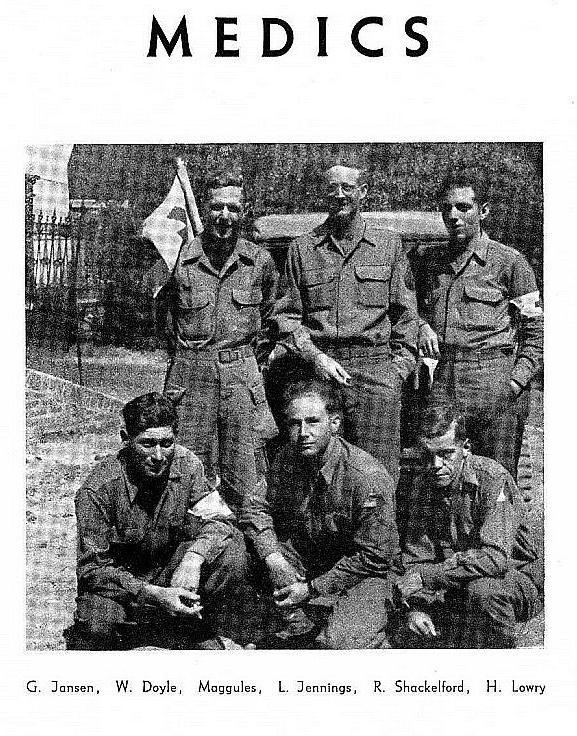
© 2023 TWISTED BOMBSHELL
49TH ARMORED INFANTRY BATTALION
PHOTO GALLERY
P U R P L E H E A R T
MILAN J. BAGEL (2)
NORMAN L. JUSTUS
GAIL E. BECK
TIMOTHY R. KENNEALLY
DIDDIE BLANC

HARRY J. KESSEL
PETER BLESKAN
ELMER E. KOMBRINK
J. D. BOWMAN
GEORGE N. KONOPASEK
ELBERT G. BREWSTER
BERNARD H. KRAMER
HUGH L. BRUNSON
MATHIAS LE PAGE, JR.
FREDRICK J. BRIDGES
GEORGE E. LEVElLLE
GEORGE P. BUCKLEY
DAVID L. LOW
GUSTAVE J. BURTSCHER
WILLIAM C. LOWERY
WILLIAM M. COOKE
BARRY W. MALEY
DWIGHT W. CRAIG
LEO E. MALLET
ROBERT S. CRAIG
JACK C. MeDADE
ERROL B. DAVIS
ERNEST M. MELENDREZ
LEROY J. DAVIS
LEWIS R. MORGAN
FRANK L. DOWDY
GLEN C. PARMELLE
RAYM0ND V. FISHER
MIKE E. PAVICH
ROBERT S. FLUM
ROBERT J. PINKARD

© 2023 TWISTED BOMBSHELL
49TH ARMORED INFANTRY BATTALION
PHOTO GALLERY P
CLARENCE P. FREITAG
JAMES C. RANKIN
JAMES W. FRISCH
TOYE RICHMOND
LLOYD M. GILKEY
SILVI0 D. SALVESTRIN
WILLIAM J. GORDON
THOMAS A. SCHWARTZ
LEON E. GRAY
RAY SENA J R. (3)
ROGER L. GREENE
ALBERT SHAPIRO
CARROL G. GUINN
SIDNEY SILVERSTEIN
MARTIN A. HALTTUNEN
FRANK SPOSITO
ROBERT E. HARDEN JR.
LAVON D. SWANK
LLOYD J. HAYCRAFT
ROBERT C. SWENSON
JOHN W. HEATH
EDWARD TAYLOR
ANTON W. HEINTZ
ANDREW J. TRIANO
ROBERT D. H0LT
LAWERENCE B. TWICKLER
MICHAEL M. HOLZMAN
GEORGE W. WEILBACHER
GEORGE L. HUTSON
MICHAEL M. WERNER
DORLAND M. JACOBS

ROBERT A. WILLIAMS
CHARLES A. ZINDERSTEIN III
R P L E H E A R T
U

© 2023 TWISTED BOMBSHELL
49TH ARMORED INFANTRY BATTALION
PHOTO GALLERY
49th Armored Infantry Battalion - Company “B”
Aebenold, James R.
Akin Thomas
Albert, Donald C.
Allen, Gerald B.
Alpert, Everett
Arnett, Hosea A., Jr.
Bahnsen, Allen H.
Baker, James T.
Bates, Noah A.
Battilana, Romeo A.
Beck, Gail E.
Bell, Robert R.
Bergmayr, Hans
Beuten, Robert T.
Blane, Diddie
Bleskan, John
Bleskan, Peter J.
Boisvert, Roland J.
Bolin, Alonzo E.
Bolton, Frank S.
Book, Michael, Jr.
Boston, Oliver H., Jr.
Bowman, J. D.
Boyles, Edward B.

Brackett, Charles S.
Branch, David T.
Breeding, Howard J. .
Brewer, Willis C.
Brewster, Elbert G., Jr.
Brewster, Tom W.
Bridges, Fred J.
Brigance, Edwin G.
Brooks, William E., Jr.
Brown, Frank E.
Brown, Richard W.
Brunson, Hugh L., Sr.
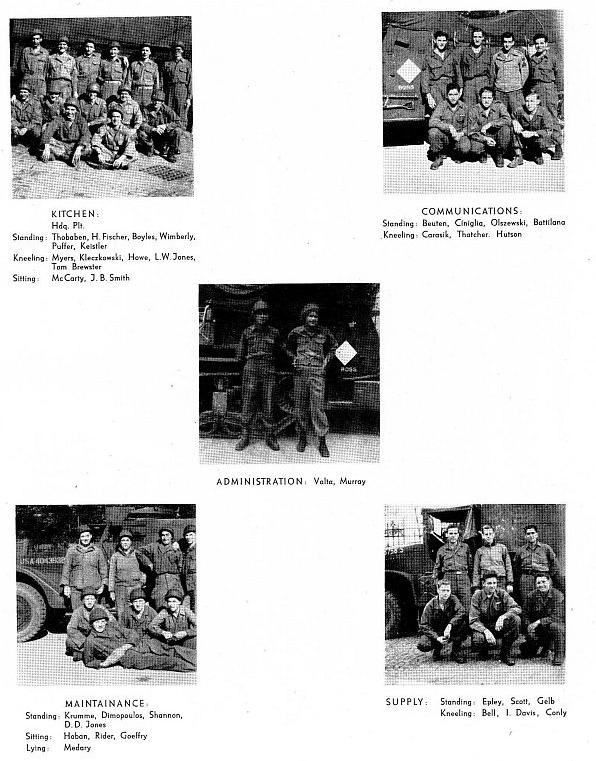
© 2023 TWISTED BOMBSHELL
49TH ARMORED INFANTRY BATTALION
PHOTO GALLERY
Bryanth, Earle F.
Buckley. George P.
Buechlar. Richard W.
Bull, Lloyd W.

Bupp, Curtis G.
Burgess, Clayborn L.
Burke, Timothy J.
Burkett, James F.
Burtscher. Gustave J.
Campanella, Joseph
Cappelletti, John F.
Caputo, Tobio P.
Carasik, William
Cheatham, Virgil L.
Cheever, John A.
Ciniglia, Fredrick P.
Clark, Denzil L.
Clayton, Charles F., III
Conly, Robert R.
Conner, Harold A.
Cooke, William N.
Cooper, William L.
Crafton. Floyd R.
Craig, Dwight W.
Craig, Robert S.
Crenshaw, E. L.
Crowder. Billy L.
Culp, Robert W.
Dale, Clifford J.
Darr, Orland C.
Davis, Errol B.
Davis, Irving
Davis, Joe L.
Davis, Leroy J.
De Decker, James F
Deroner, Sydney A.
Deprey, Norman
Deshaies, Robert
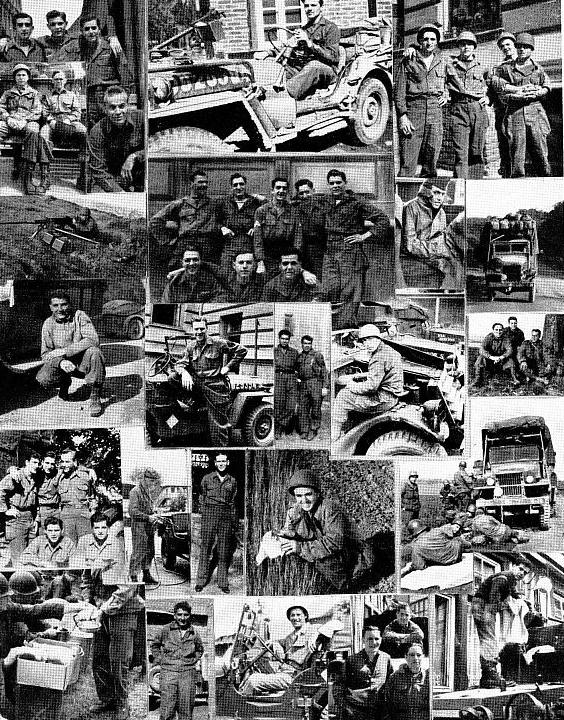
© 2023 TWISTED BOMBSHELL
49TH ARMORED INFANTRY BATTALION
PHOTO GALLERY
Deverter, Richard W.
Dimopoulos, Gust. H.
Dixon, Floyd
Dodd, Claude K.
Doss, William L.
Dowdy, Frank L.
Drake, Donald R.
Drew, Donald G.
Drobitch, Charles J.

Dukes, William H.
Dwyer, Charles J.
Epley, James C.
Evans, Willard R.
Falco, Joseph F., Jr.
Feldman, Solon W.
Ferguson. Howard J.
Ferguson. Russel R.
Filley, William R.
Fischer. Harold A.
Fisher, James H.
Fisher, Raymond V.
Fisher, Samuel M.
Flood. William A.
Flum, Robert S.
Foca, Joseph S.
Freeman. Leroy A.
Frisch, James W.
Freitag, Clarence P.
Frost, Robert H.
Gabrick, Victor R.
Gaines, Robert E.
Gallager, John I.
Galletti, Peter P.
Garrett, Adam L.
Gelb, Julius
Goeffrey, Napoleon G.
Gilkey, Lloyd M.
Gillis, Lawrence A.

© 2023 TWISTED BOMBSHELL
49TH ARMORED INFANTRY BATTALION
PHOTO GALLERY
Gilmore, Edward
Gish, Seth T.

Glass, William C.
Gleason, Ramon E.
Gomien, Robert T.
Gordon, William J.
Gray, Leon E.
Greene, Roger L.
Grose, Harold E.
Gruner, George F.
Guinn, Carroll G.
Hall, James E., Jr.
Halttunen, Martin A.
Hamlin, Marvin C., Jr.
Hamrick, William H.
Hanns, Norman W.
Harden, Robert E., Jr.
Haycraft, Lloyd J.
Heath, John W.
Heinrich, Damon O.
Heintz, Anton L.
Henry, Samuel F.
Hensley, Eddie L.
Hensley, Leonard A.
Hernandez, Albert C.
Herness, William T.
Herrera, Edward
Hesler, Phil
Hoban, Paul F.
Hobbs, Chester T.
Hoffman, Julian
Holbrook, Charles T.
Holt, Robert D.
Horwarth, Donald C.
Hoskins, Dallas O.
Howard, Earl W.
Howe, Everett R.
Howell, Vernon E.

© 2023 TWISTED BOMBSHELL
49TH ARMORED INFANTRY BATTALION
PHOTO GALLERY
Hunter, James L.
Hutson, George L.
Iovine, Joseph C.
Jackson. Warnie W.
Jacobs, Dorland M.

Jameson, John H., Jr.
Jenkins, Francis J.
Jessup, Robert R.
Johnson, Albert
Johnson, Julian E.
Johnson, Gordon L.
Johnson, Leroy M.
Johnson, William P.
Jones, David D.
Jones, Lavern L.
Jones, Lloyd W.
Jones, William R.
Judge, James F.
Justus, Normon L.
Jurewicz, Stanley J.
Kaanta, Voitte K.
Kaigen, Albert E.
Kametz, Robert A.
Kelly, Willie J.
Kessell, Harry J.
Kiel, LaVerne M.
Kiestler, Robert L.
King, John M.
Kiselica, Albert J.
Kleczkowski, Theodore S.
Kombrink, Elmer E.
Konopasek, George N.
Kramer, Bernard H.
Krononger, Donald C.
Krumme, Jefferson B.
La Fleur, Larry J.
Lapierre, Emil C.
Landry, Pierre J.

© 2023 TWISTED BOMBSHELL
49TH ARMORED INFANTRY BATTALION
PHOTO GALLERY
Langill, Walter S.
Leas, Dale H.
Lentine, Peter J.
Le Page, Mathias, Jr.
Leveille, George E.
Linehan, Danial L.
Lindquist, Carl B.
Locastro, Diego J.
Long, Howard A.
Lopez, Alfred
Lovelace, George A.
Low, David L.
Maley, Barry W.
Mallet, Leo E.
Manning, Harvey L.
Marinelli, James V.
Mathies, Wendelin M.
McDade, Jack C.
Medary, Horace
Melendrez, Ernest M.
Micheals, Richard A.
Meinkoth, John C.
Miller, Robert L.
Mills, Walter H., Jr.
Minton, Virgil P.
Momon, Robert E.
Moran, Patrick W.
Morgan, Lewis R.
Morman, Leon H.
Muck, Lyle F.
Murnane, Cornelius F.
Murray, Harry C.
Myers, Morris C.
McCarty, Ross T.
McLeroy, Eugene F.
McNulty, Walter M.
Nolan, Gerald W.
O’Donnell, John J.


© 2023 TWISTED BOMBSHELL
49TH ARMORED INFANTRY BATTALION
PHOTO GALLERY
Oldenburgh, Birchum A.
Olson, Paul
Olszewski, Thaddes W.
O’Ree1, James J.
Paisley, James R., Jr.
Paquette, Robert N.
Pardridge, Fredrick C.
Parrott, Joel A.
Patterson, Harry
Pavich, Mike E.
Perdue, Lester
Perpich, Joseph M.
Peterson, Roy S.
Peterson, P. T.
Pfau, William R.
Pinkard, Robert J.
Porter, Walter V.
Poulson, Stewart C.
Puffer, William H.
Rafalko, Stanley L.
Reed, Earl L.
Reges, Robert K.
Rich, Winfield M., Jr.
Richmond, Toye
Richter, Edward H.
Rider, Ralph L.
Riedmiller, Paul V.
Riehle, Charles G.
Rigg, Kenneth R.
Righini, Charles J.
Robinson, Willard M., Jr.
Robbins, Eddie B.
Sadrovitz, Frank S.
Salvestrin, Silvio D.
Satava, Ralph J.
Scheibel, John W.

Schroeder, Charles L.
Schwartz, Thomas A.

© 2023 TWISTED BOMBSHELL
49TH ARMORED INFANTRY BATTALION
PHOTO GALLERY
Scott, John O.
Sena, Ray Jr.
Shannon, Samuel R.
Shapiro, Albert
Siddens, W. C.
Silverstein, Sidney
Sims, Neal C.
Skovera, Matthew J.
Smith, Jim B.
Smith, Warren I.
Sobol, Bruce J.

Socha, Joseph
Southerland, Raymond T.
Sposito, Frank
Sporcic, Charles
St. Clair, John R.
Steeves, Lawrence J.
Stephens, Homer A.
Sterling, Earl
Stewart, George E.
Streeter, John L.
Strond, Heyward A.
Stutzman, Adolph I.
Sullins, Jack
Sullivan, Eugene J.
Swank, Lavon D.
Swenson, Robert C.
Sykes, Joseph R., Jr.
Taylor, Edward
Taylor, Henry C.
Taylor, James A.
Tercovich, Ronate G.
Thatcher, William
Thobaben, Harold O.
Thorpe, Jack W.
Tiatorio, Antonio
Tilson, Arvil T.
Tolliver, Granville 0.

© 2023 TWISTED BOMBSHELL
49TH ARMORED INFANTRY BATTALION
PHOTO GALLERY
Triano, Andrew J.
Troutman, Charles E.
Turner, Donn W.
Twickler, Lawrence B.
Urban, William
Valentine, Aaron H.
Valta, Gustav E.
Velas, George
Veydt, Robert P.
Waigenfeld, Theodore
Walker, Herbert A.
Wallace, John W.
Weilbacher, George W.
Werner, Micheal M.
Westlake, Richard J.
White, Matthew F.
Williams, Robert A.
Wilson, Earl S.
Wilson, James D.
Wilson, Melvin W.
Wimberly, Thomas J.

Witte, Robert M.
Zinderstein, Charles A. III
Zubovitz. Benjamin J.
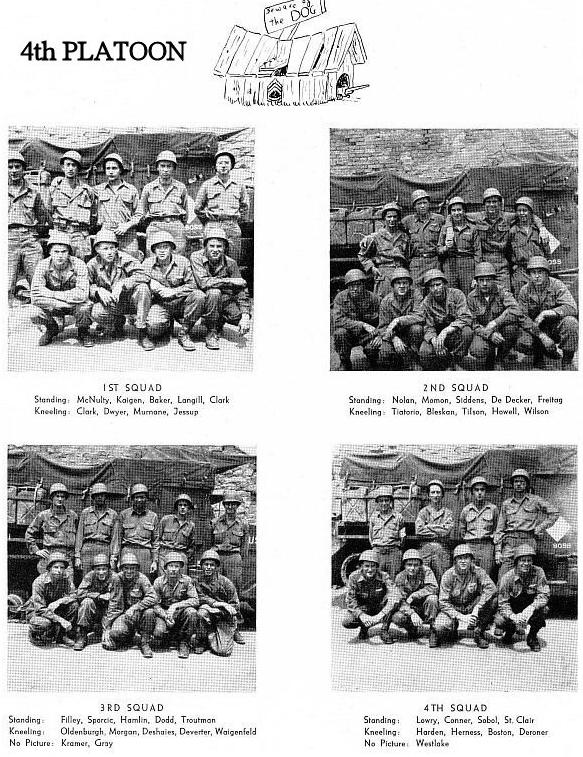
© 2023 TWISTED BOMBSHELL
49TH ARMORED INFANTRY BATTALION
PHOTO GALLERY
Attached Medics
Bagel, Milan J.
Doyle, William A.
Chambers
Holzman, Micbeal M.
Jansen, George M.
Jennings, Lloyd D.
Lowry, Herbert C.
Margules, Saul Z.
Parmelle, Glen C.
Shackelford, Robert A.

Shrum, Cbarlie W.
Officers
Badagliaca, Ralph
Bell, Robert L.
Clement, Robert O.
Cone, Robert E.
Cushman, Harold
Edson, Garcia W.
Griggs, Charles R.
Kenneally, Timothy R.
Lowry, William C.
Meech, Benjamin R.
Rankin, James C.
Schnebeck, Ferdinand H.
Smith, Clarence E.

© 2023 TWISTED BOMBSHELL
49TH ARMORED INFANTRY BATTALION
PHOTO GALLERY

RICHARD DEVERTER
49TH ARMORED INFANTRY BATTALION
The 49th Armored Infantry Battalion was a part of the 8th Armored Division and landed in France in January 1945. They advanced rapidly to the Alsace region.
From here, the “Iron Snake,” or “Thundering Herd,” division was deployed to the Netherlands in late February. In late March, they crossed the Rhine River and moved into the industrial Ruhr region, where it took part in heavy fighting. By war’s end, the 49th Armored Infantry Battalion had advanced to the Harz Mountains. As it moved into central Germany, they were involved in heavy combat and ultimately liberated Halberstadt-Zwieberge, a subcamp of the Buchenwald concentration camp, between April 12 and 17, 1945. More than 5,000 inmates were incarcerated in these subcamps, where they were forced to hollow out massive tunnels and build underground factories.
The 8th Armored Division and the 49th Armored Infantry Battalion were recognized as a liberating unit by the US Army’s Center of Military History and the United States Holocaust Memorial Museum in 1995.
Richard Deverter was assigned to an Armored Infantry Battalion consisting of armored Half-tracks and aided in the resupply of the entire 49th Armored Infantry Battalion. He survived World War II and returned home to Lancaster, Pennsylvania where he married his wife Marie. They have been happily married for 74 years.

Richard Deverter was an unknown hero and from the Greatest Generation. The soldiers of the 49th Armored Infantry Battalion will never be forgotten.

EPILOGUE
© 2023 TWISTED BOMBSHELL
Special thanks to the Contributors to the 49-B History “What’s the Story” which was utilized in the making of most of this book. Special thanks to the writers John Cheever, John Jamison, Dick Beuchler, and William Thacher.


Special thanks to Bruce Sobel, John King, and Daniel Linehan for the graphics and mural. Special thanks to John Streeter, Horace Medary, Roy Peterson, and Dick Brown for Squad photos. Special thanks to Eugene Sullivan and Robert Gomien for unit records.
This book was made in loving memory of all the members of the 8th Armored Division and the 49th Armored Infantry Battalion.
May the memories of the “Thundering Herd” live on forever and may they rest in peace.
TWISTED BOMBSHELL
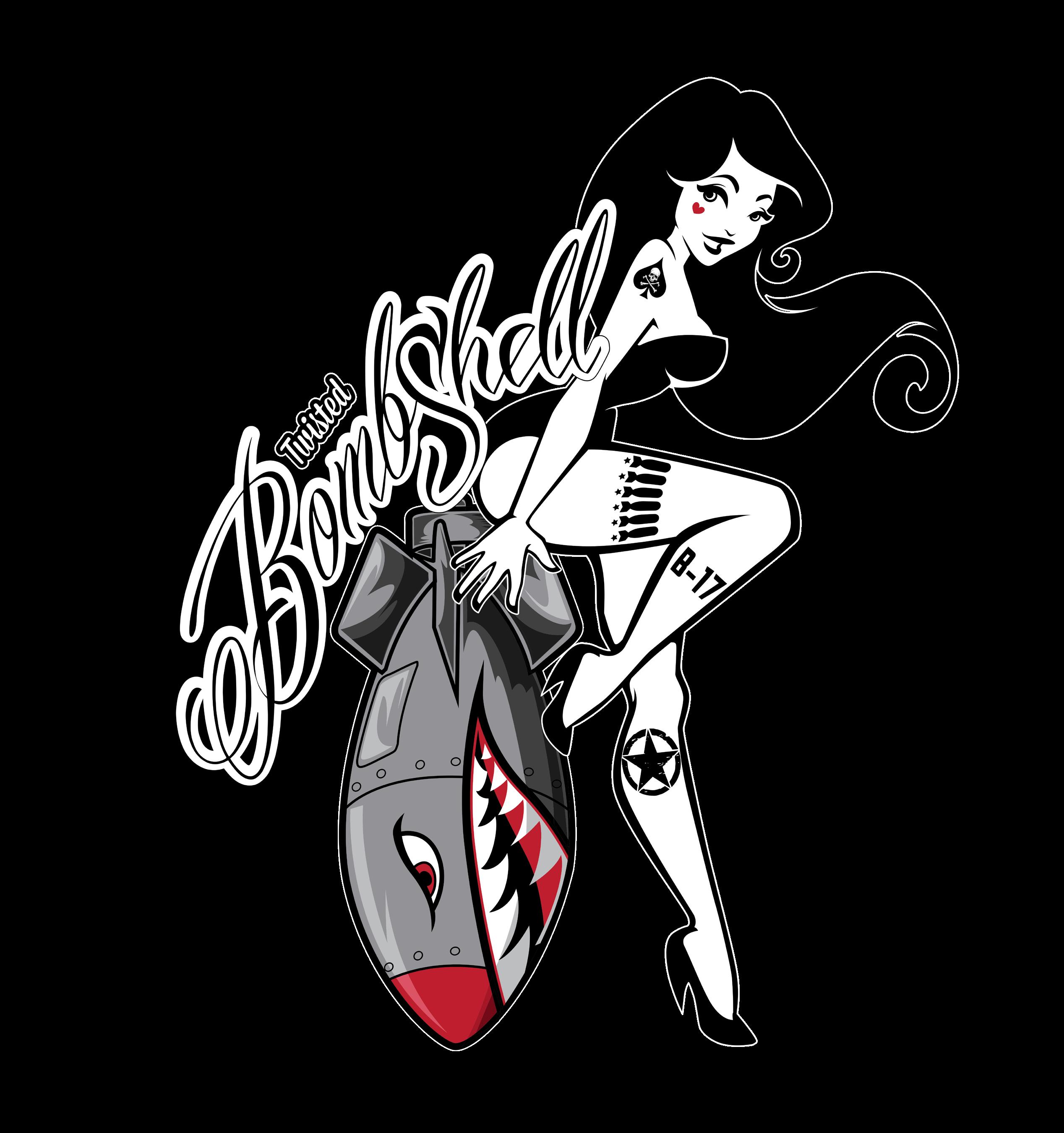
TWISTED BOMBSHELL


 - Daniel Ramey
- Daniel Ramey












































































































































 © 2023 TWISTED BOMBSHELL
© 2023 TWISTED BOMBSHELL



















































